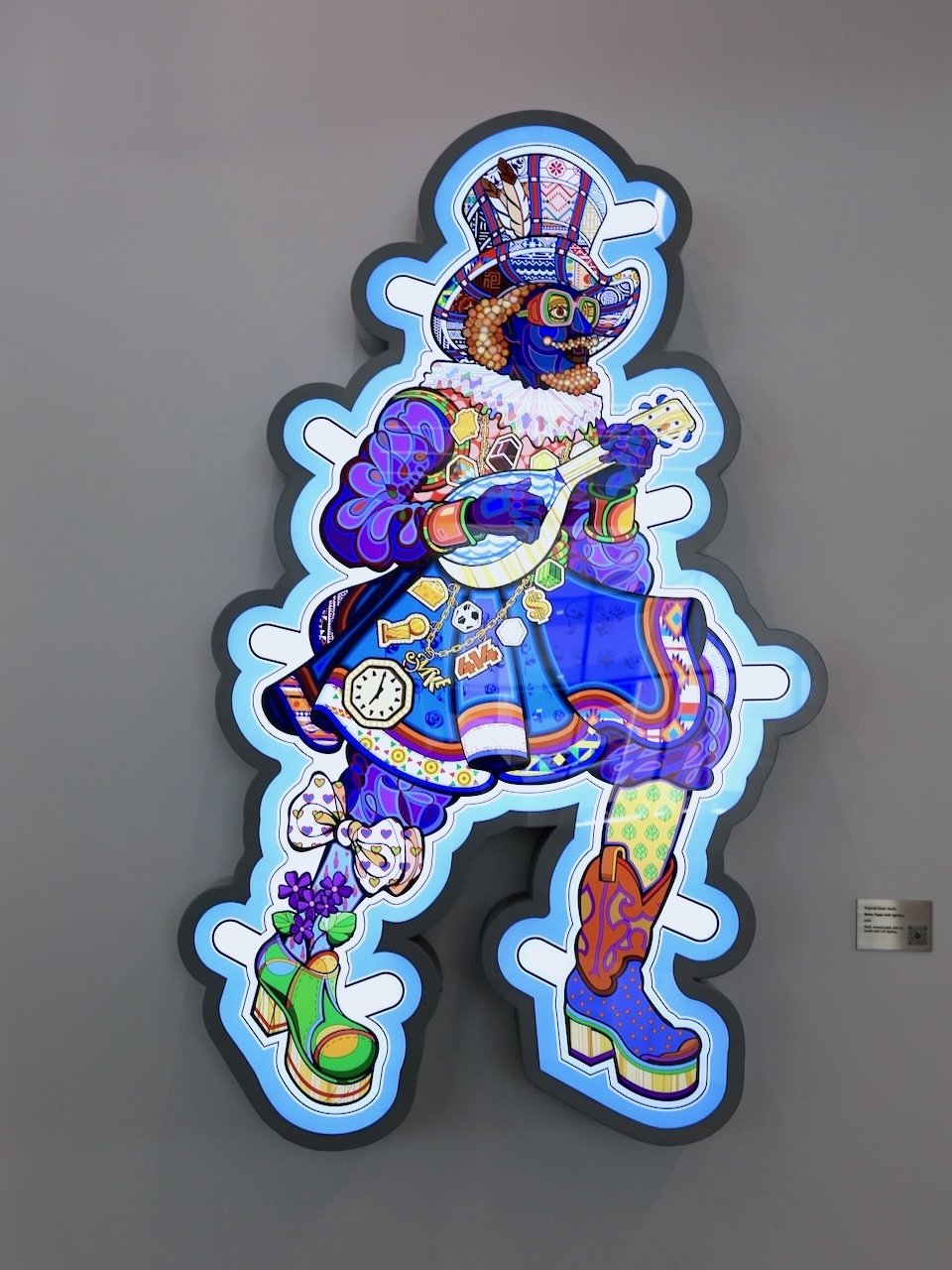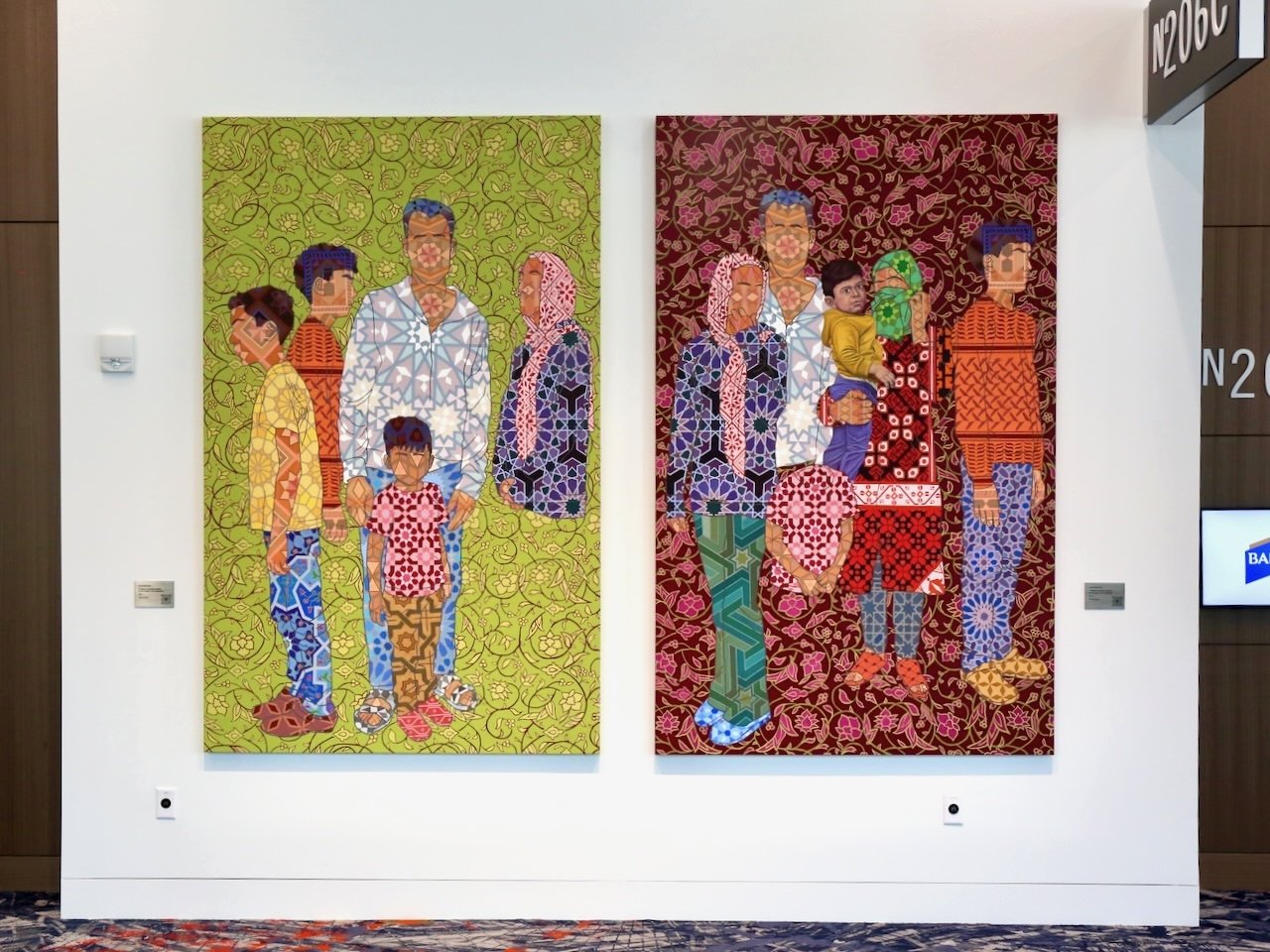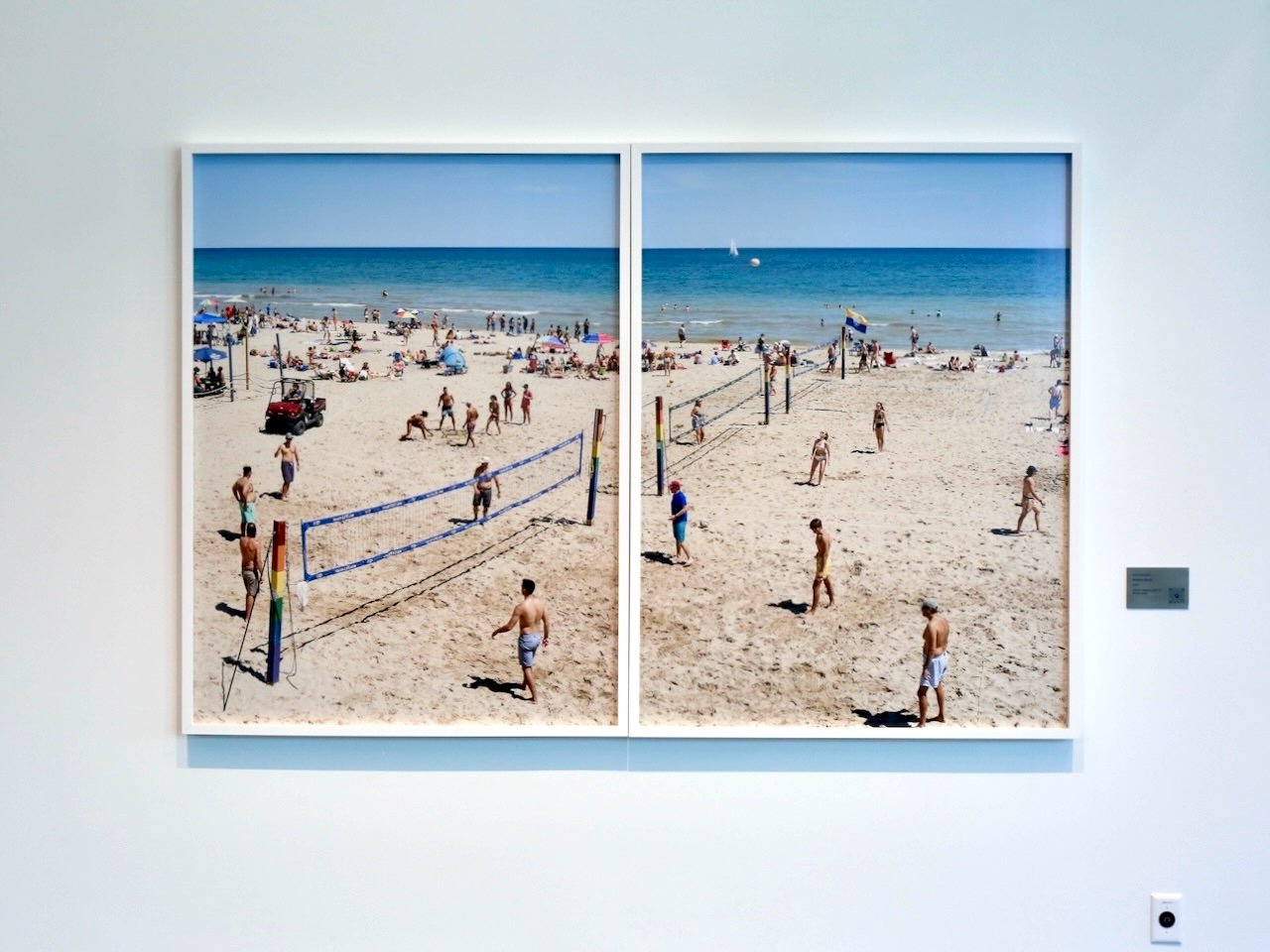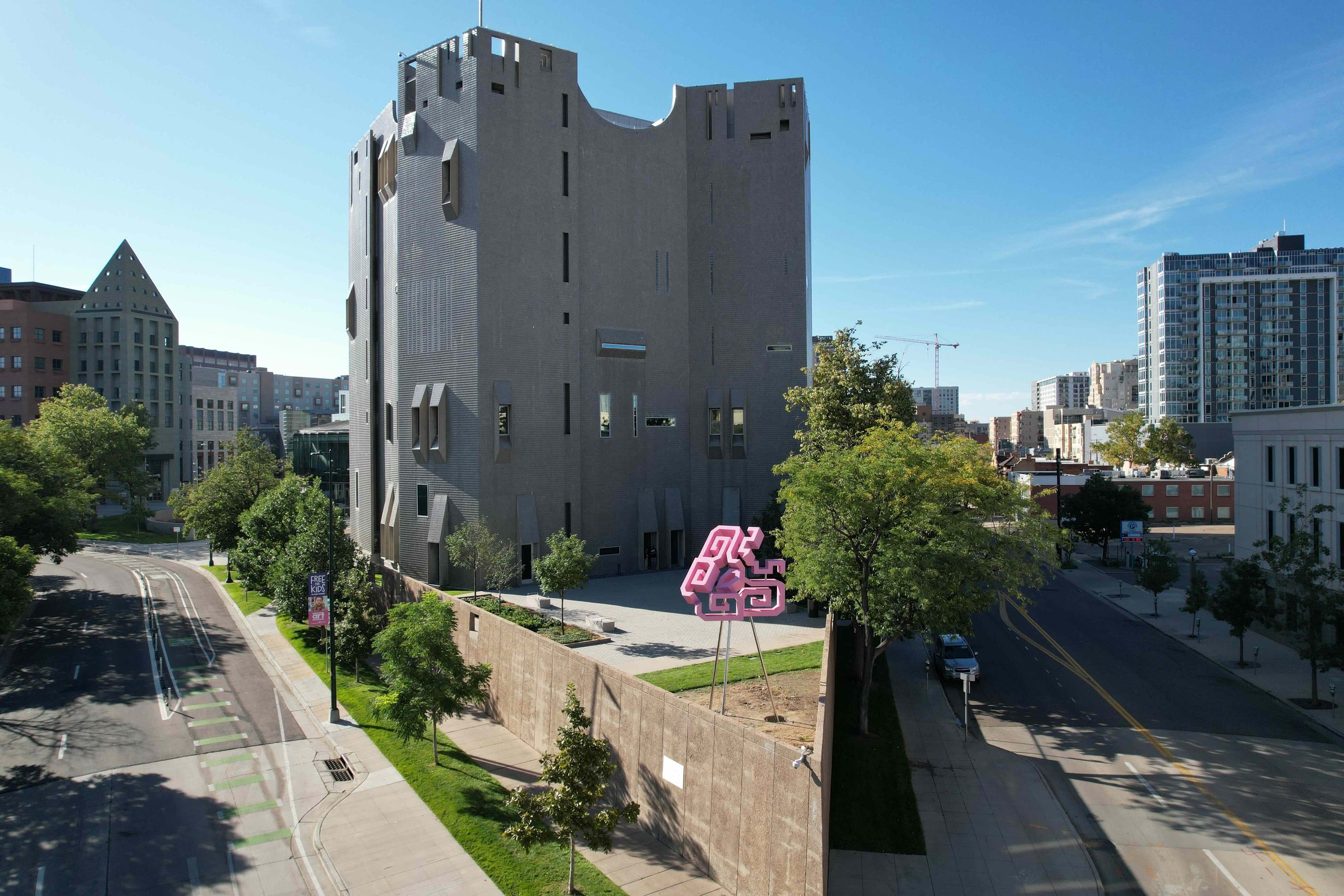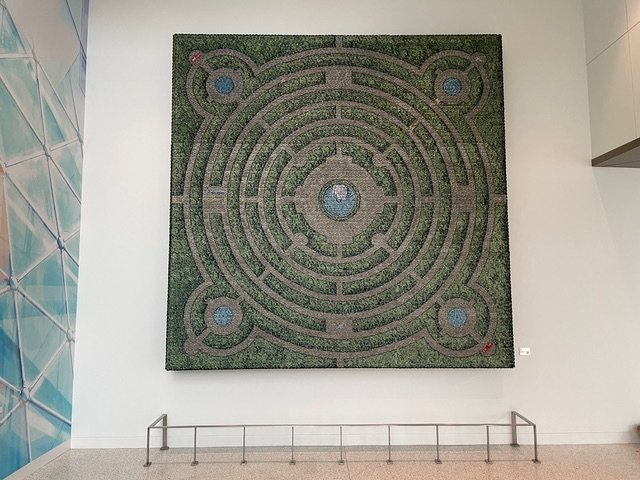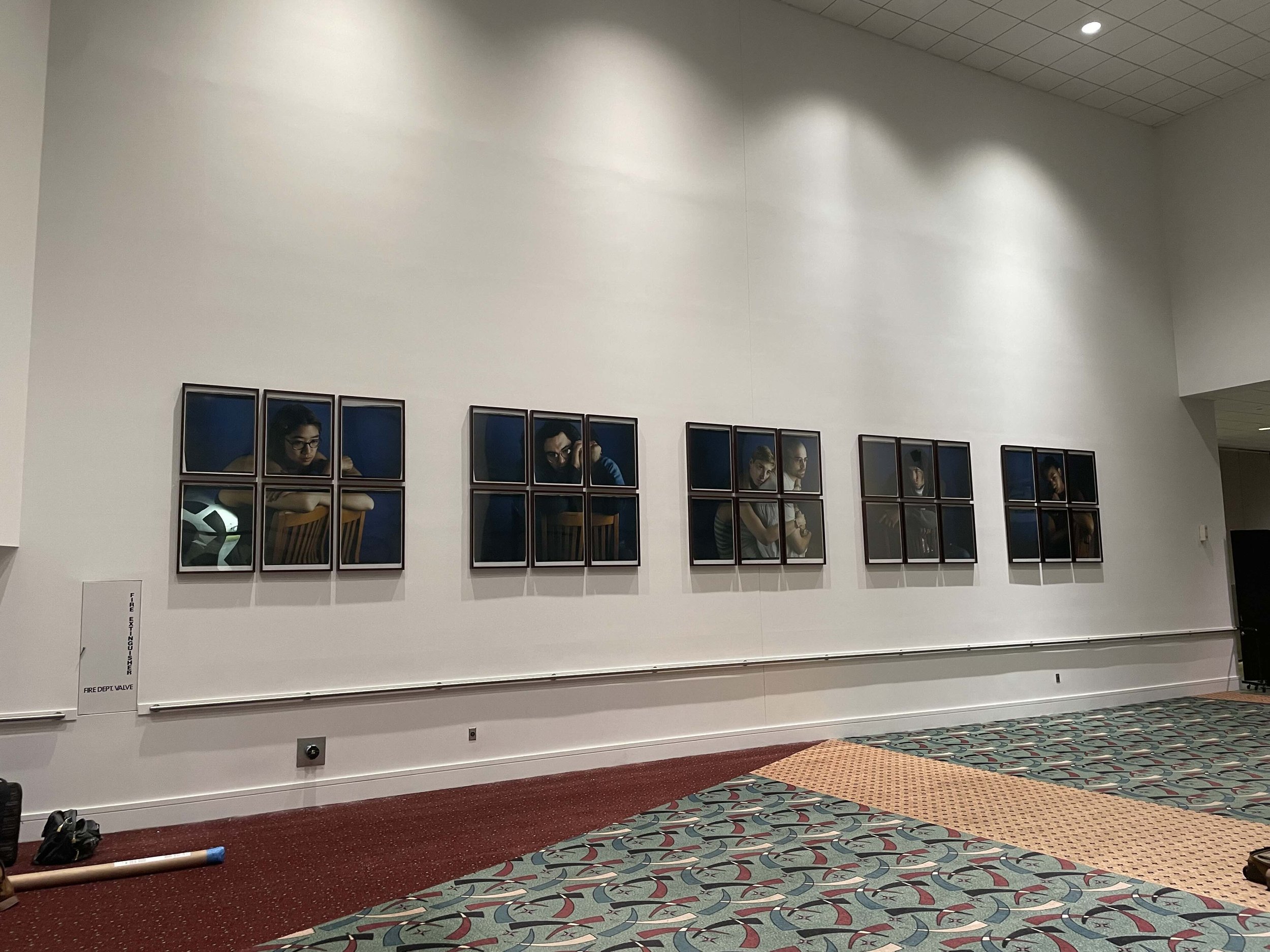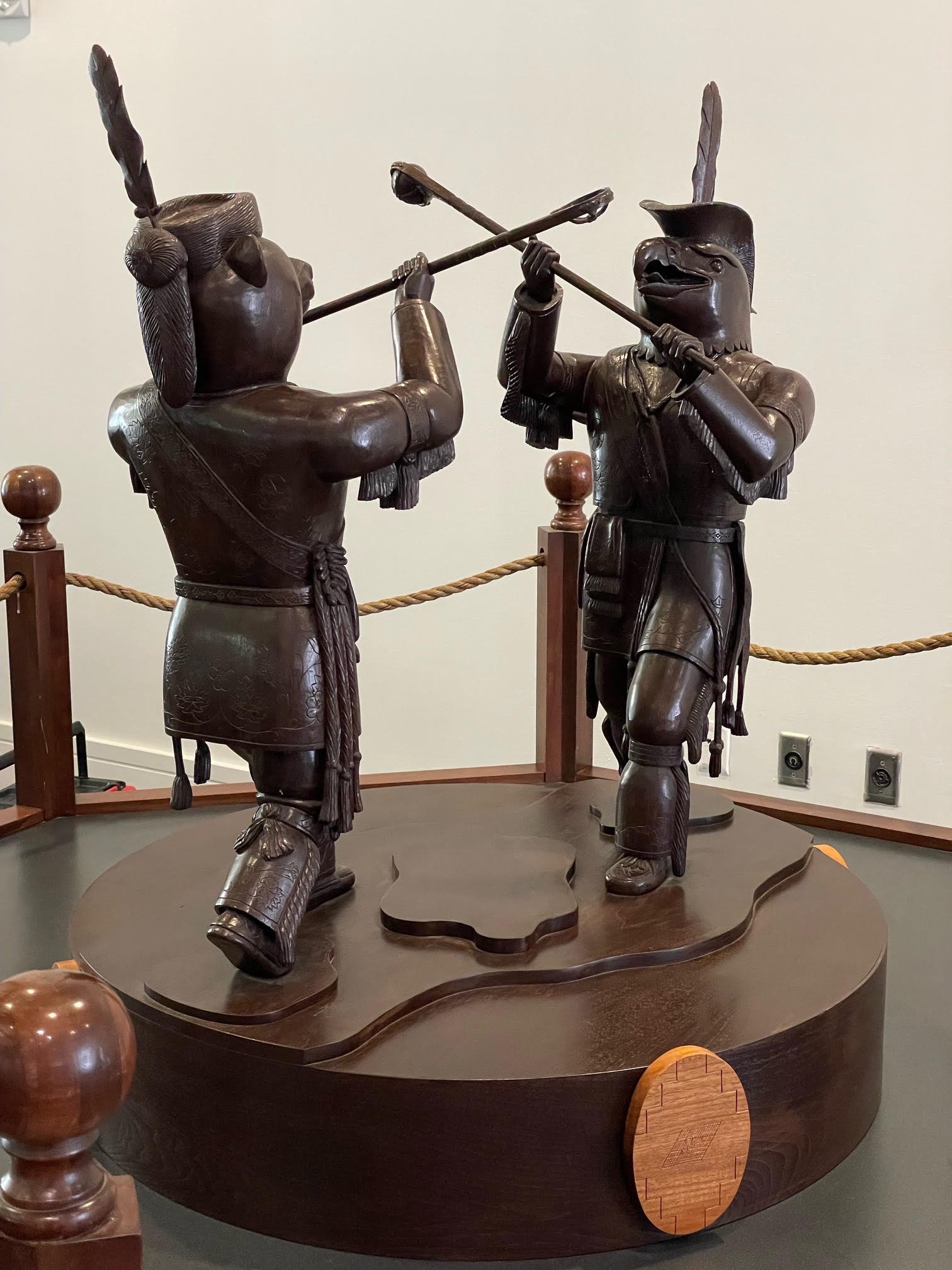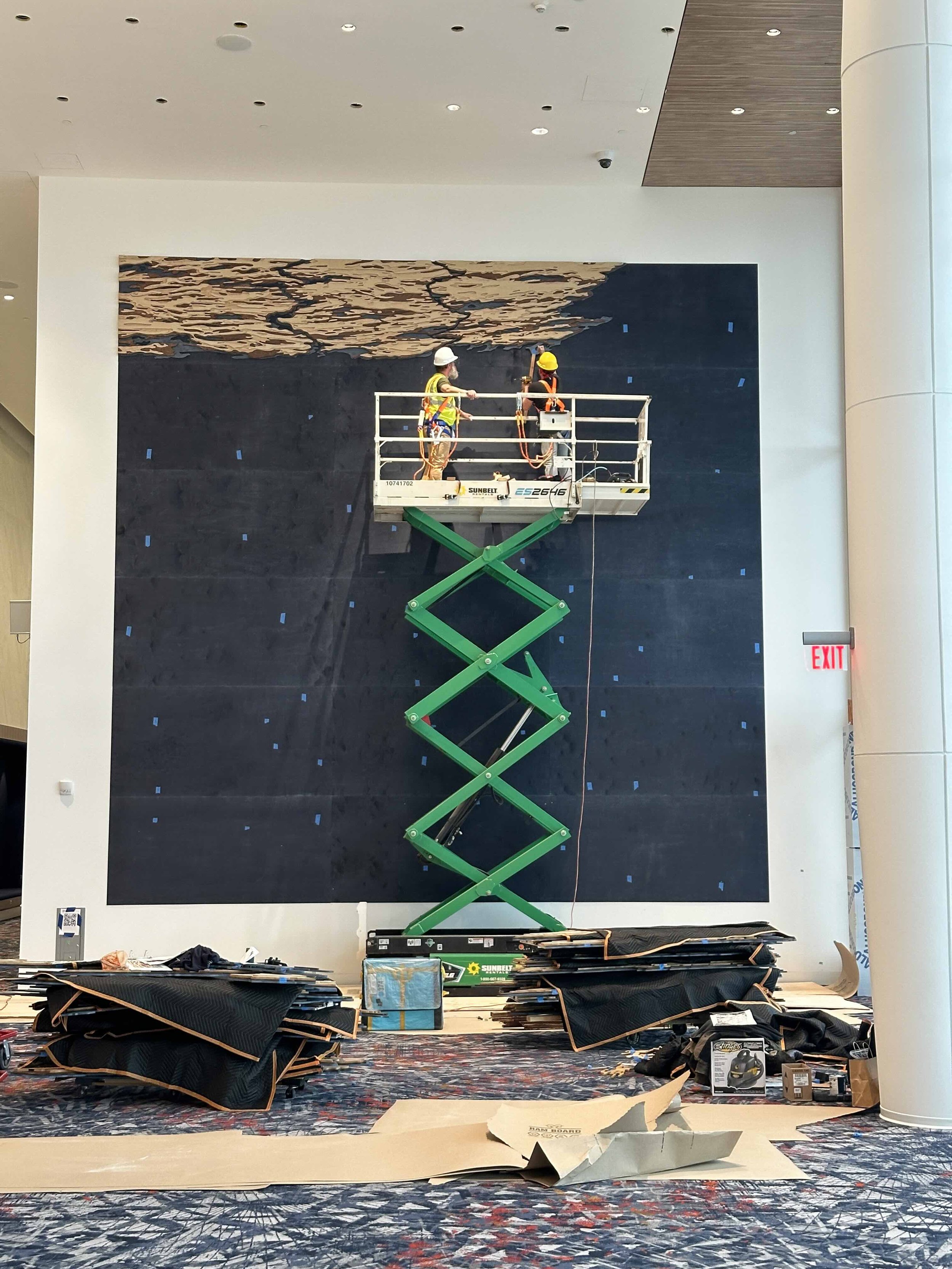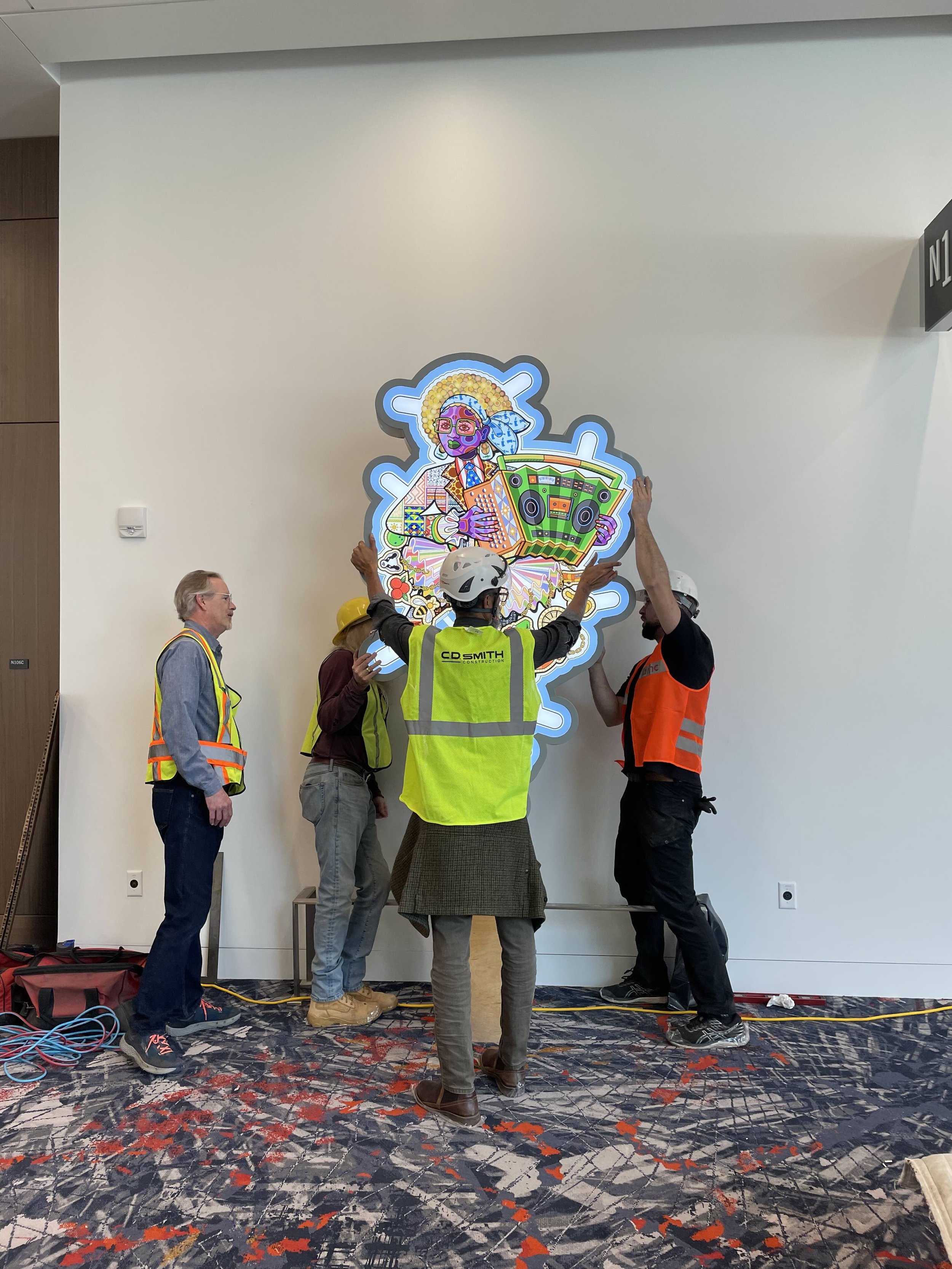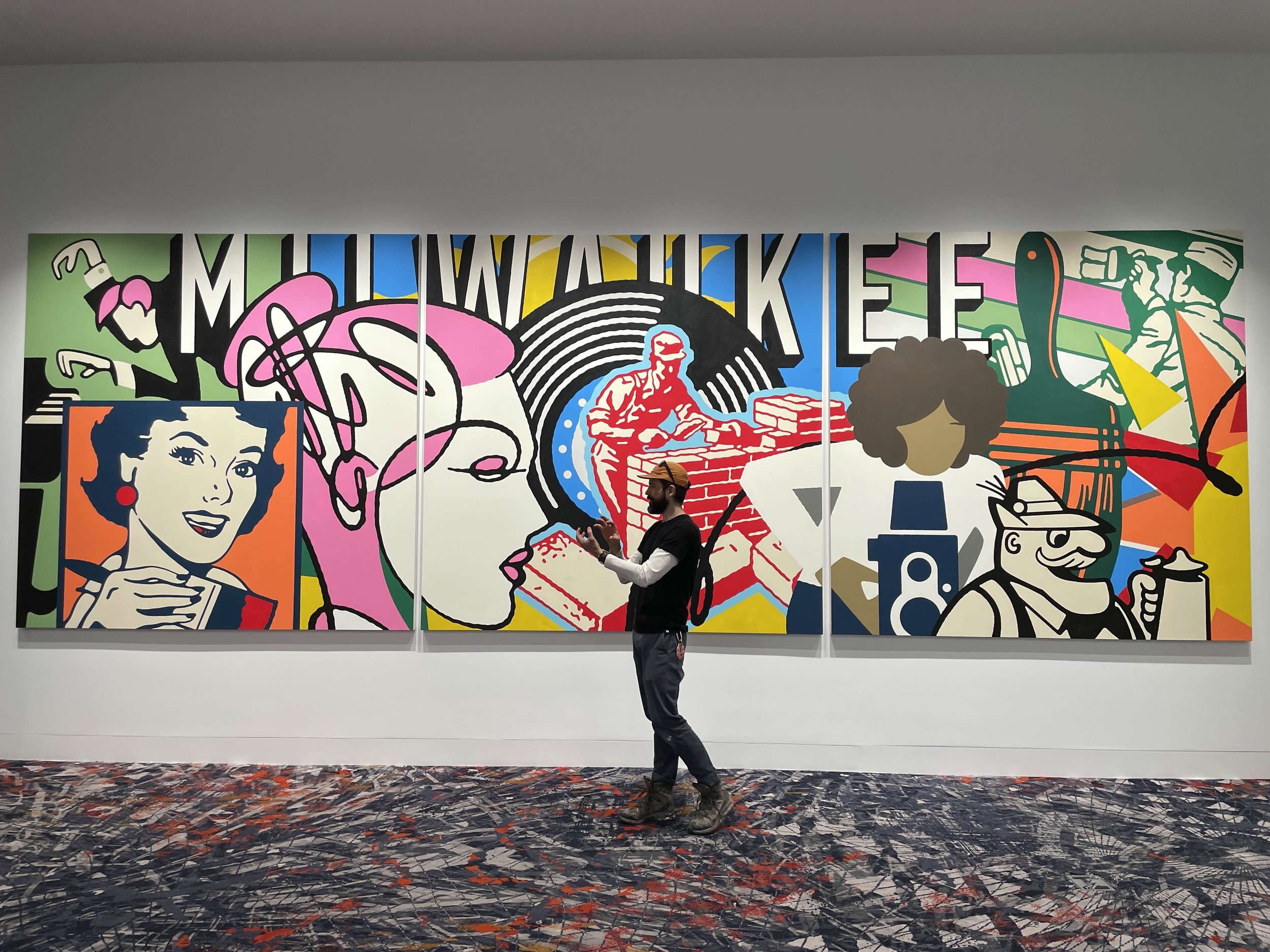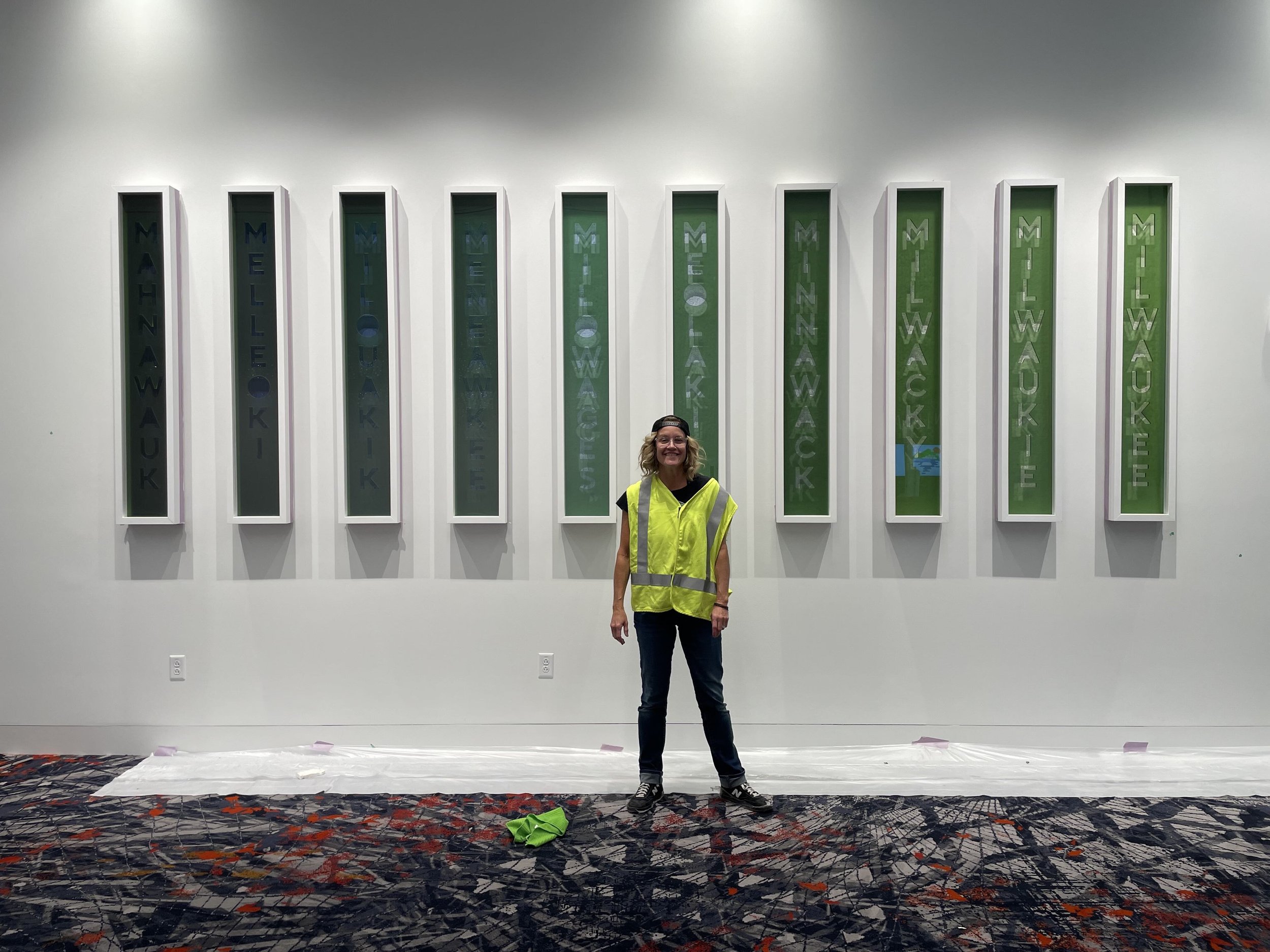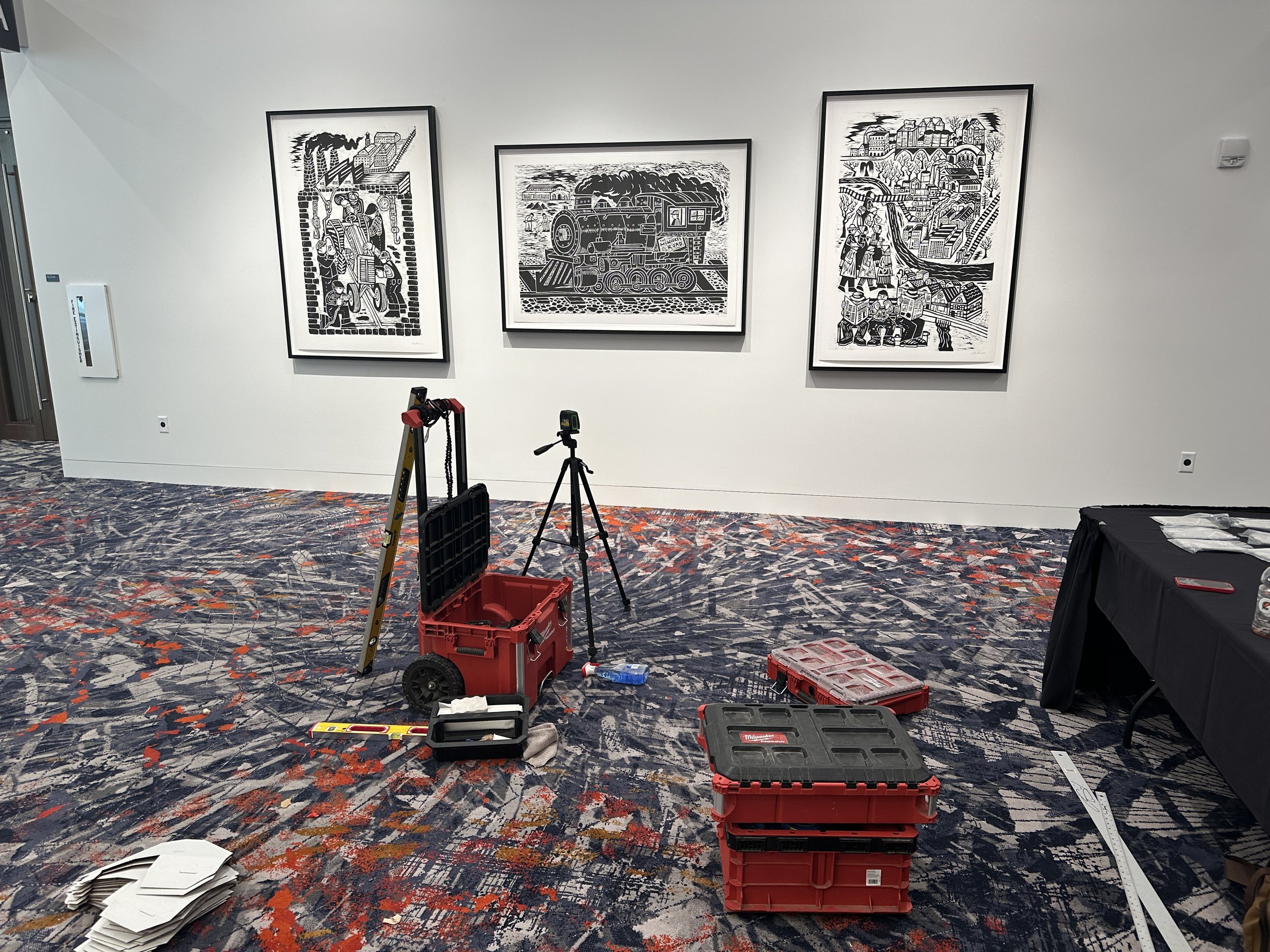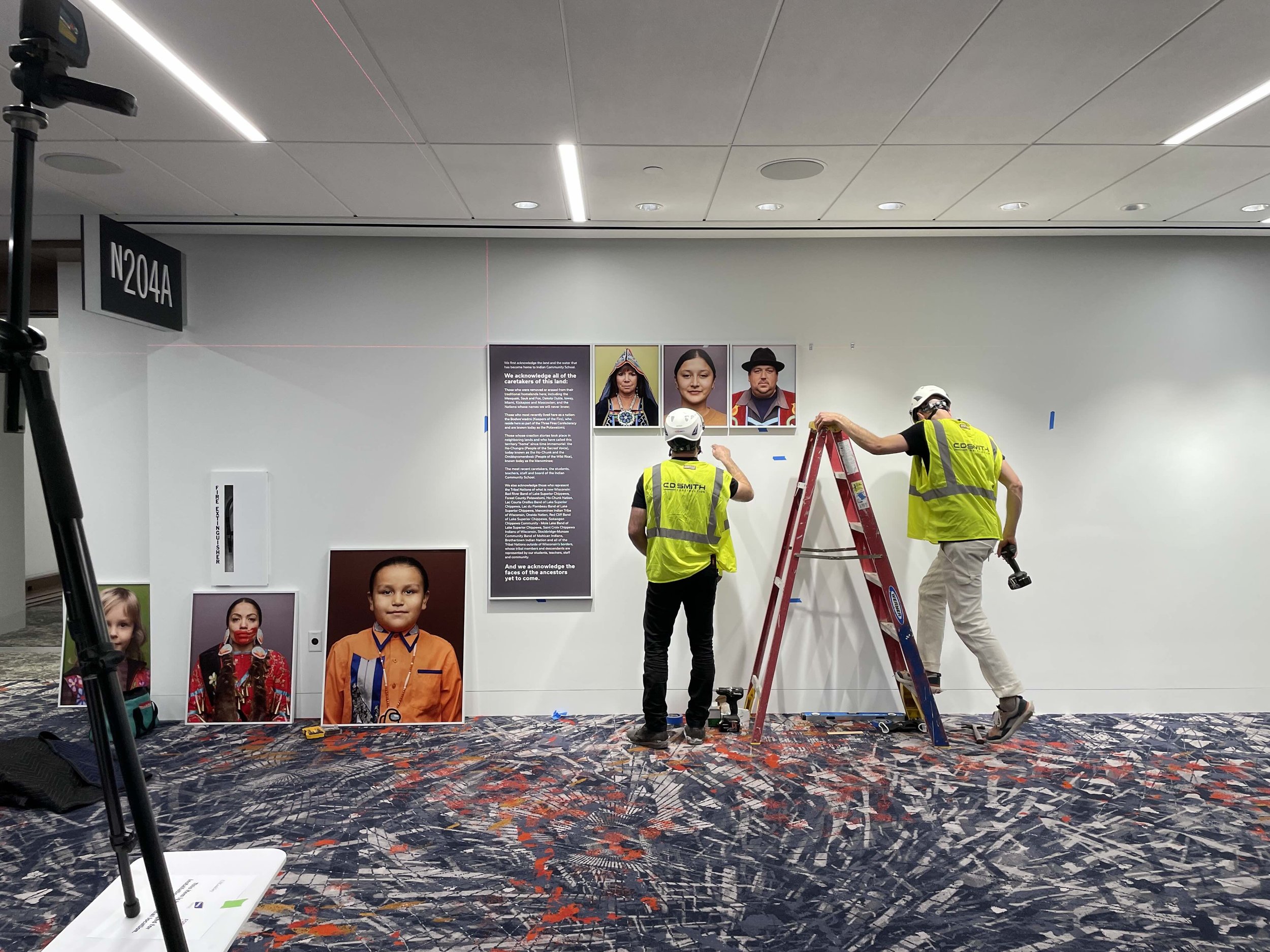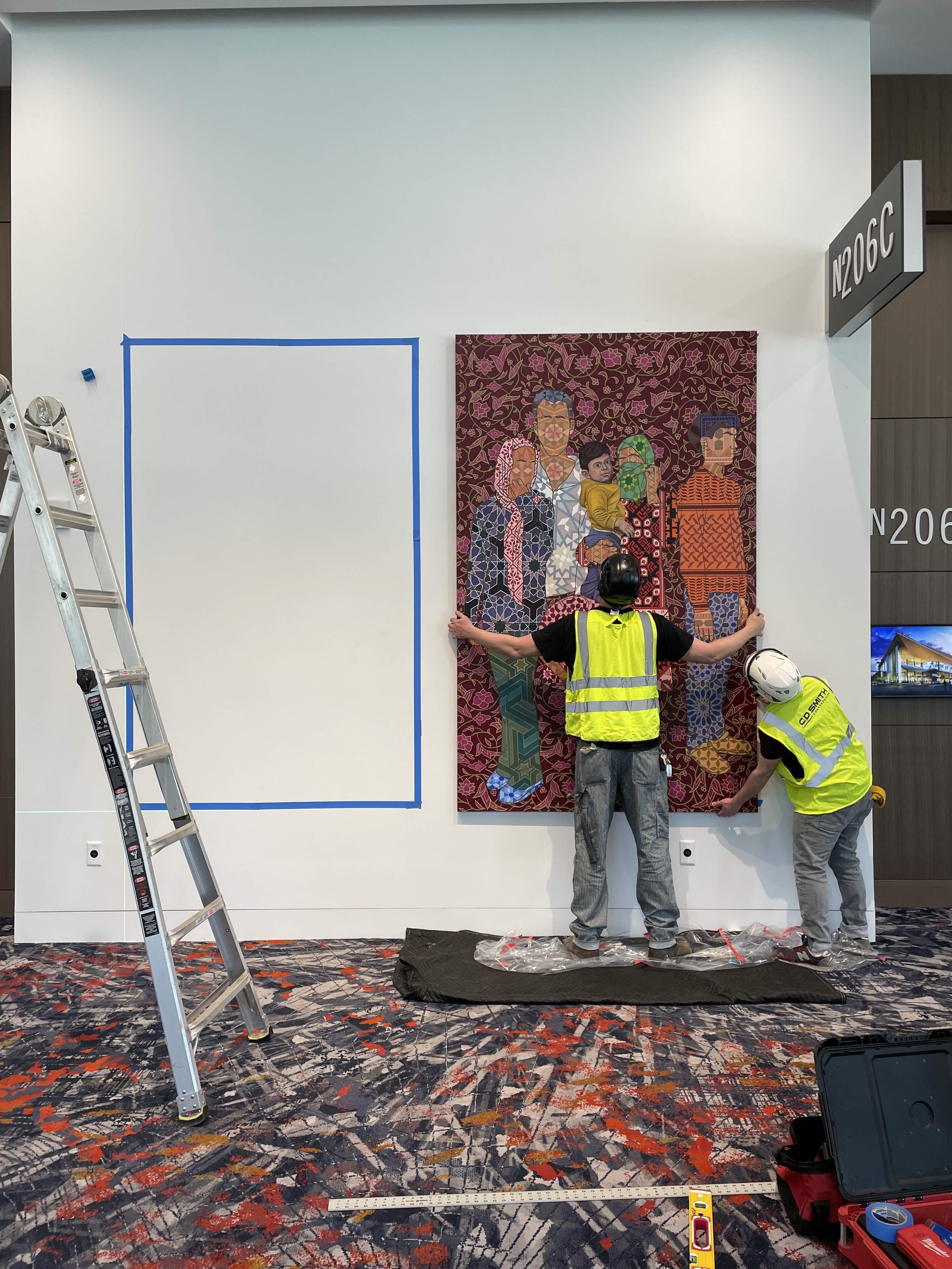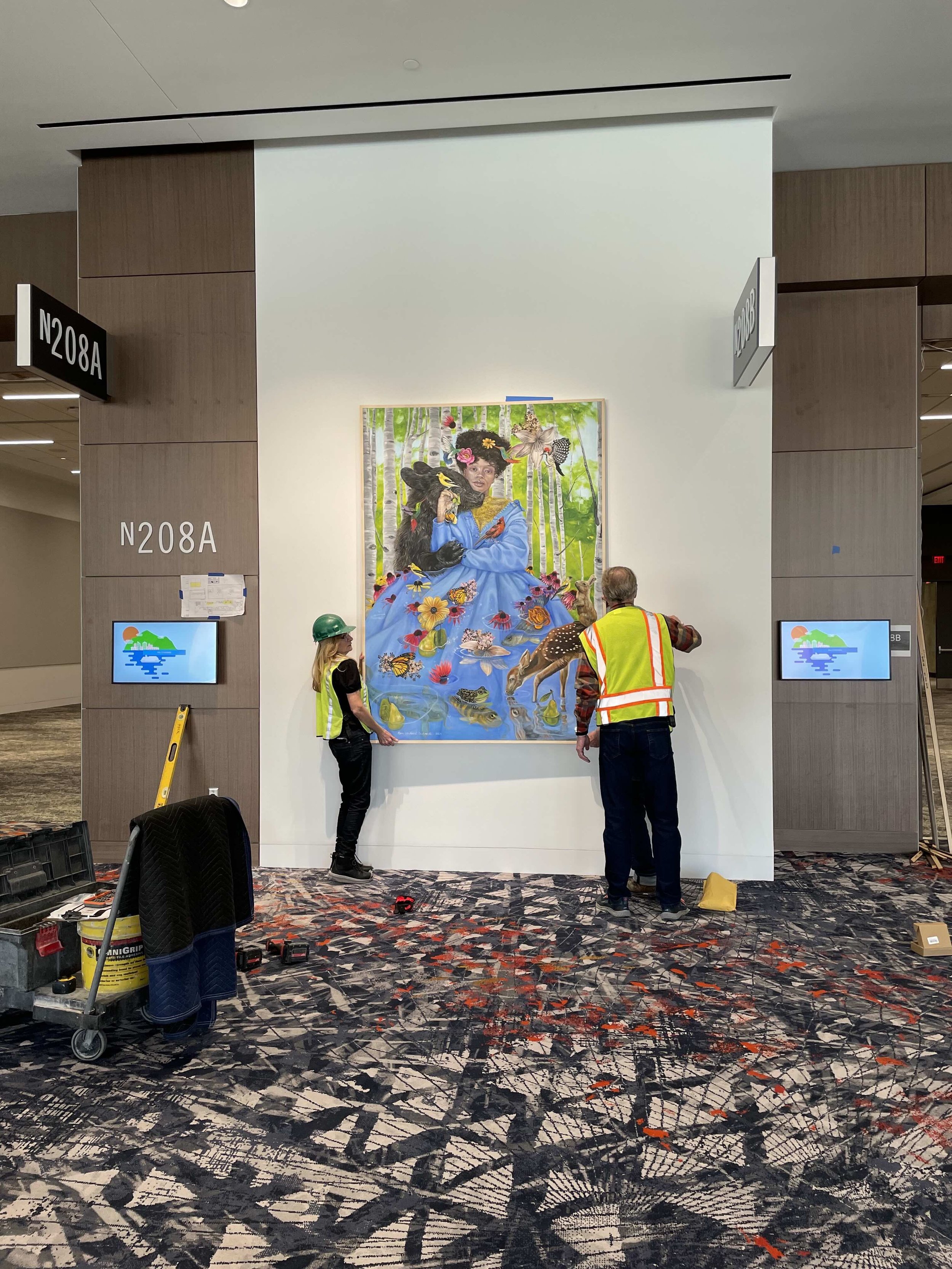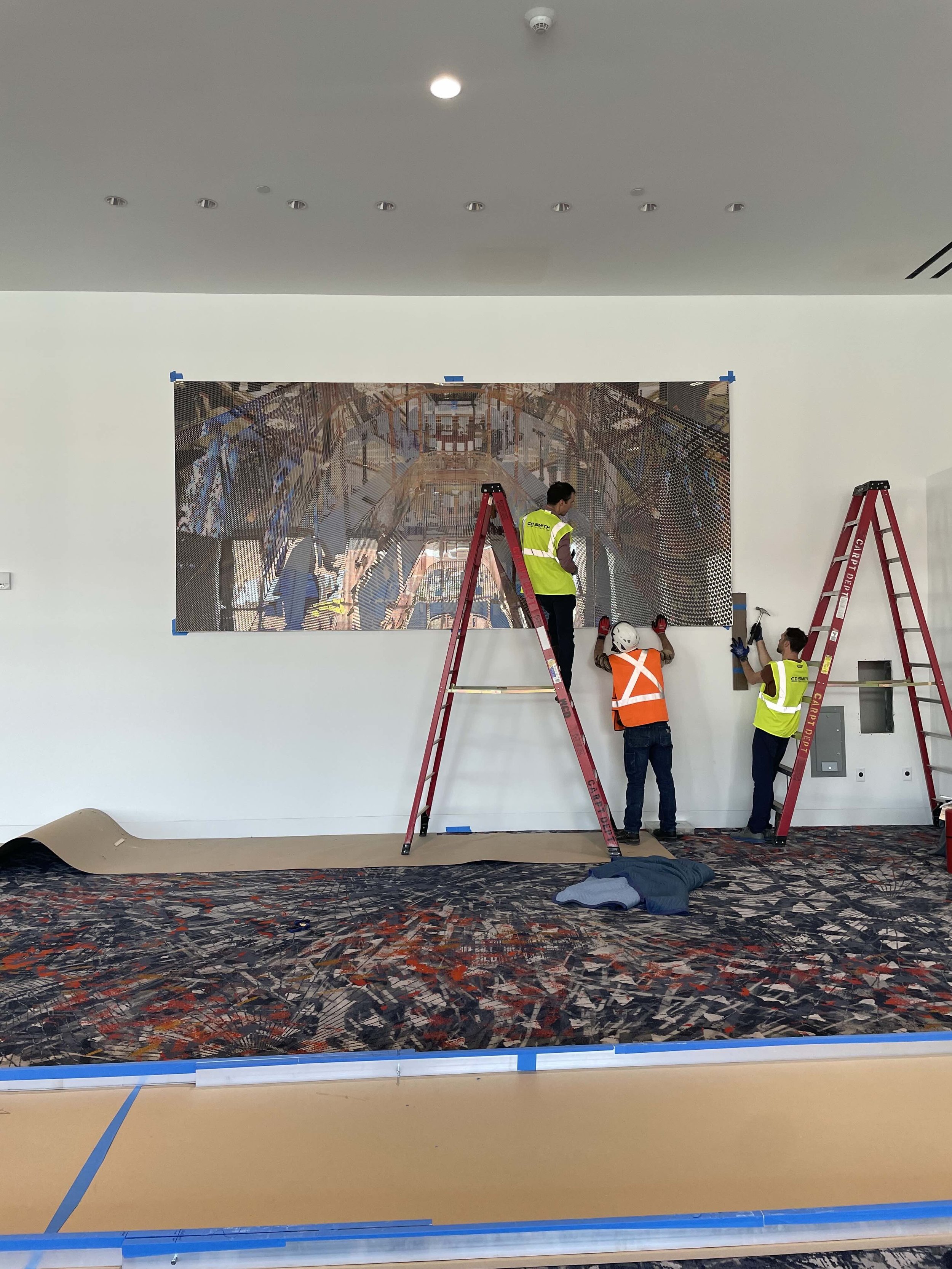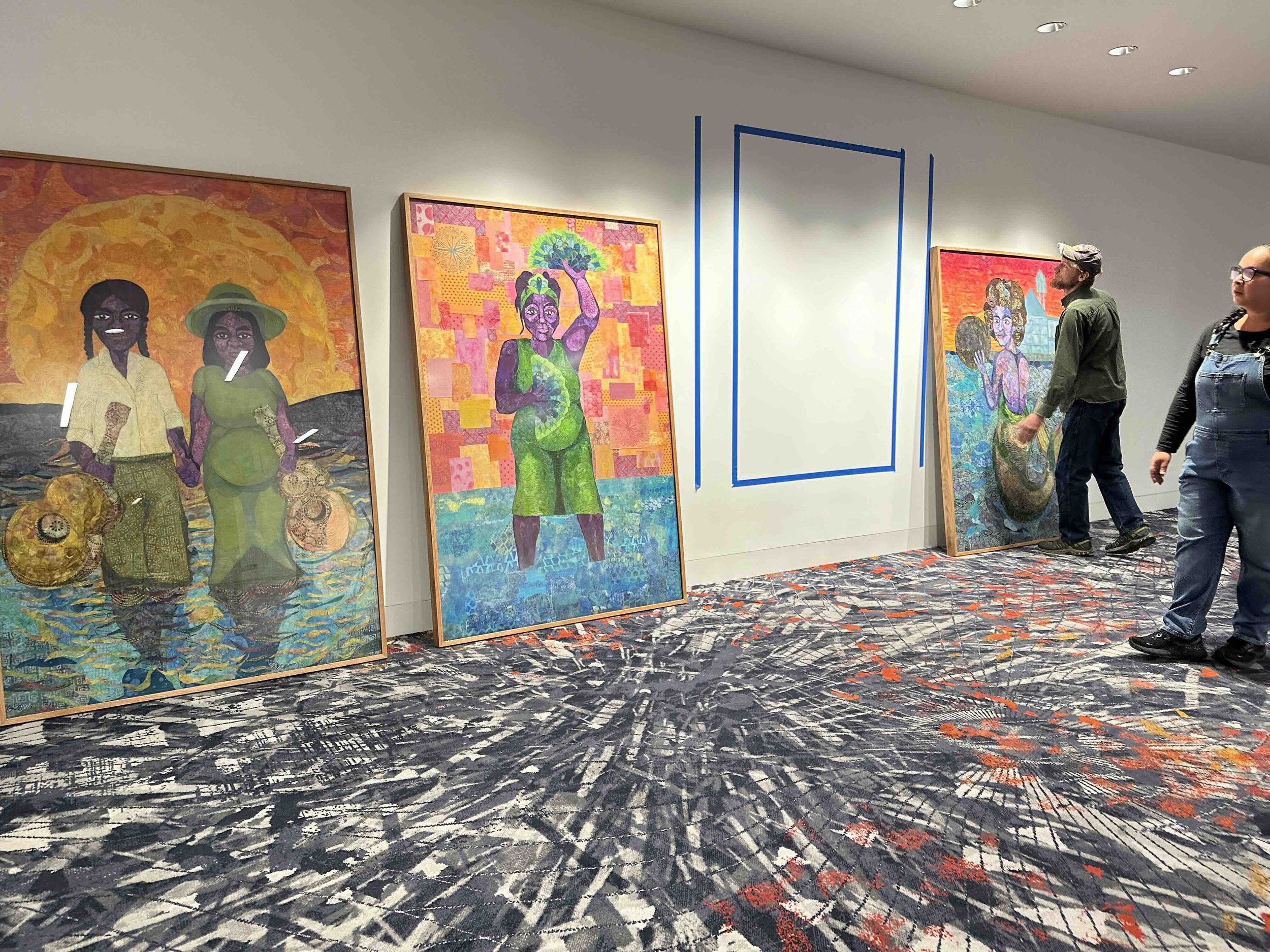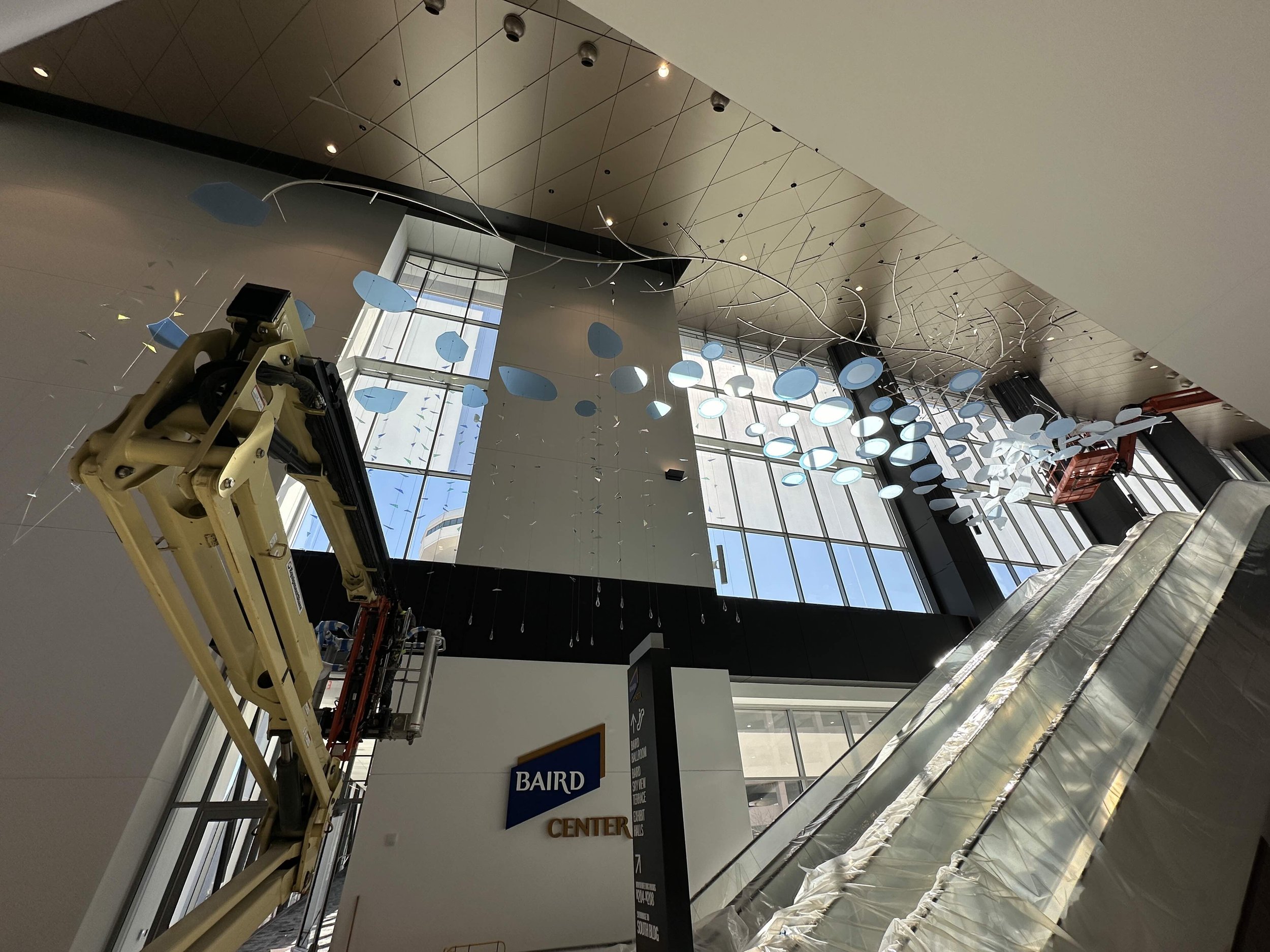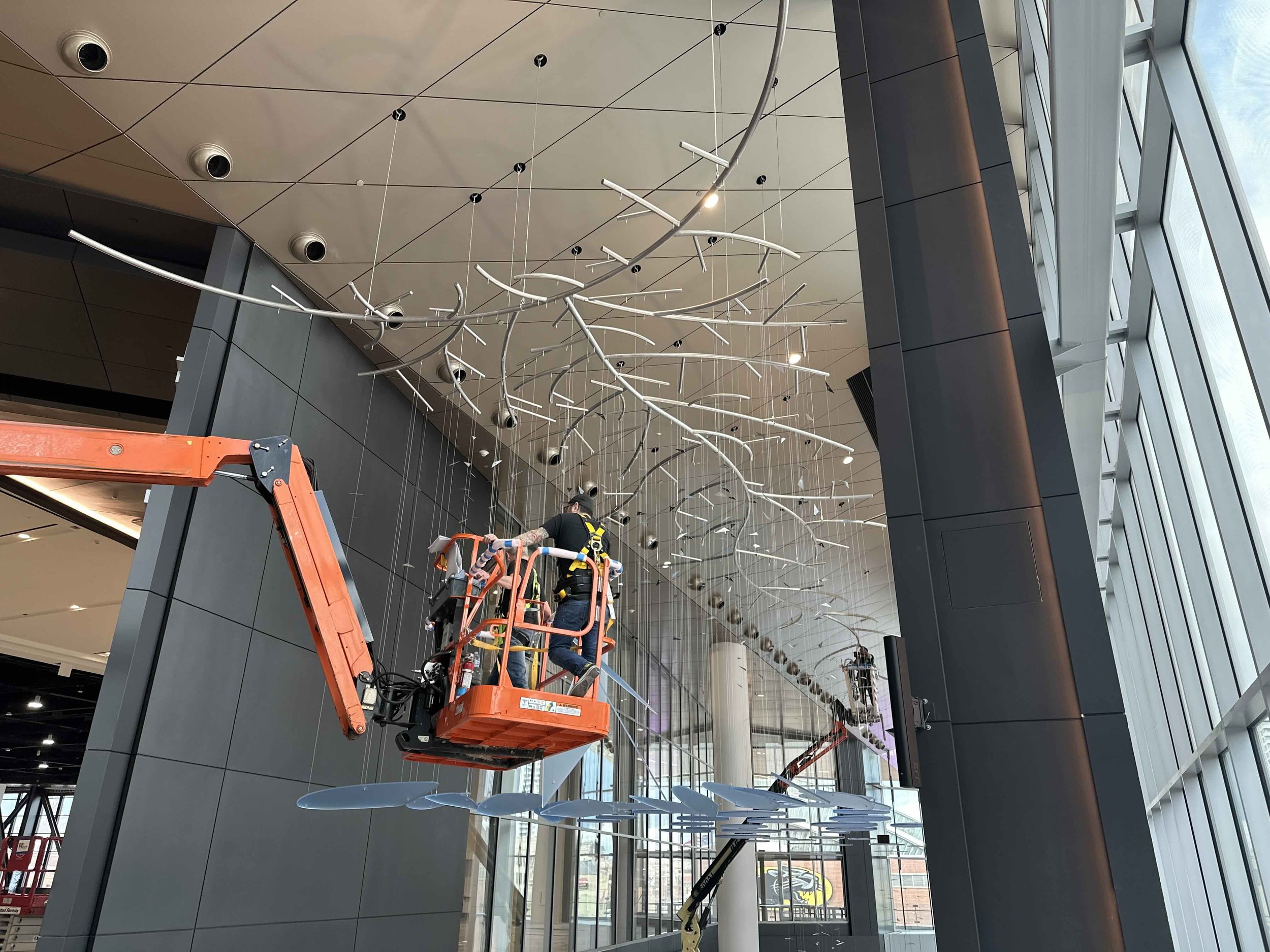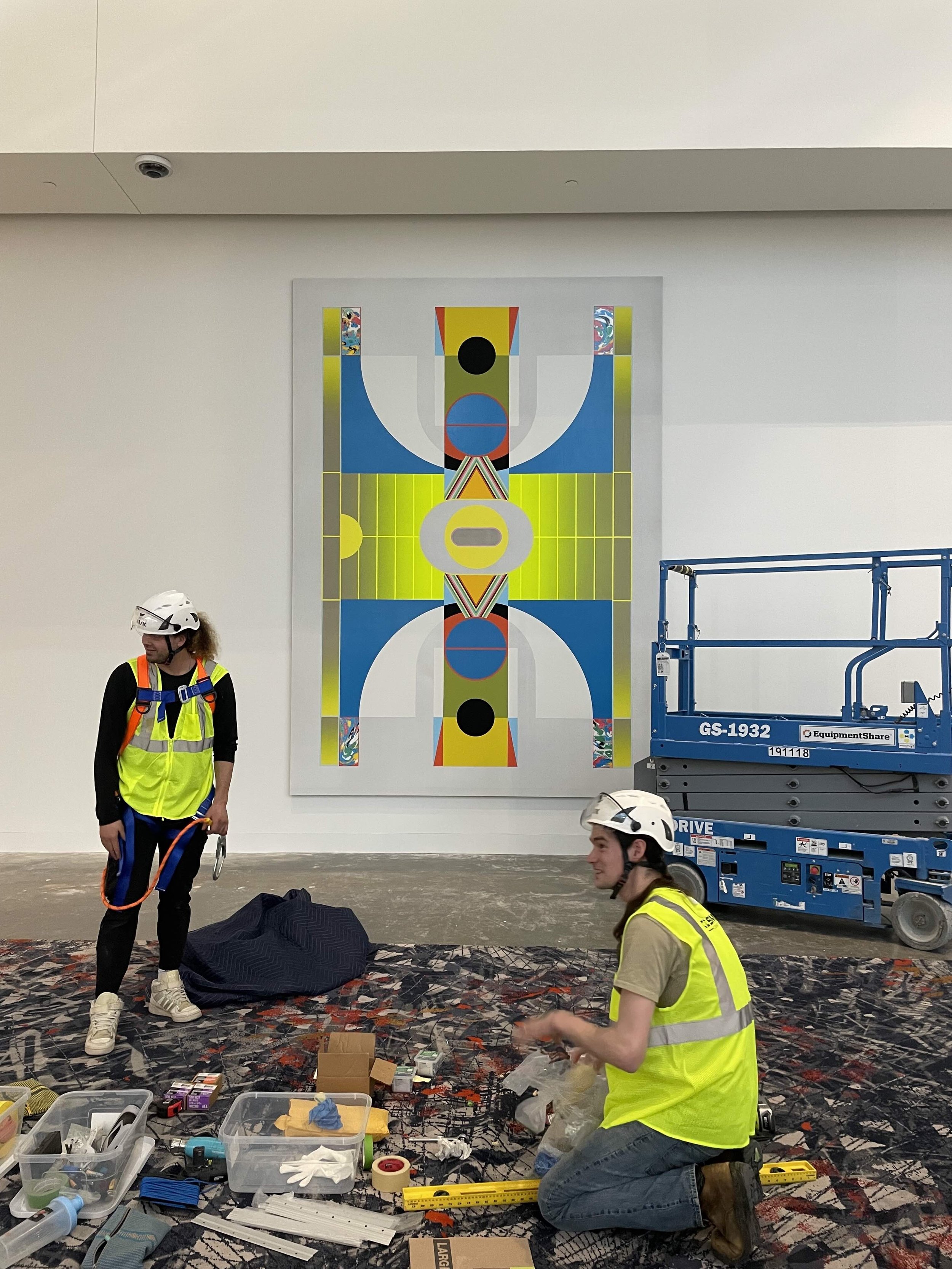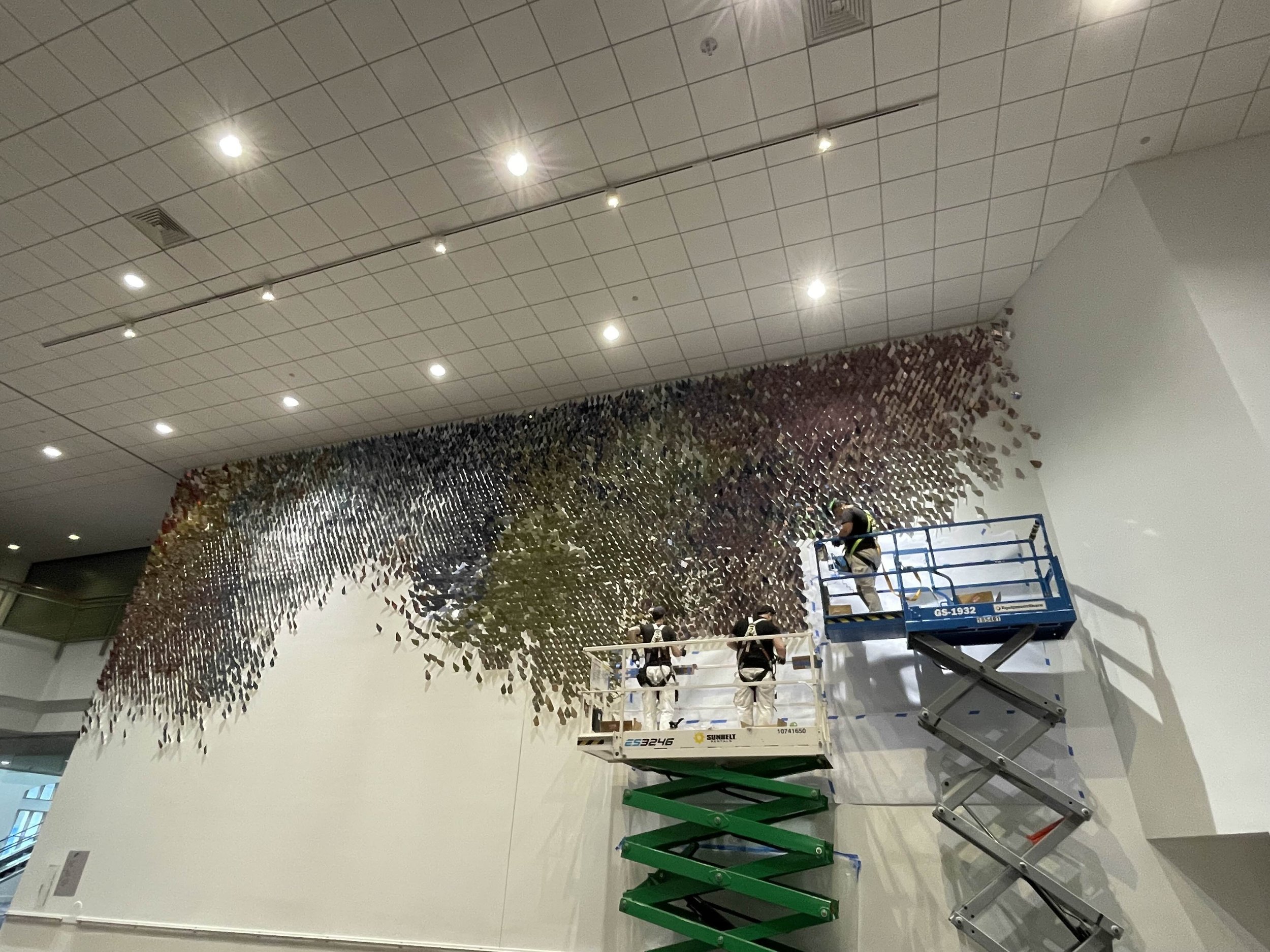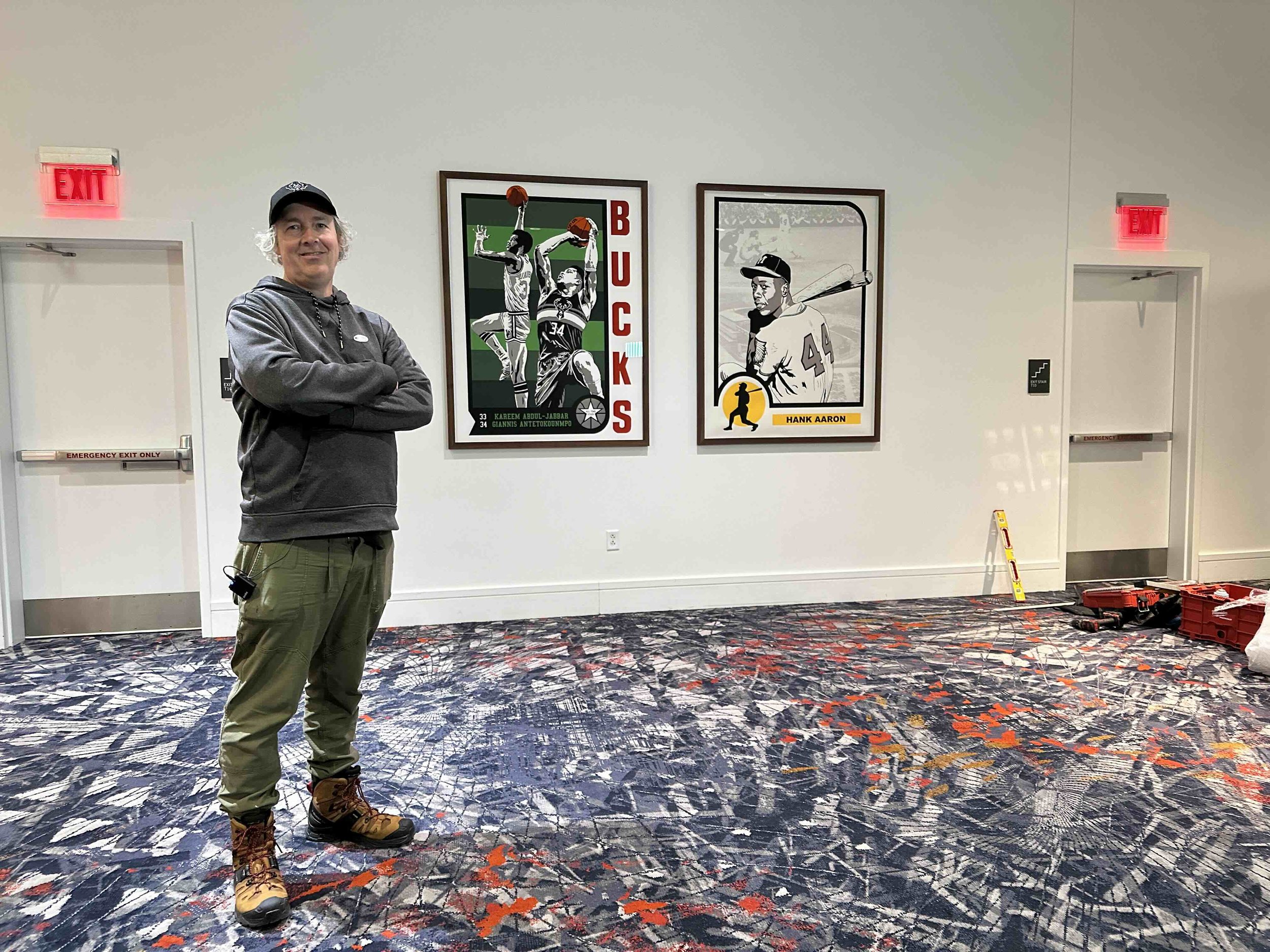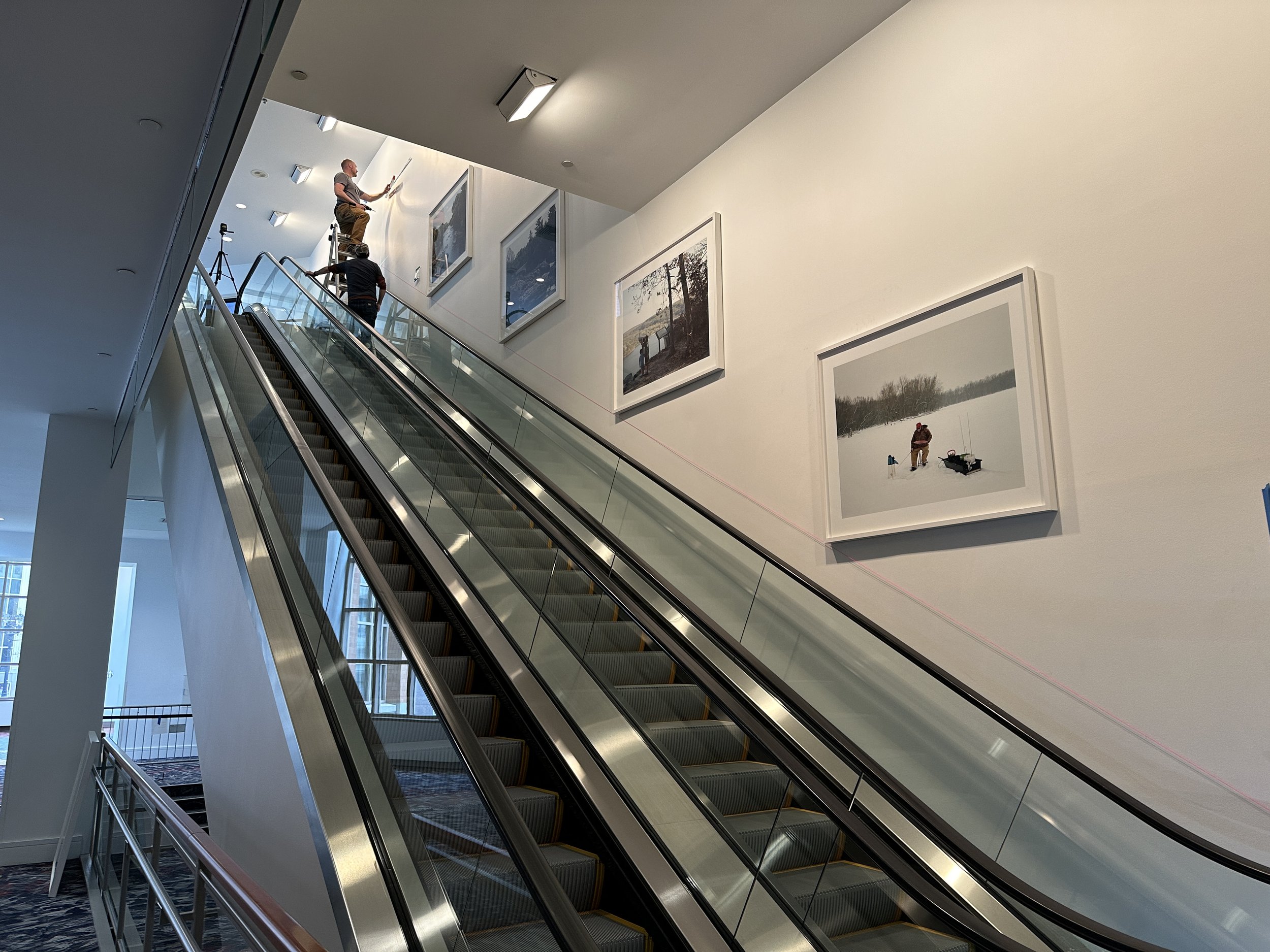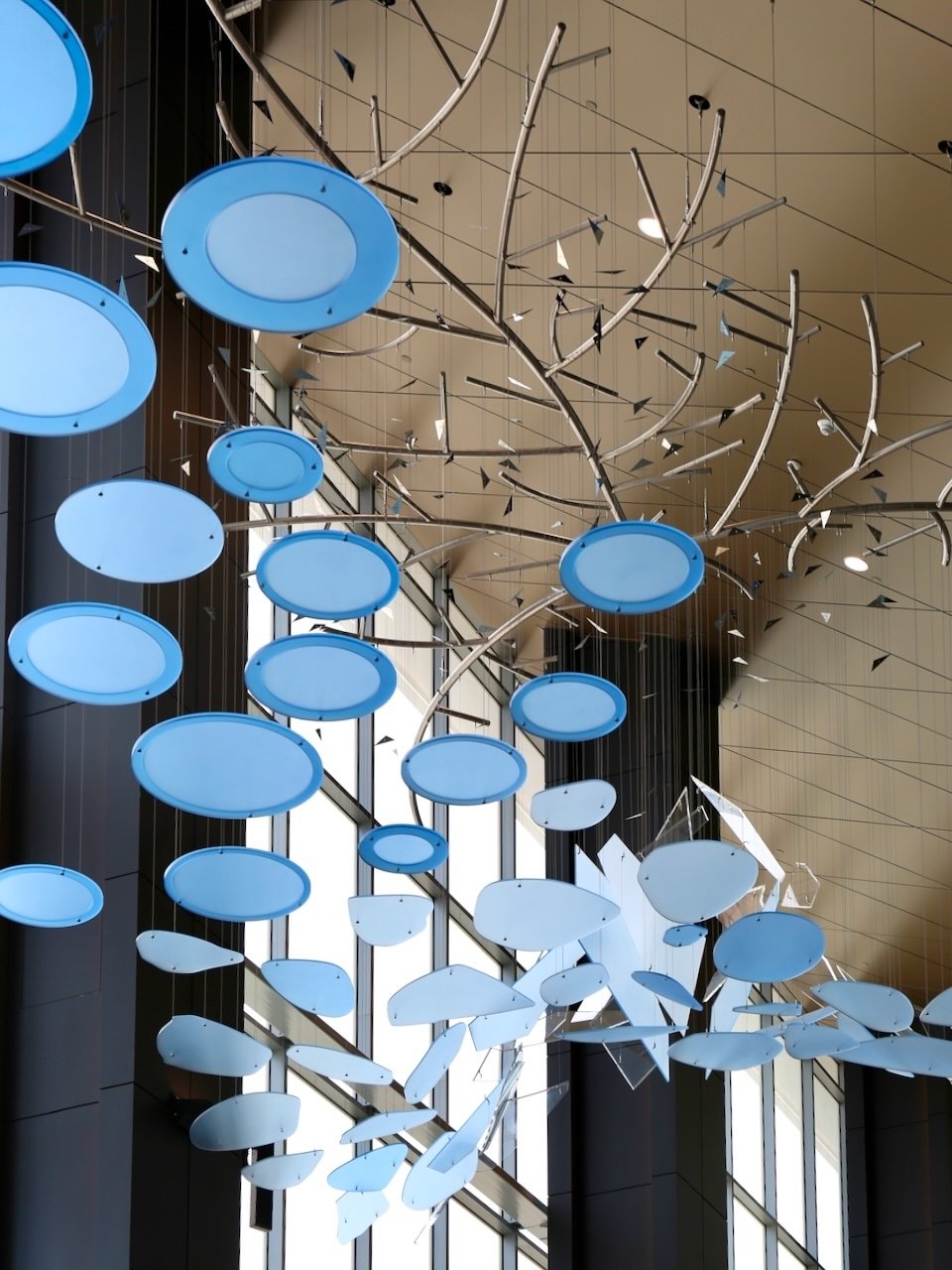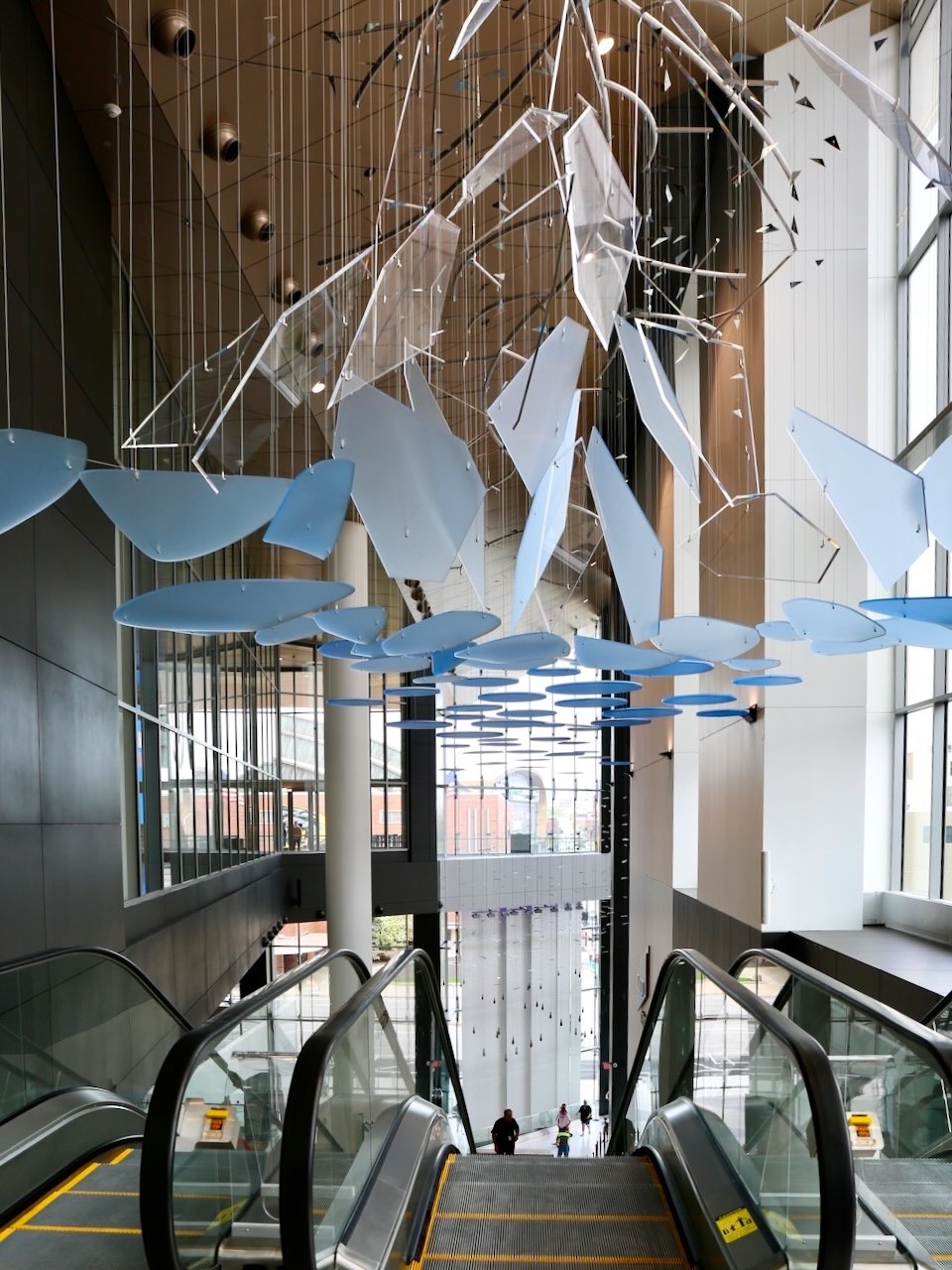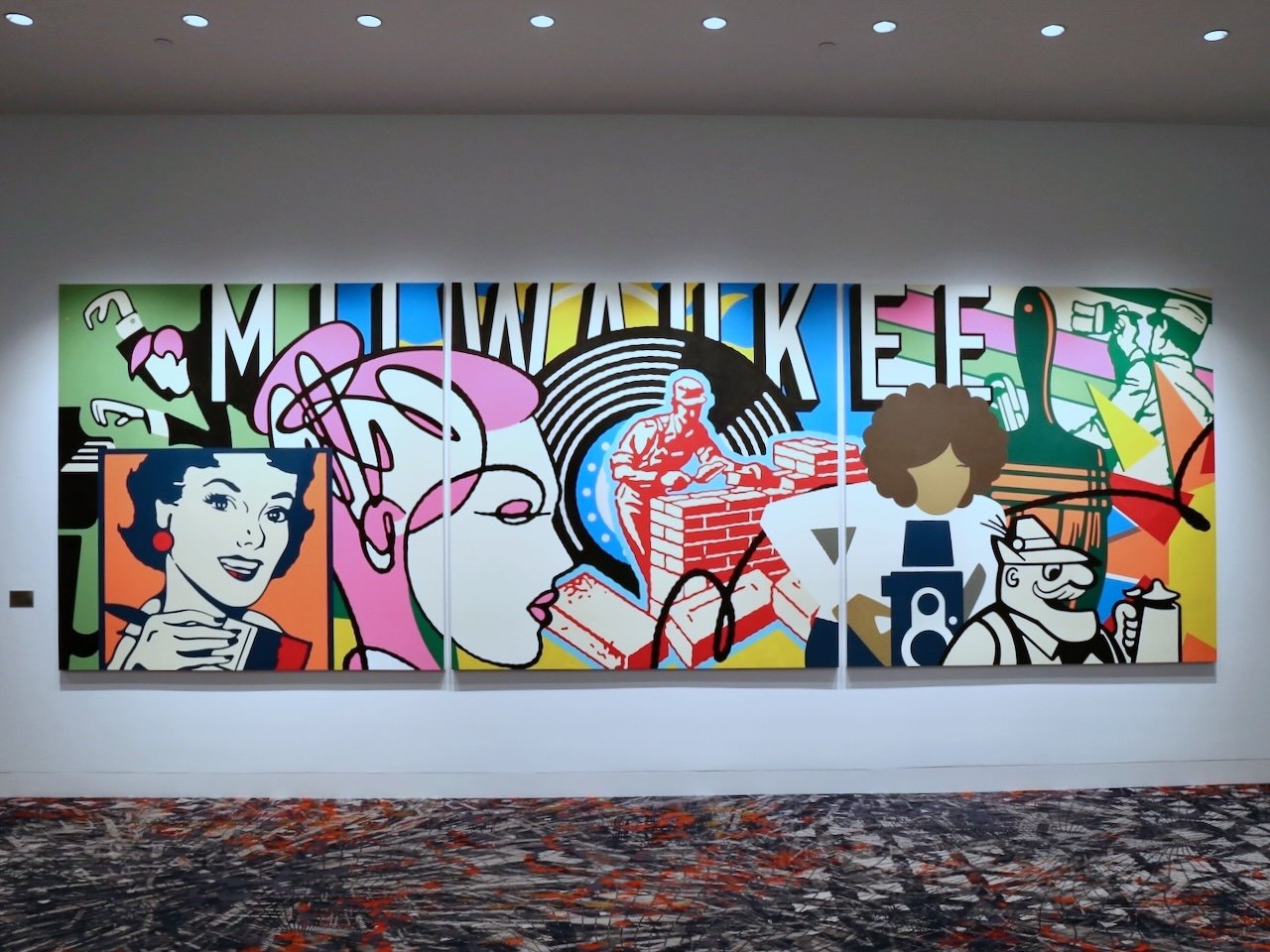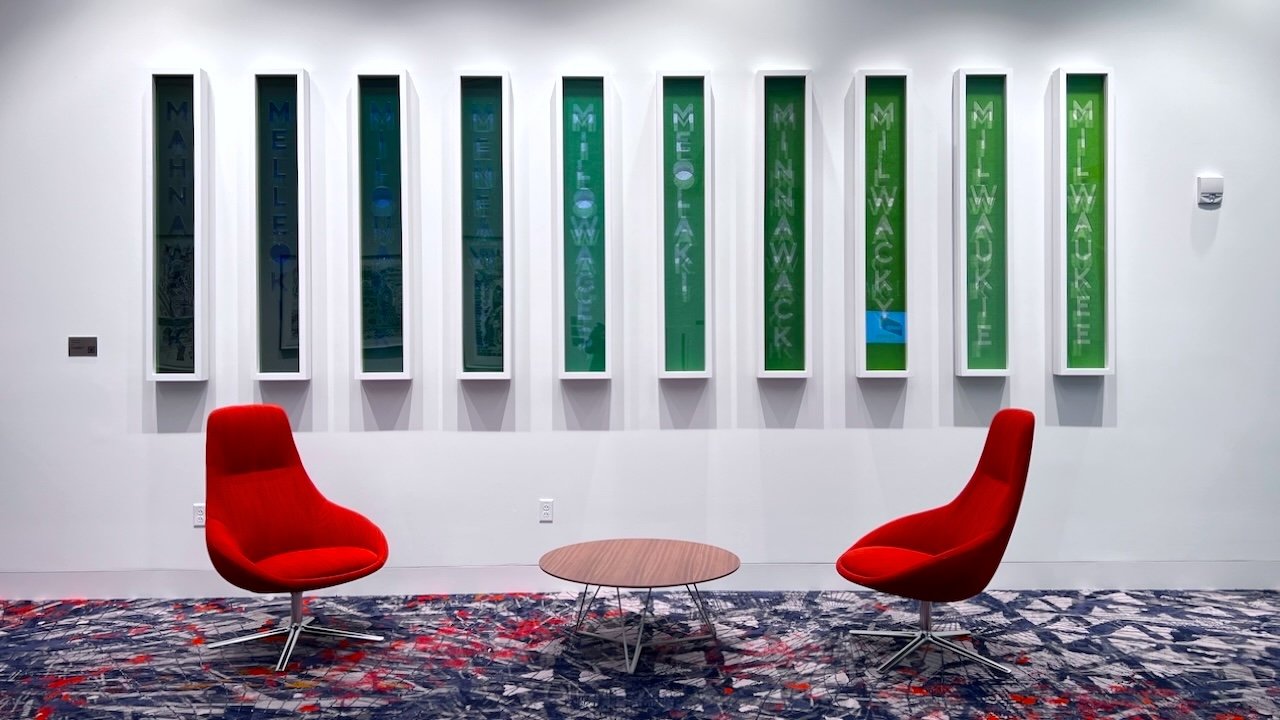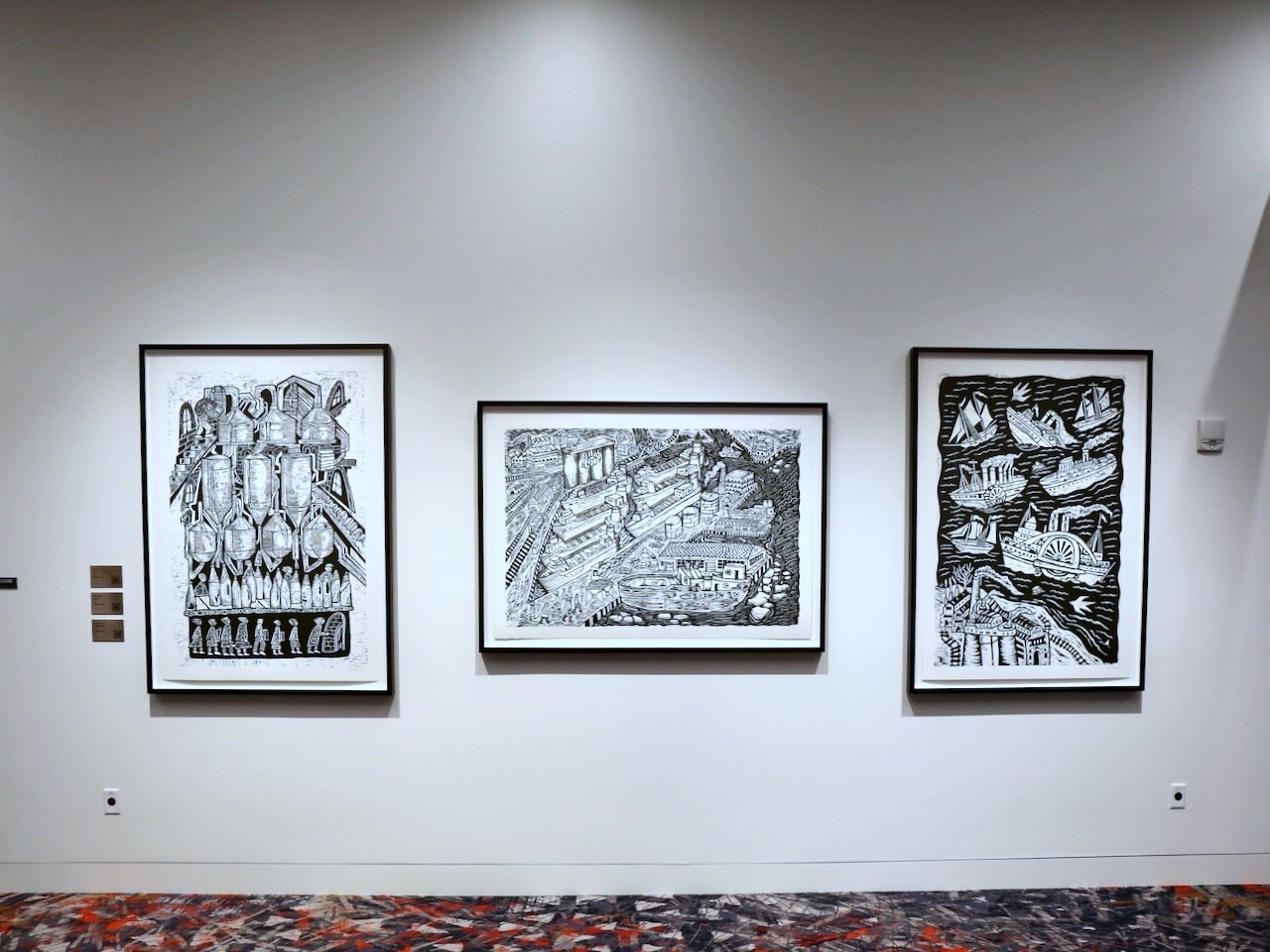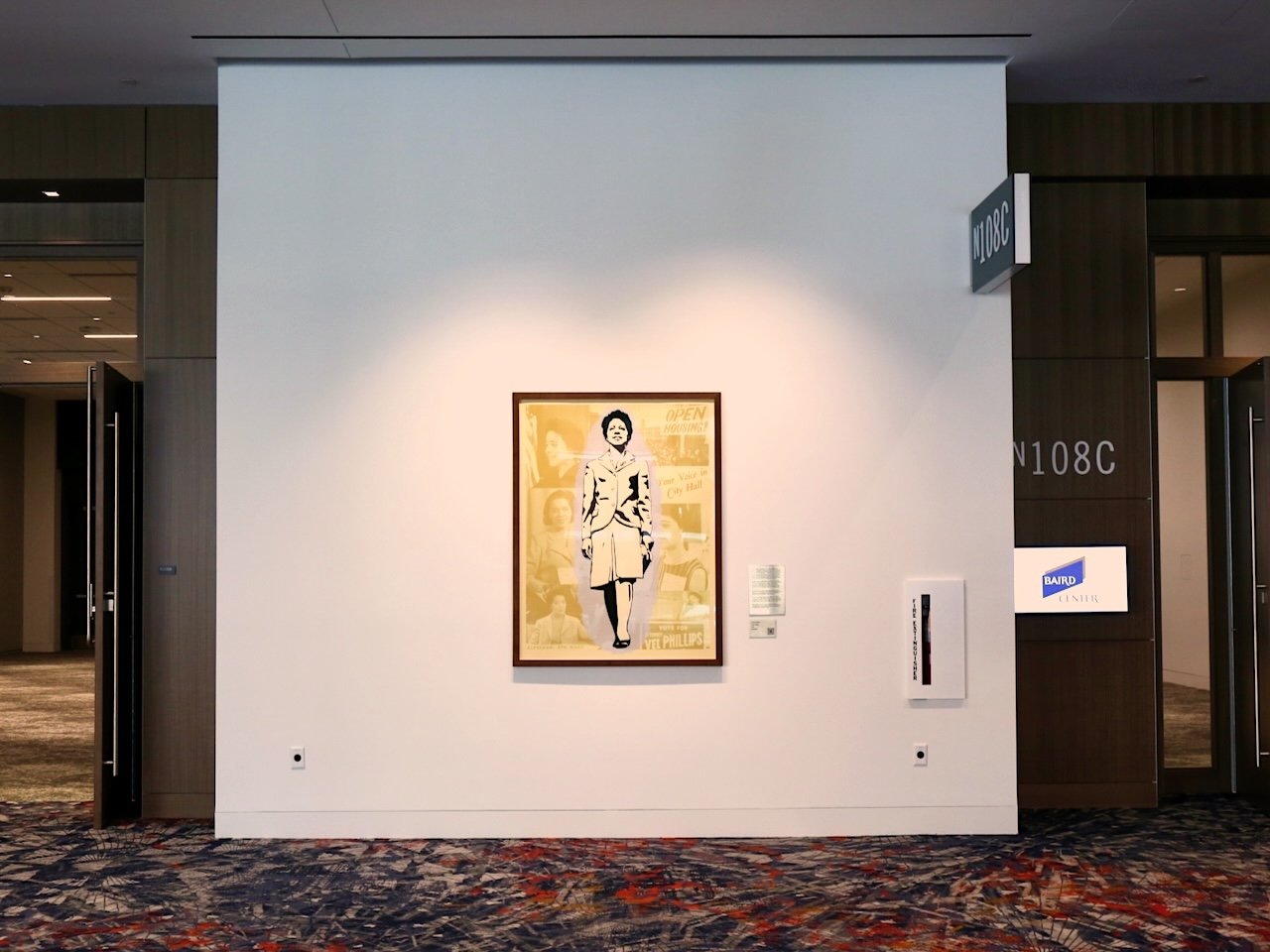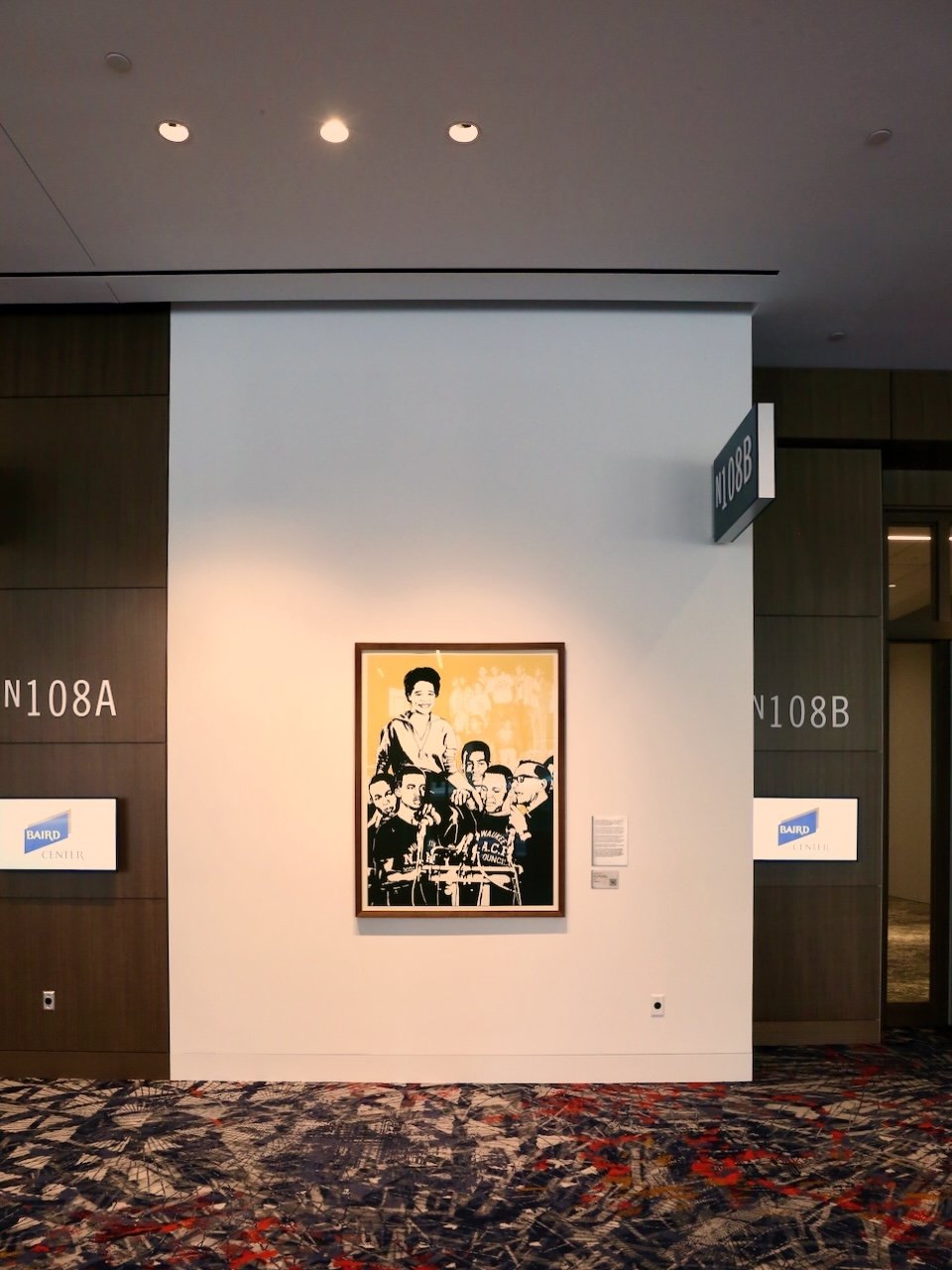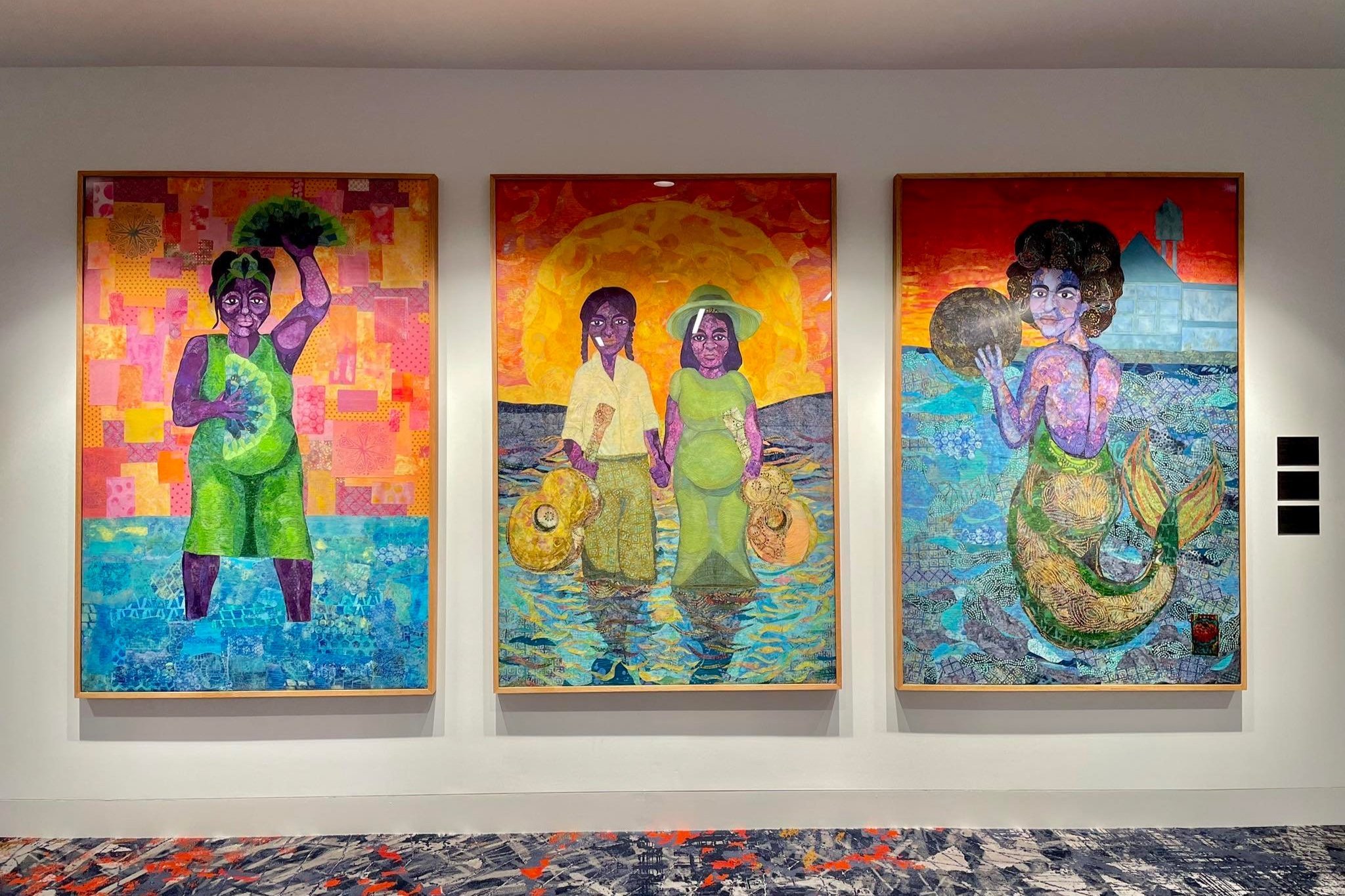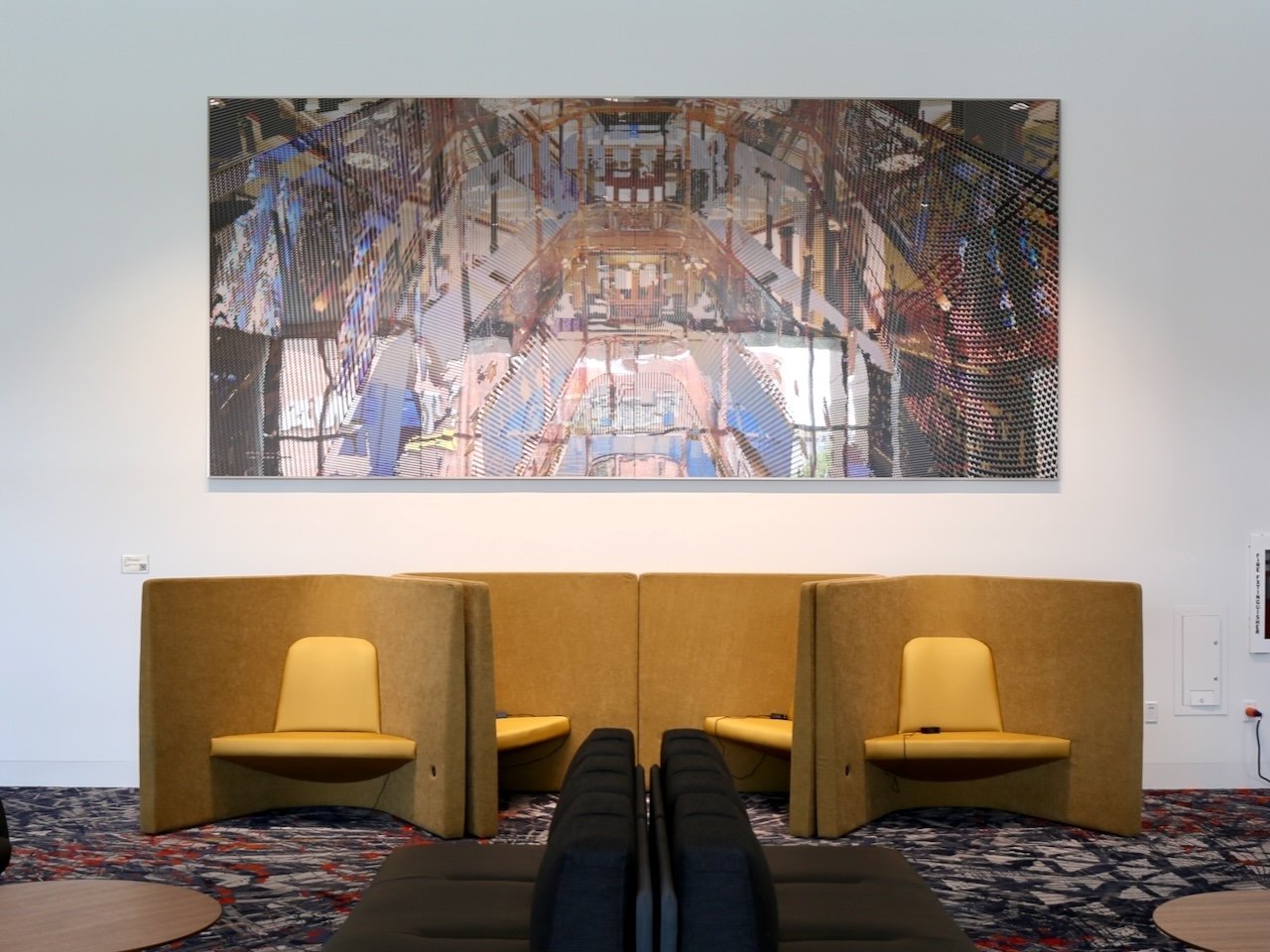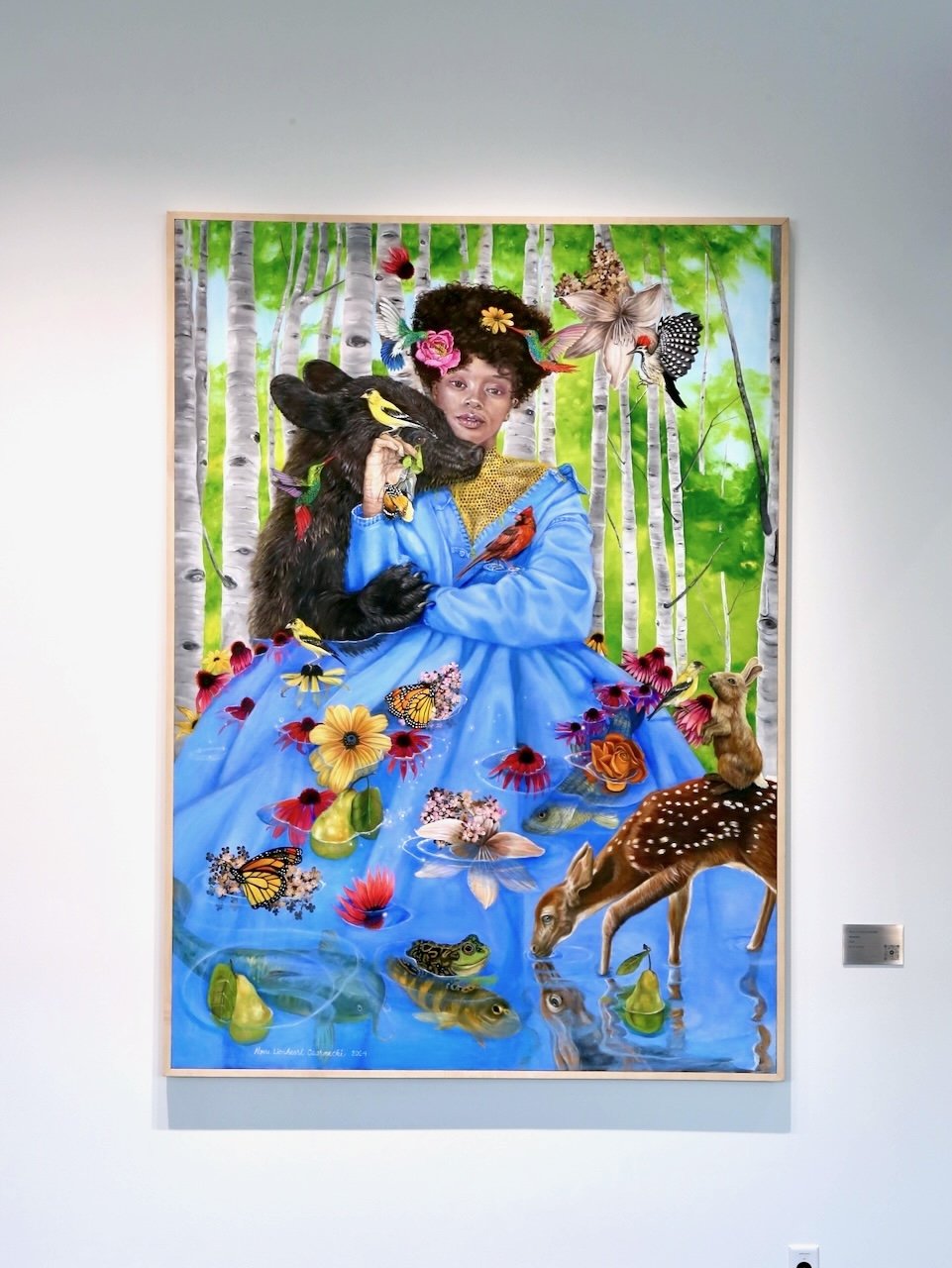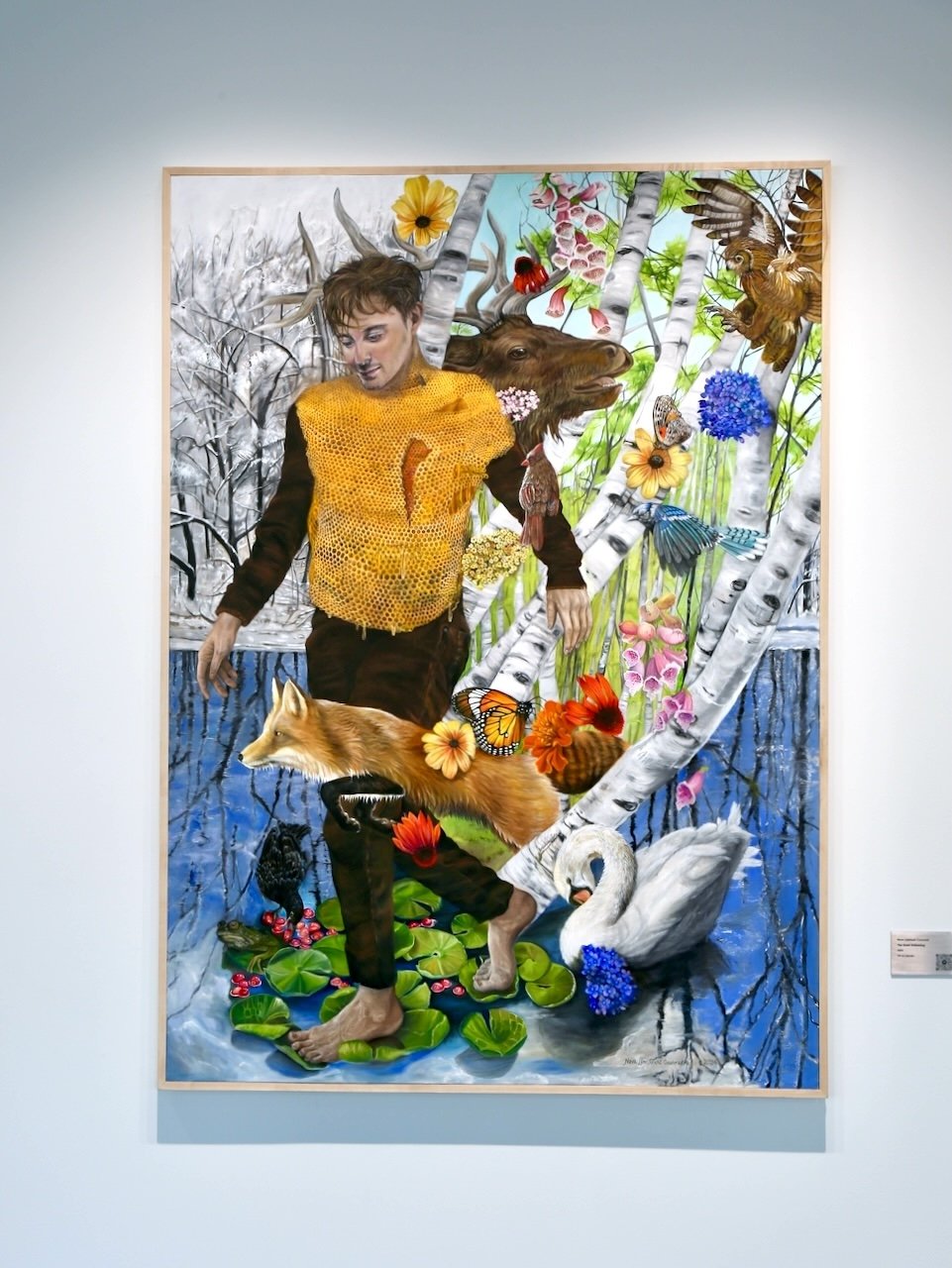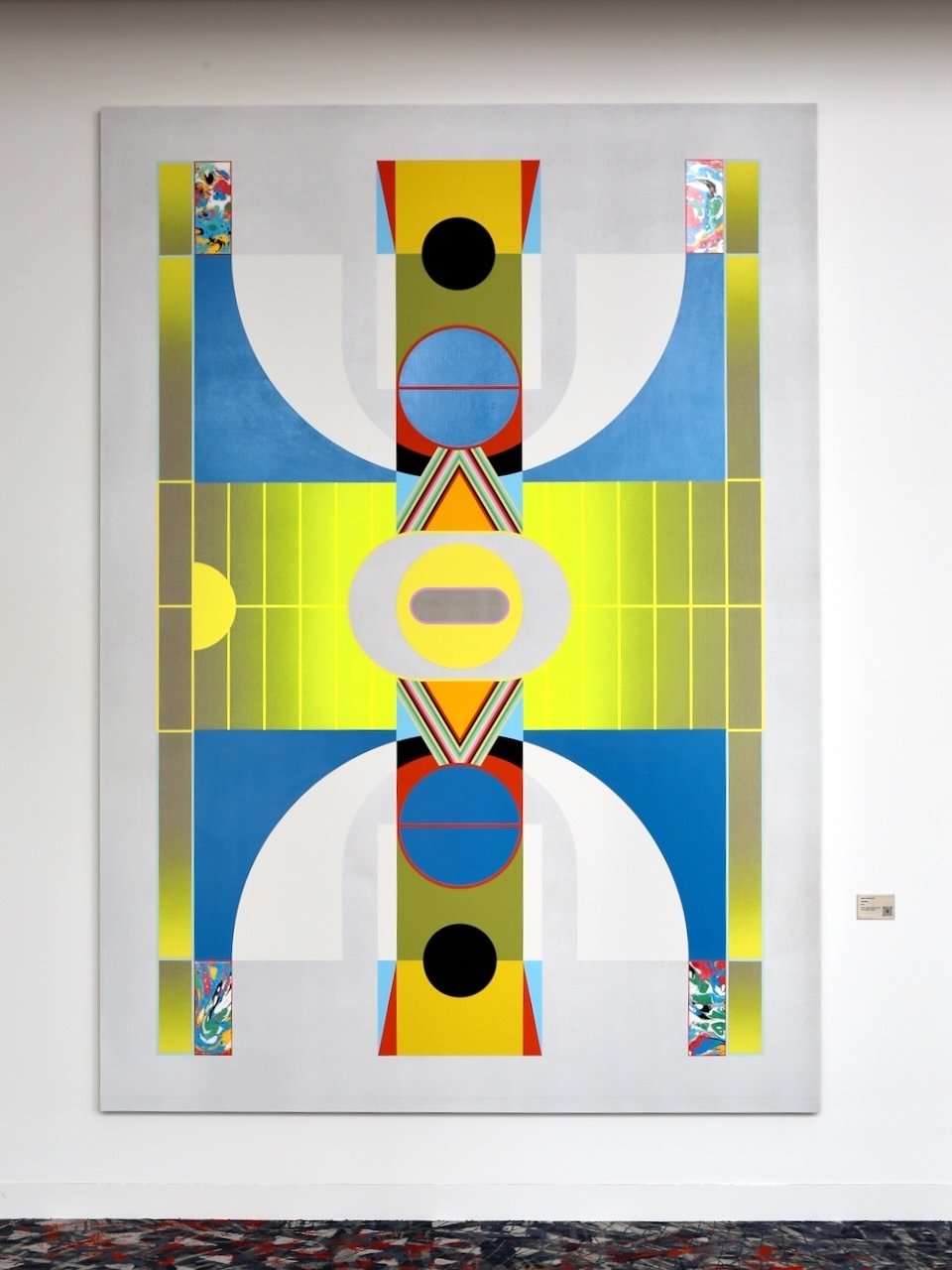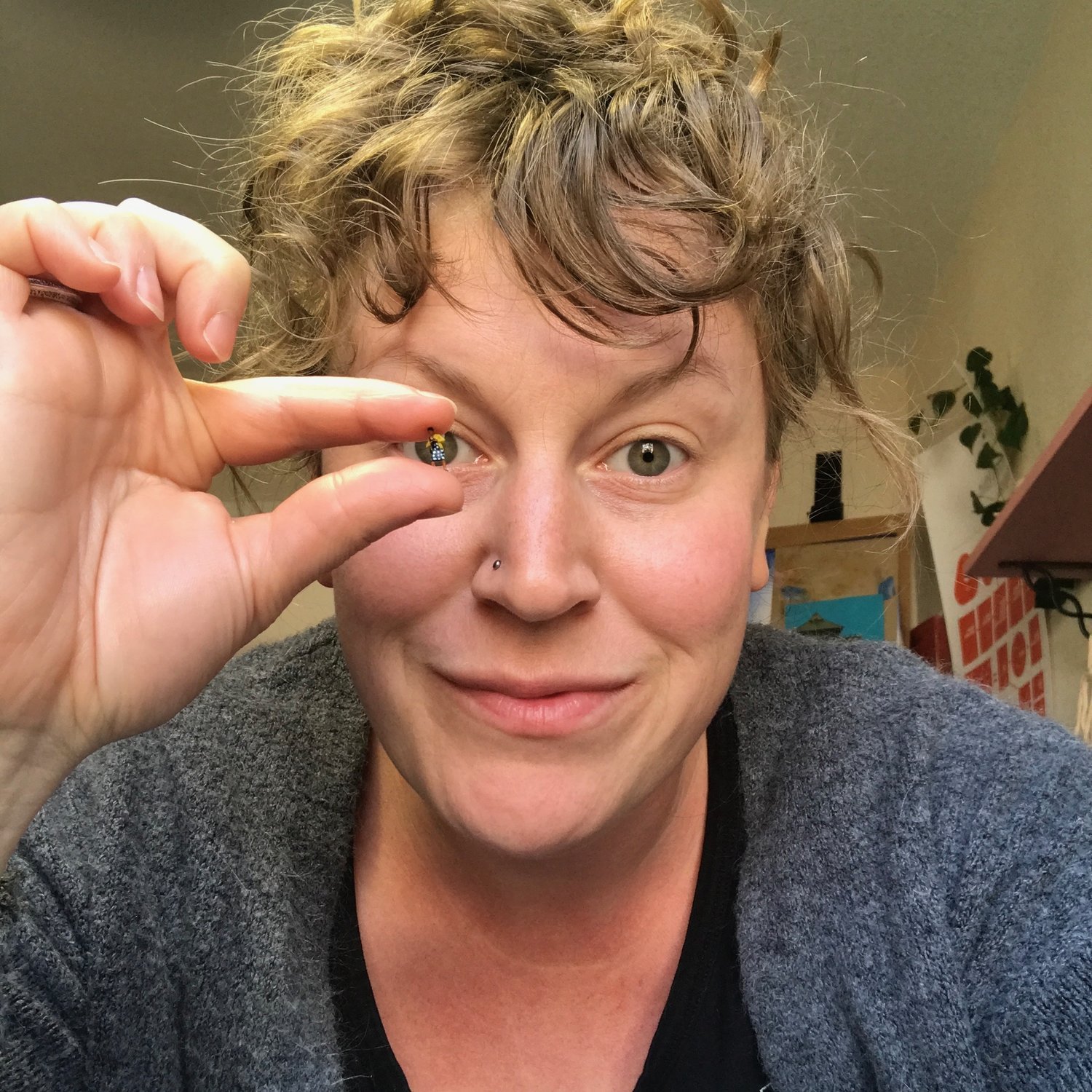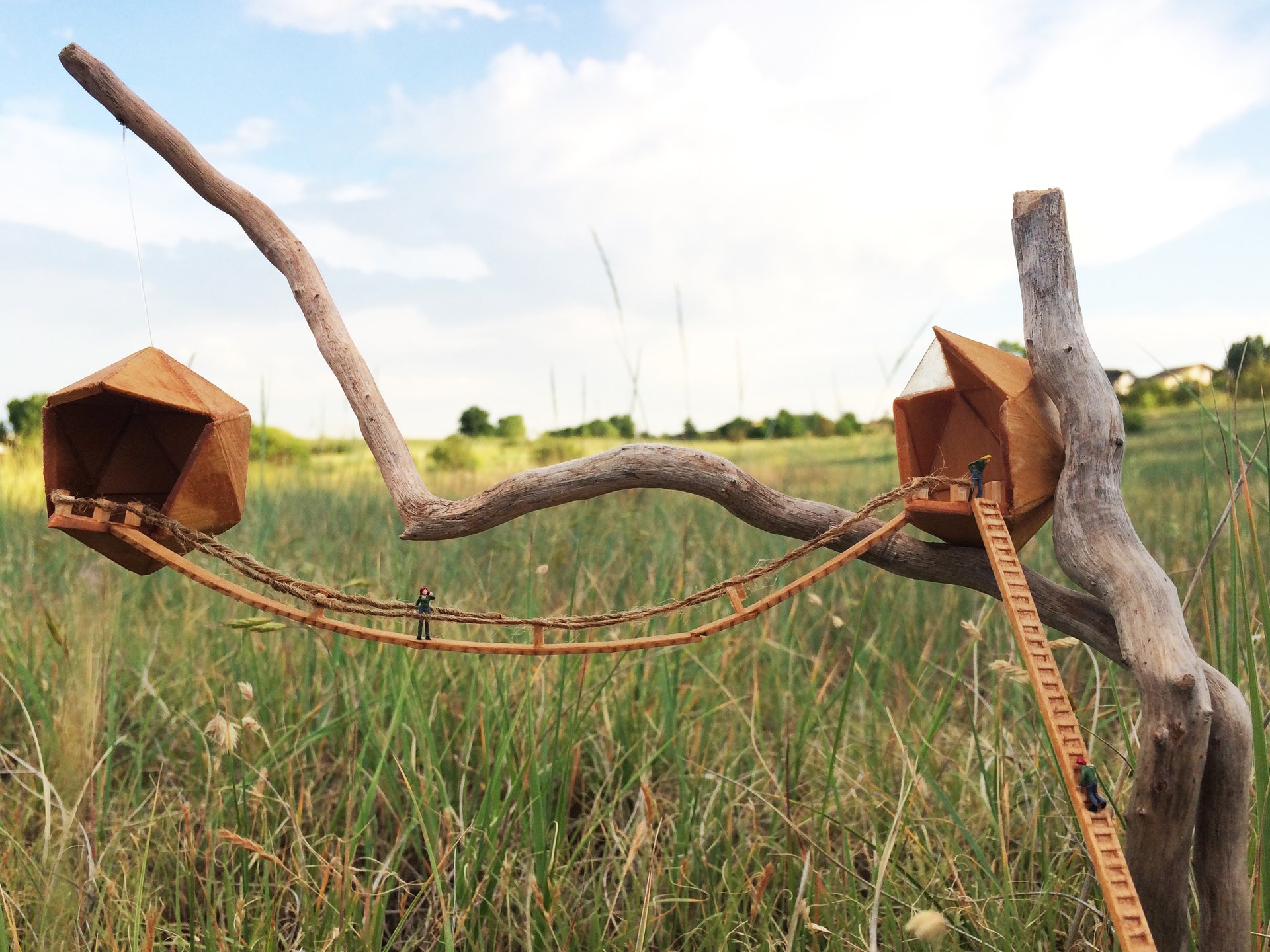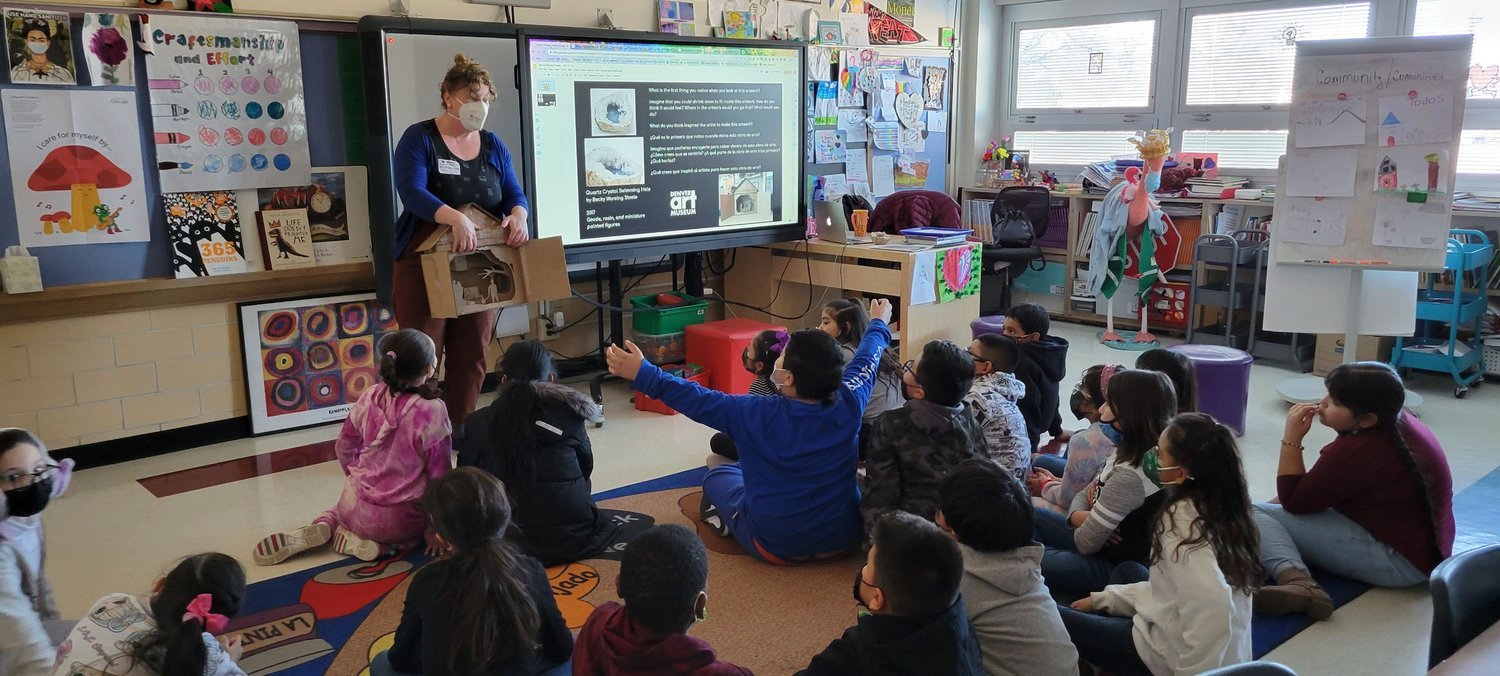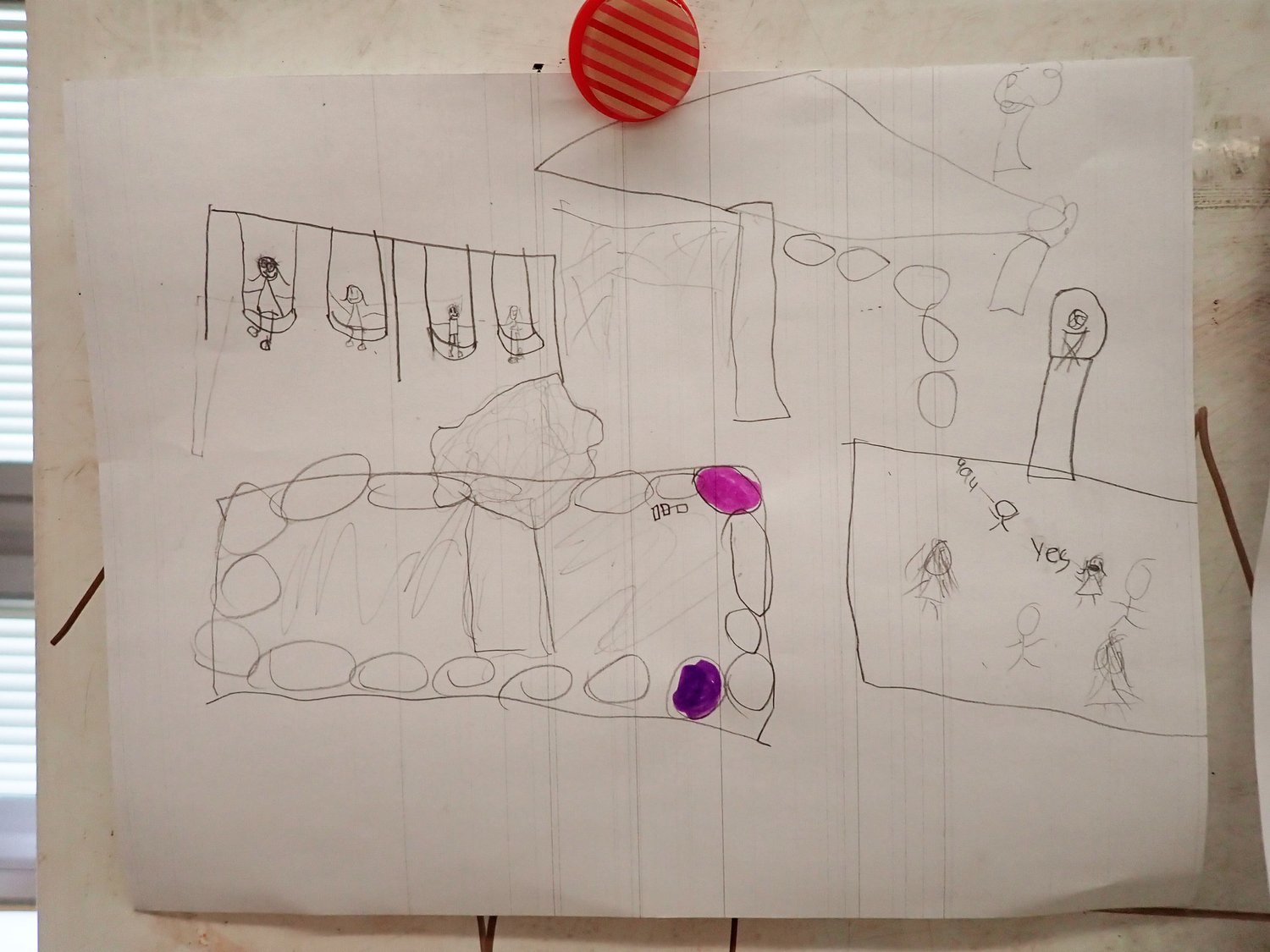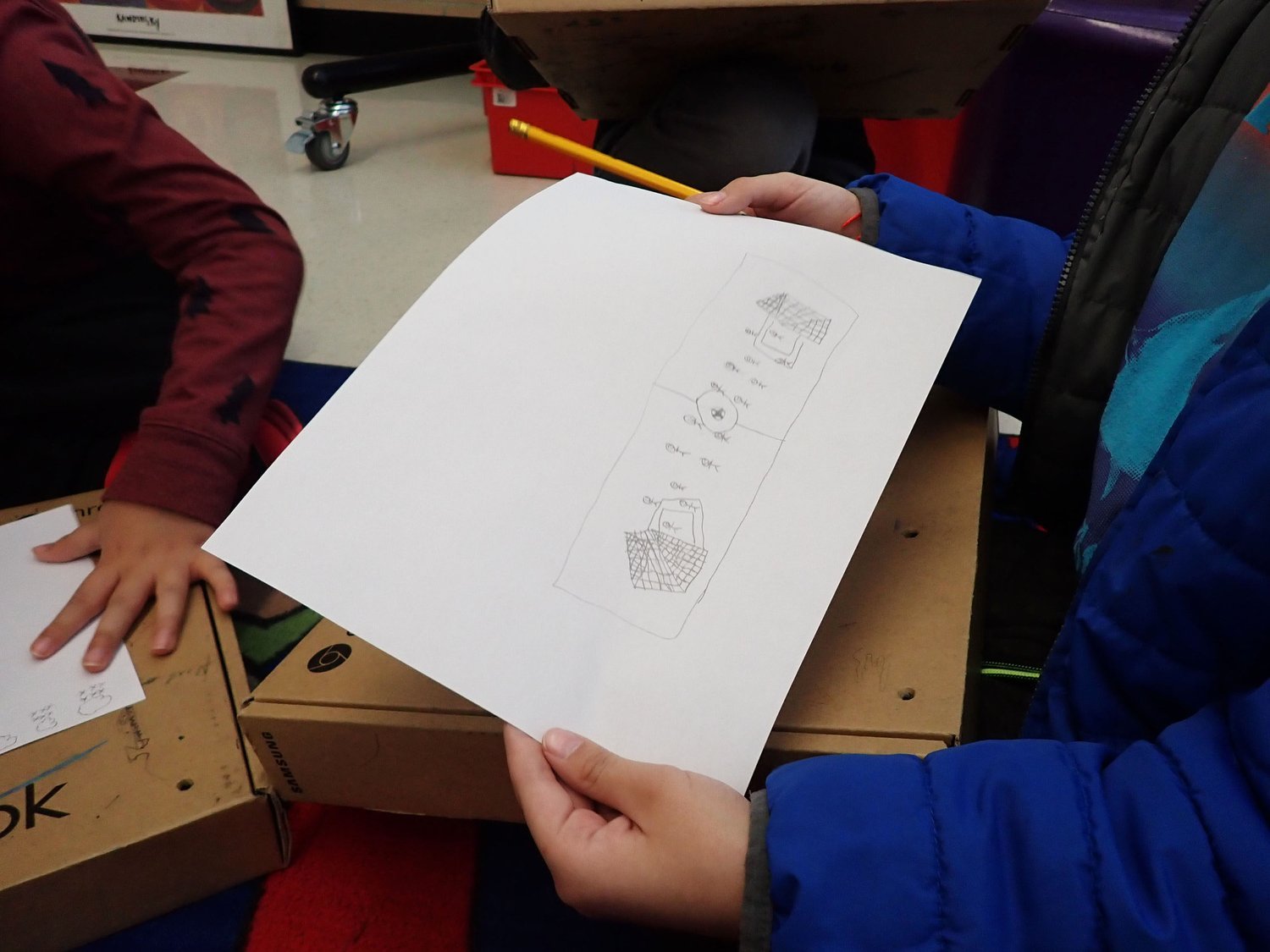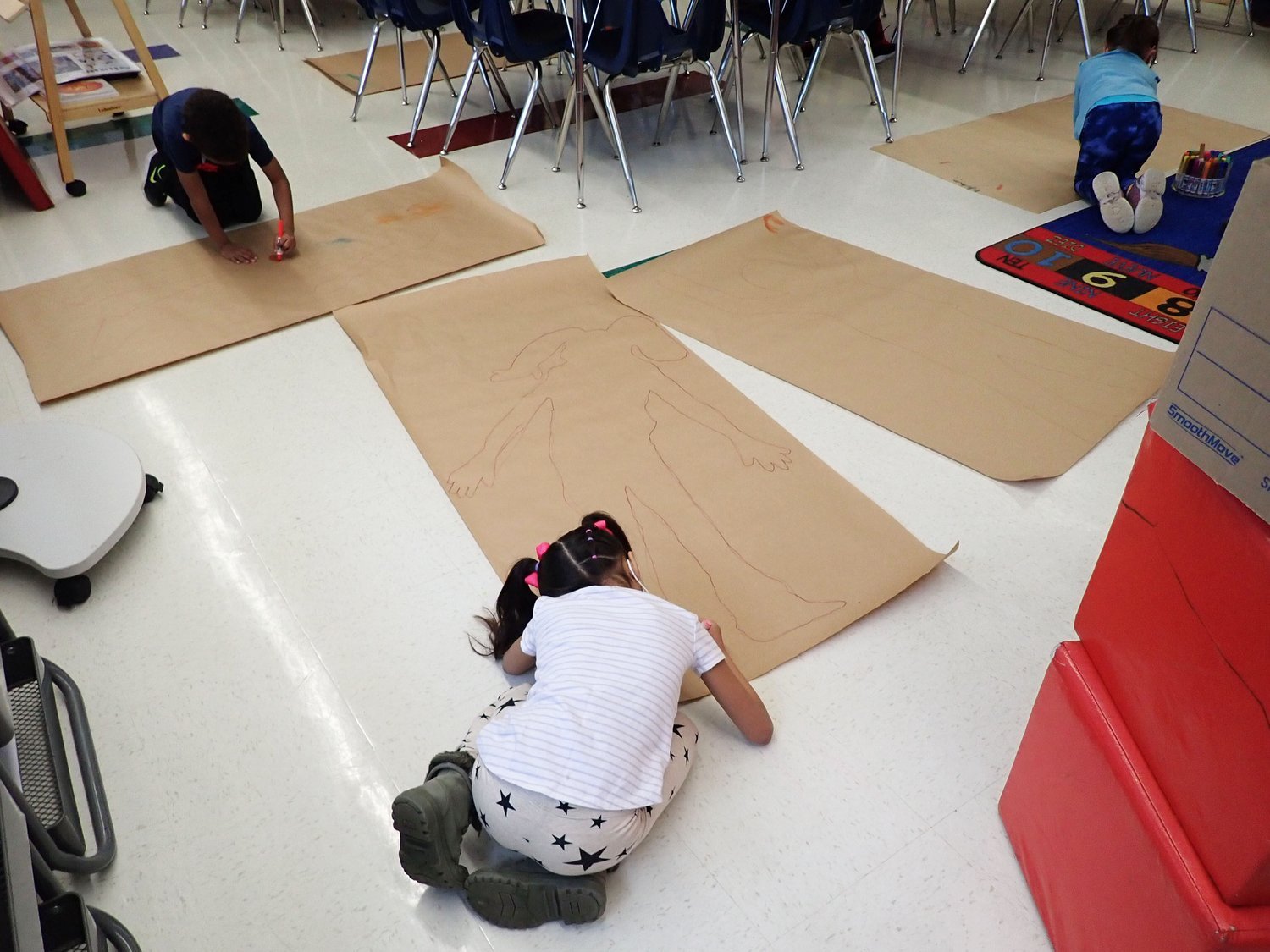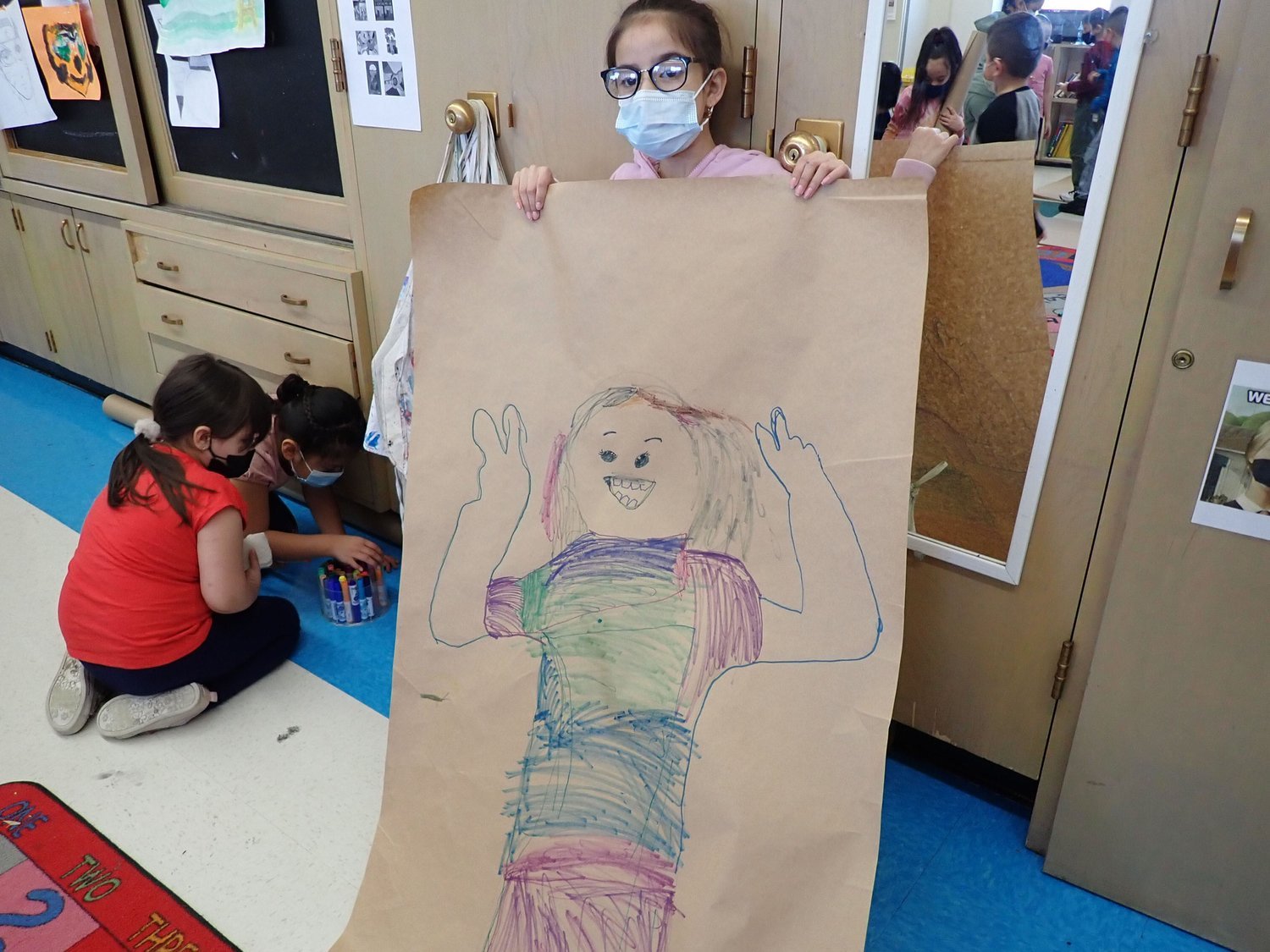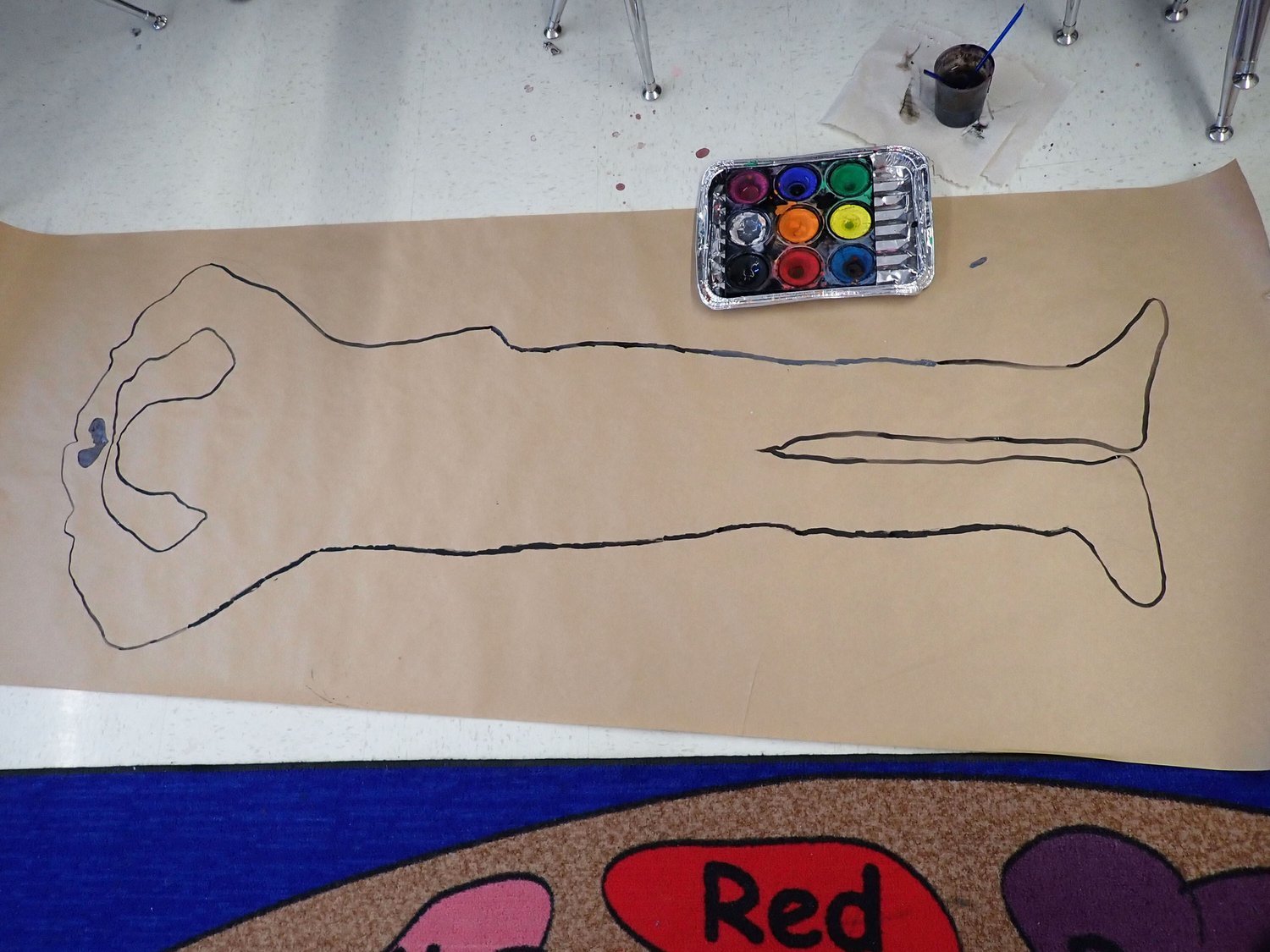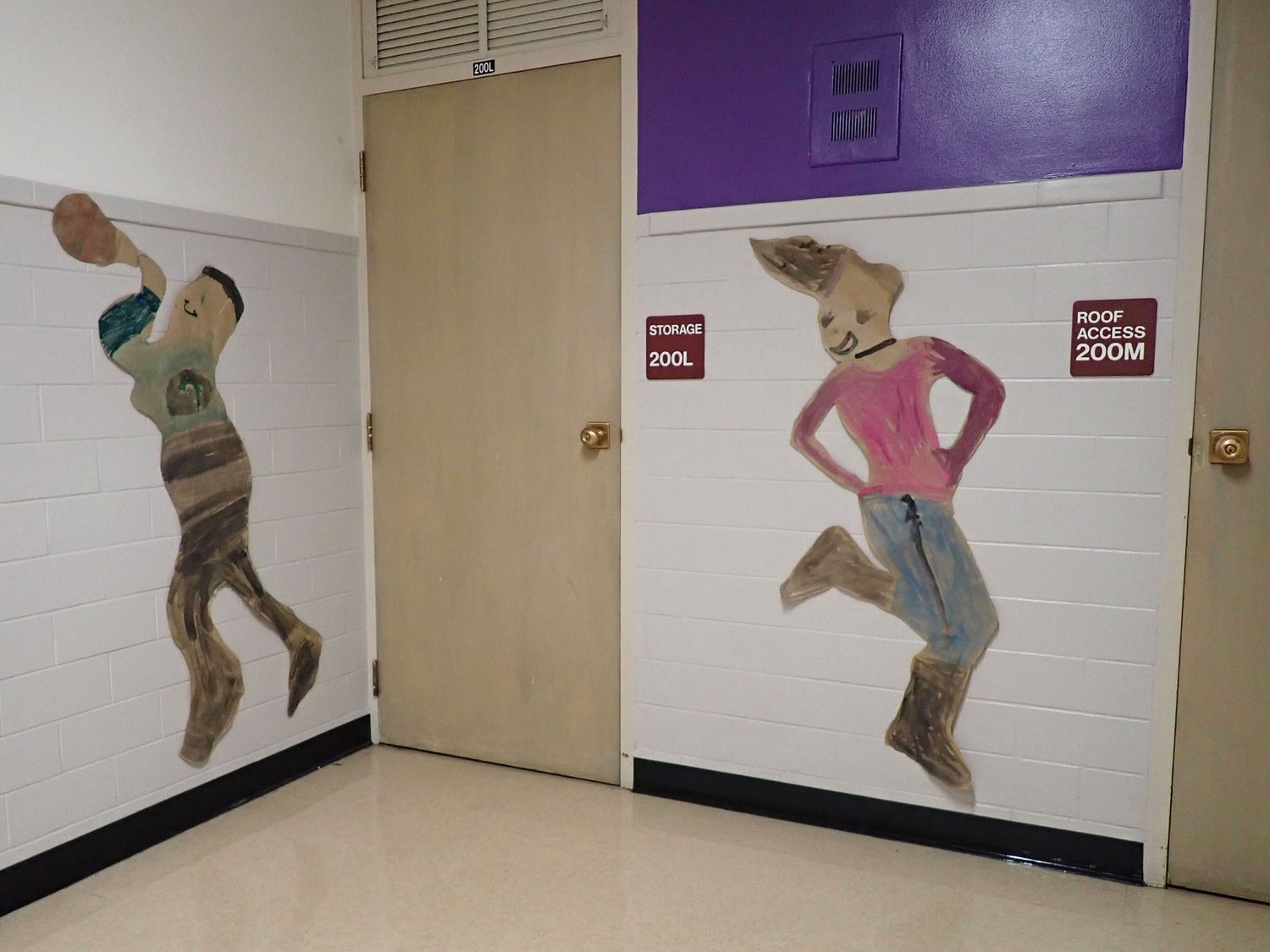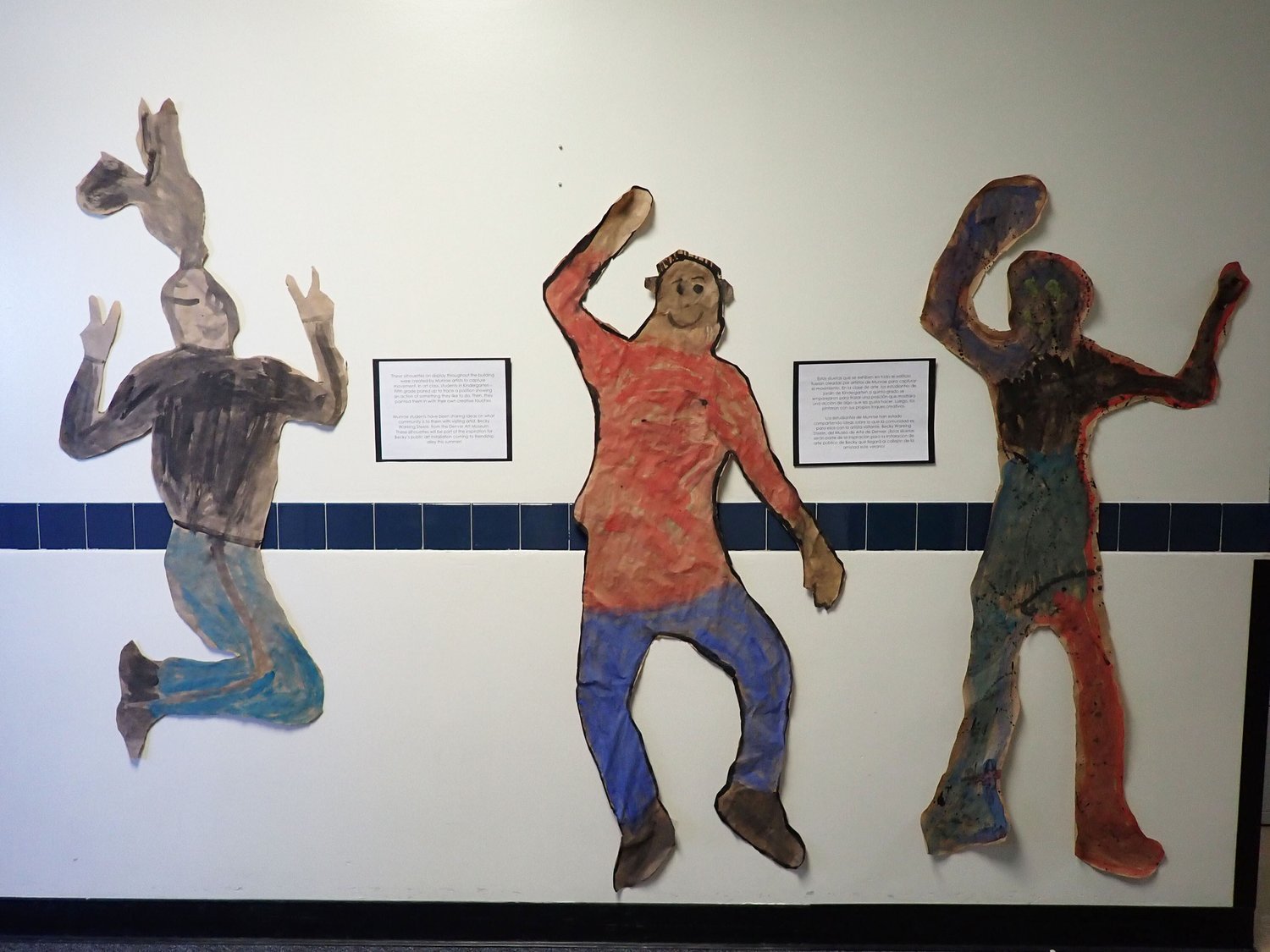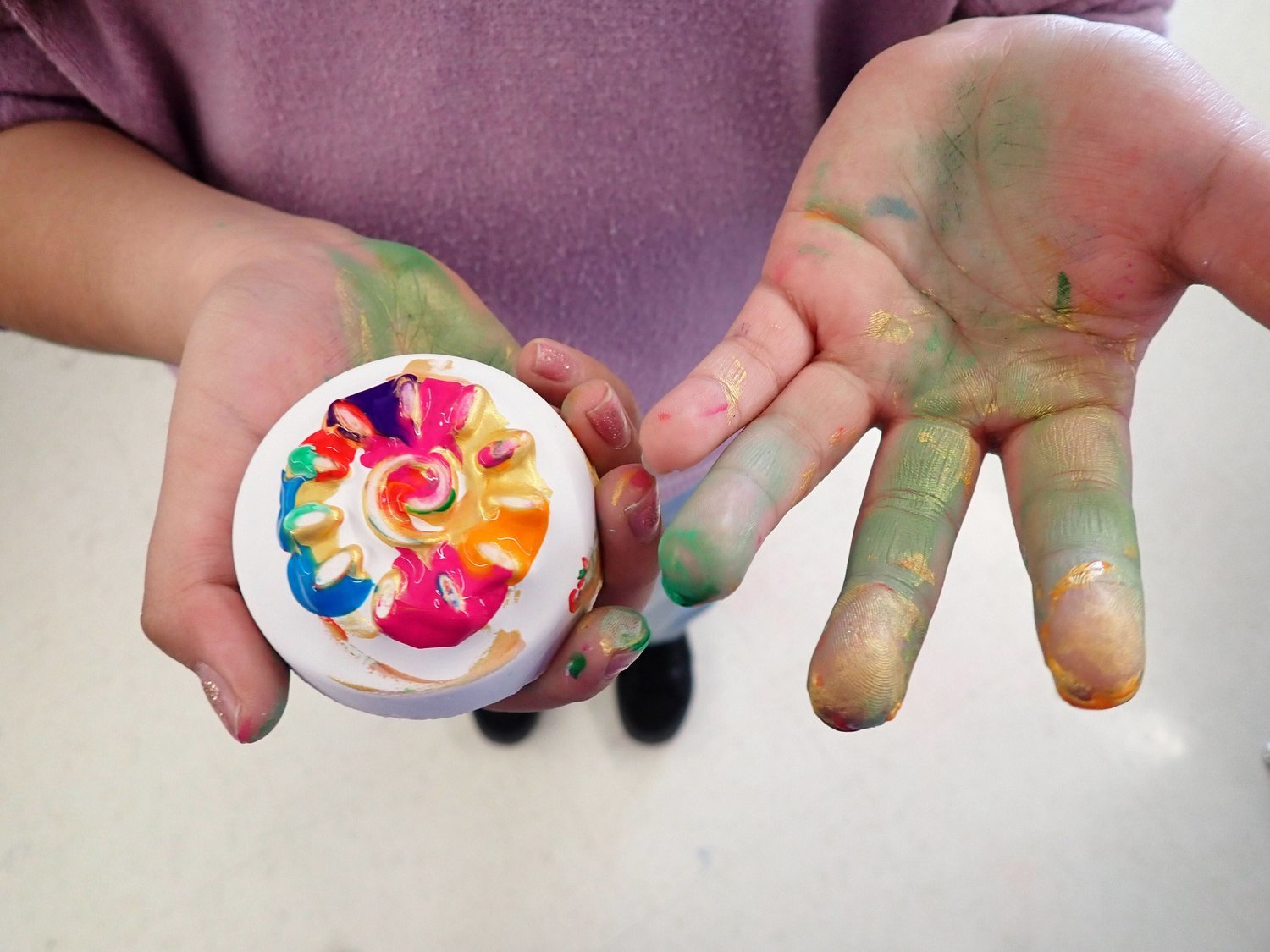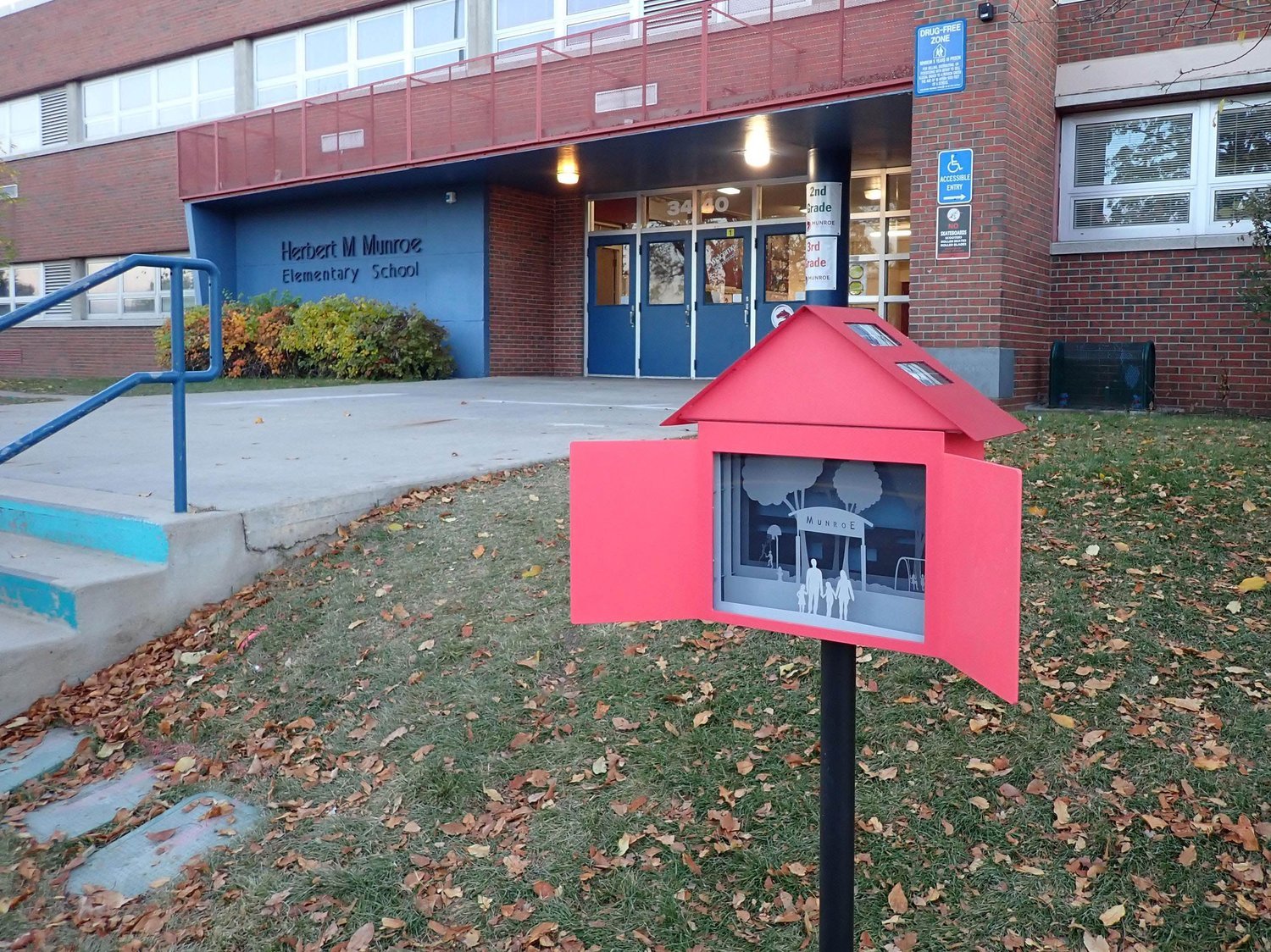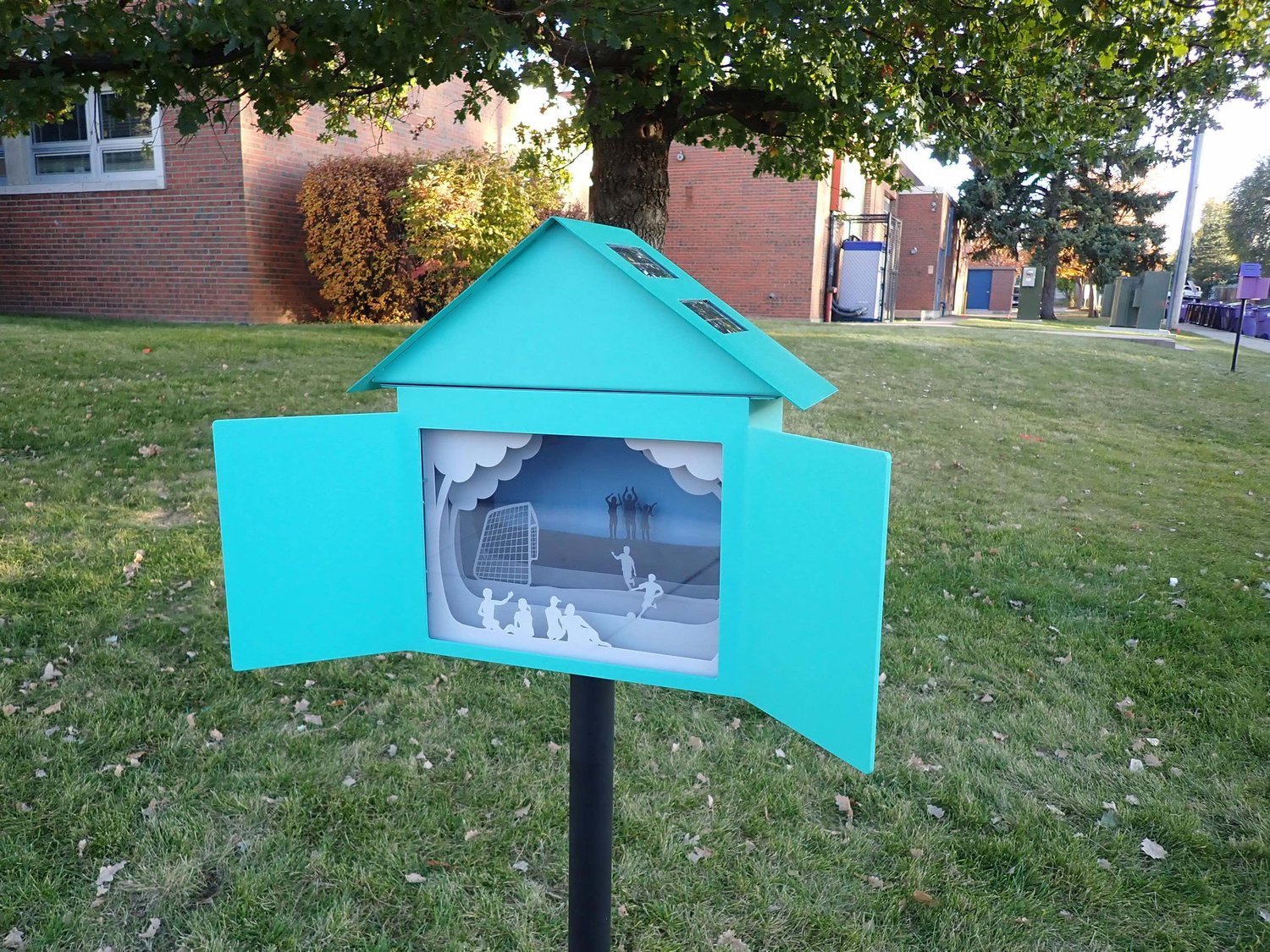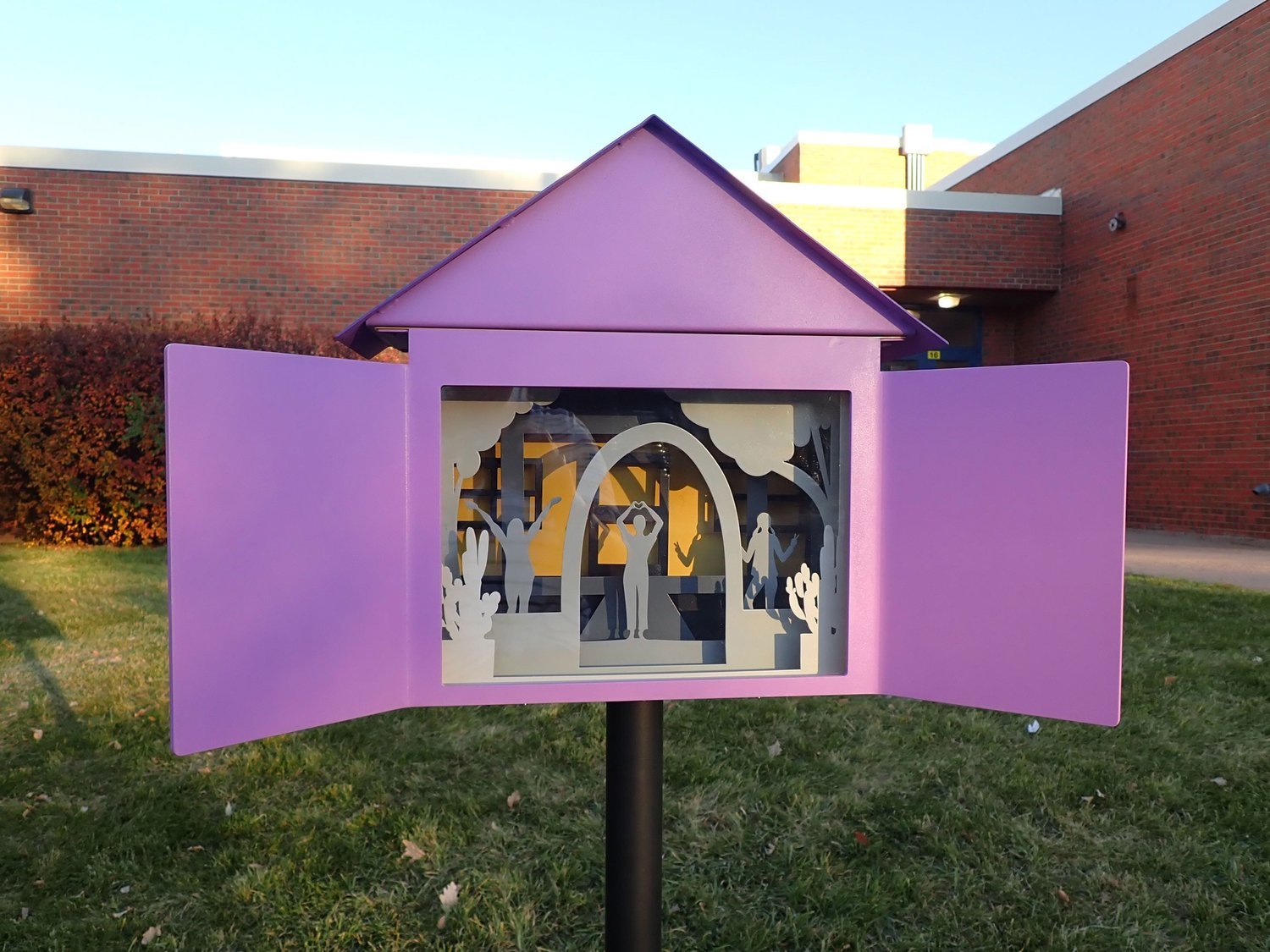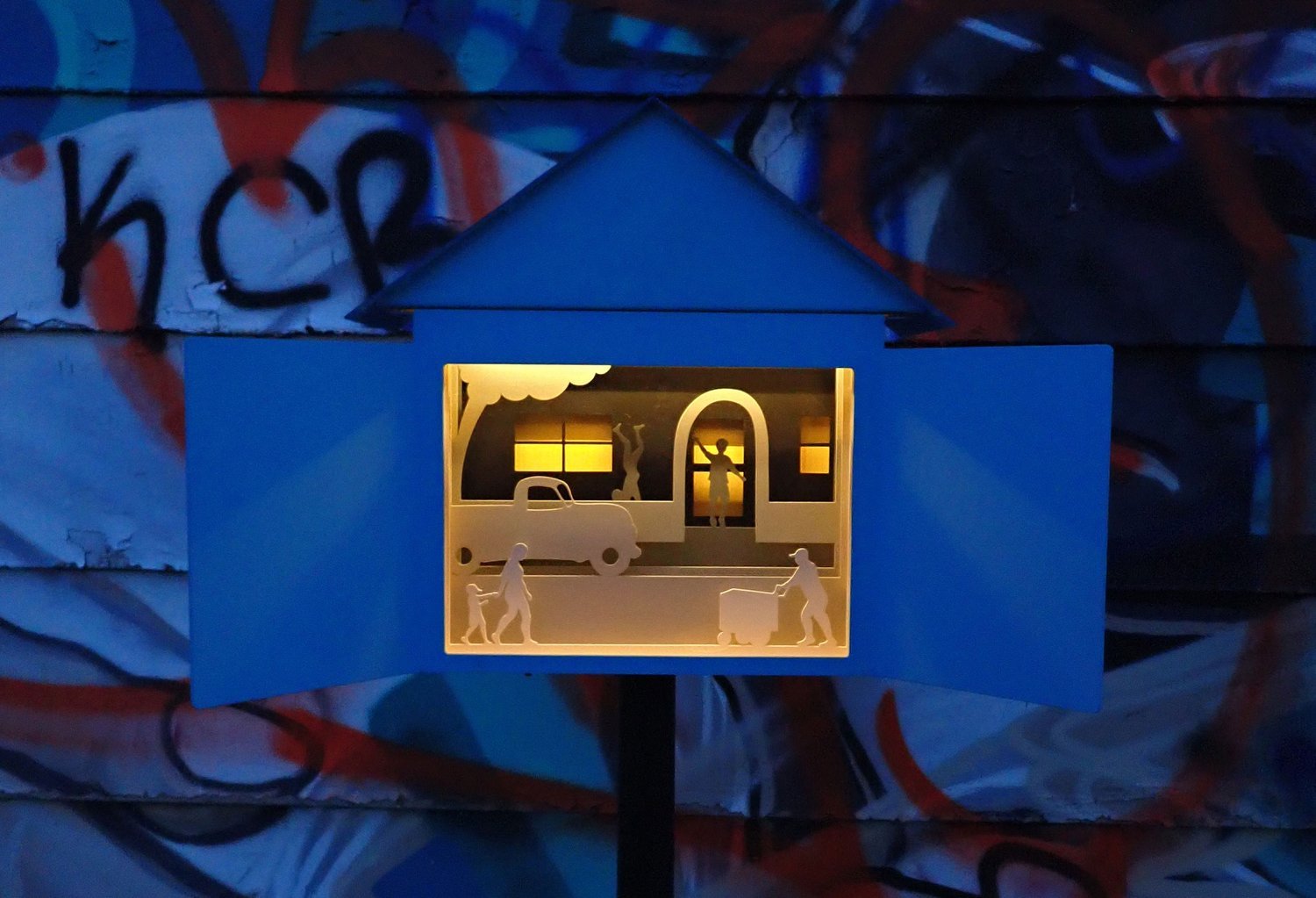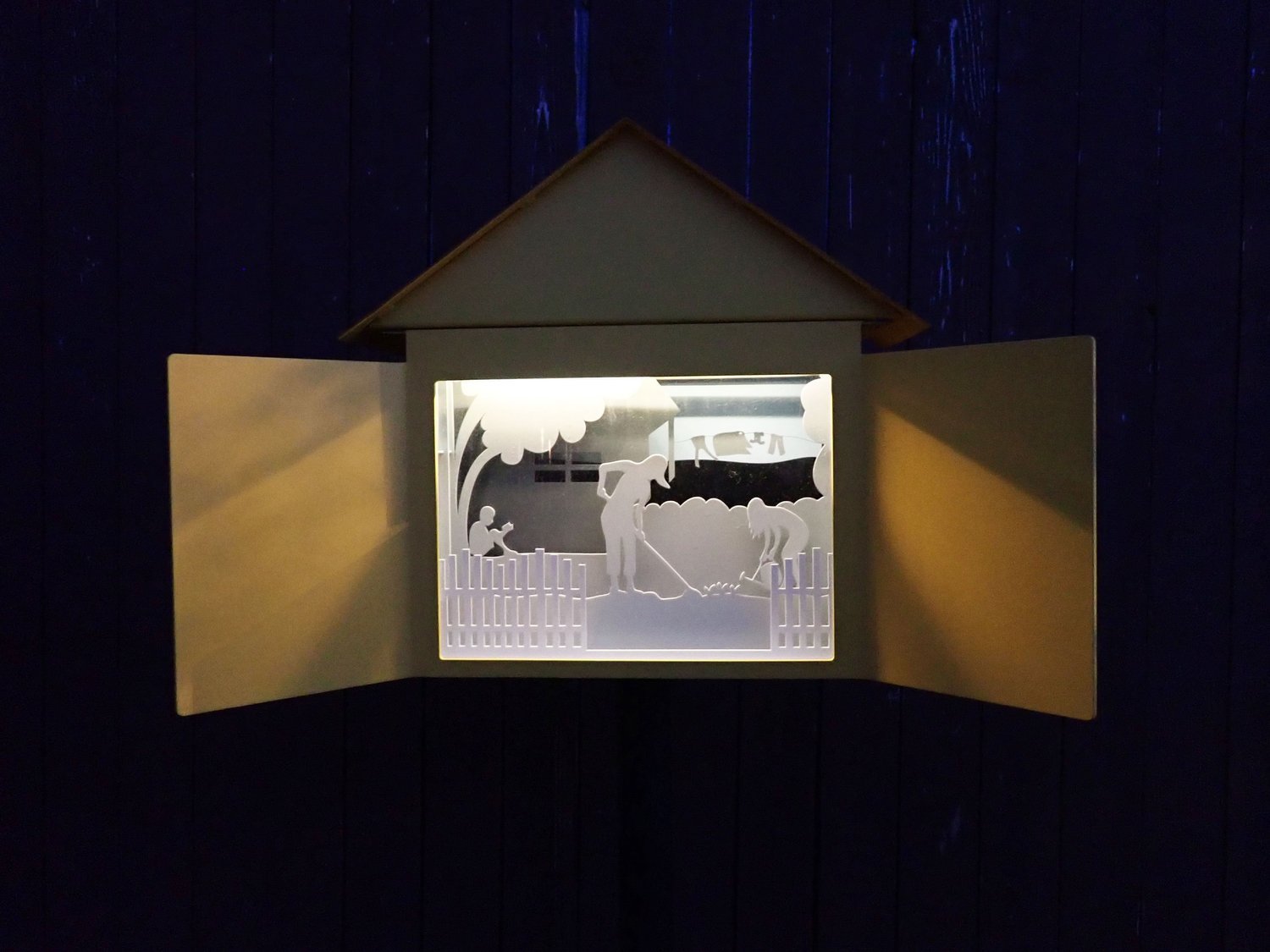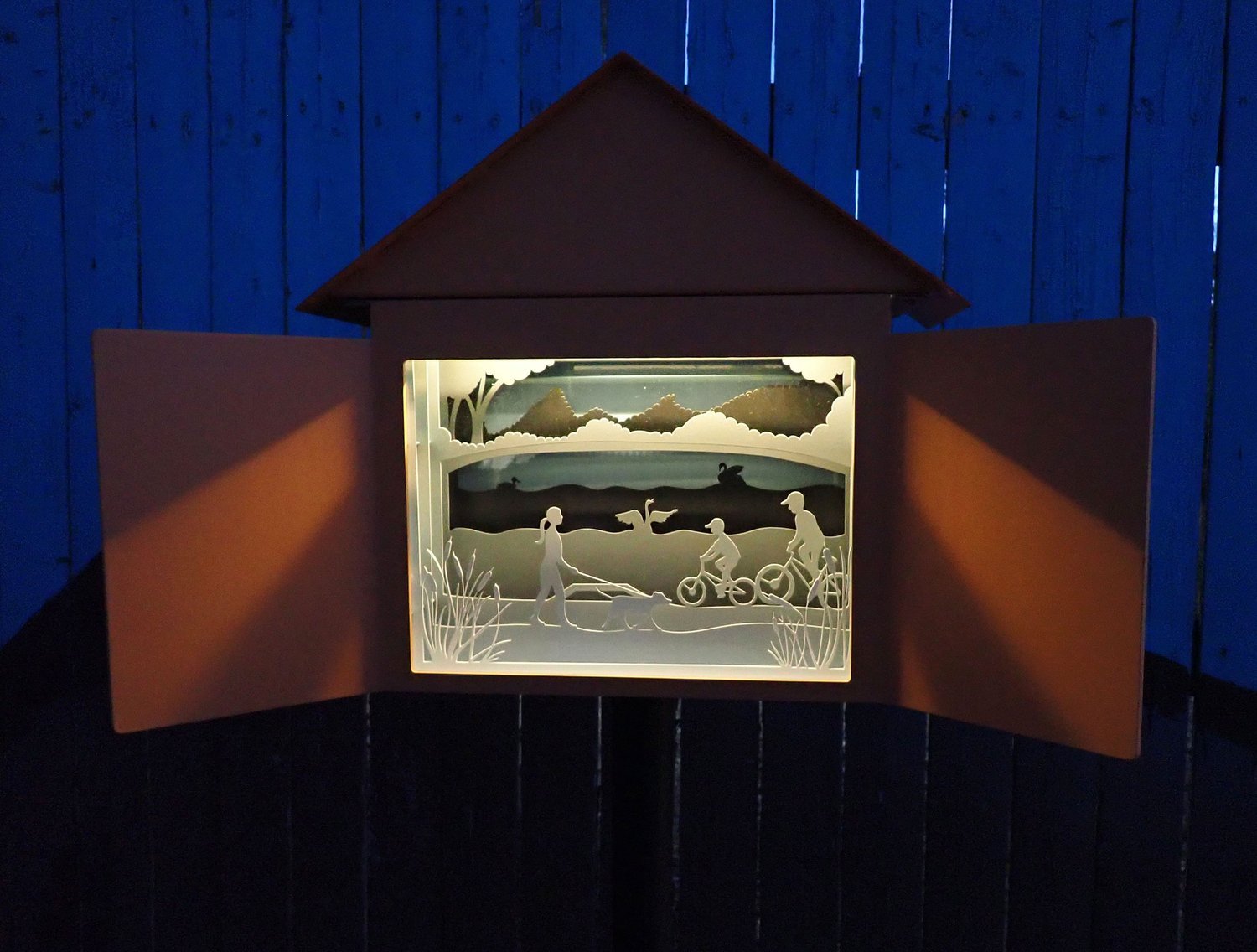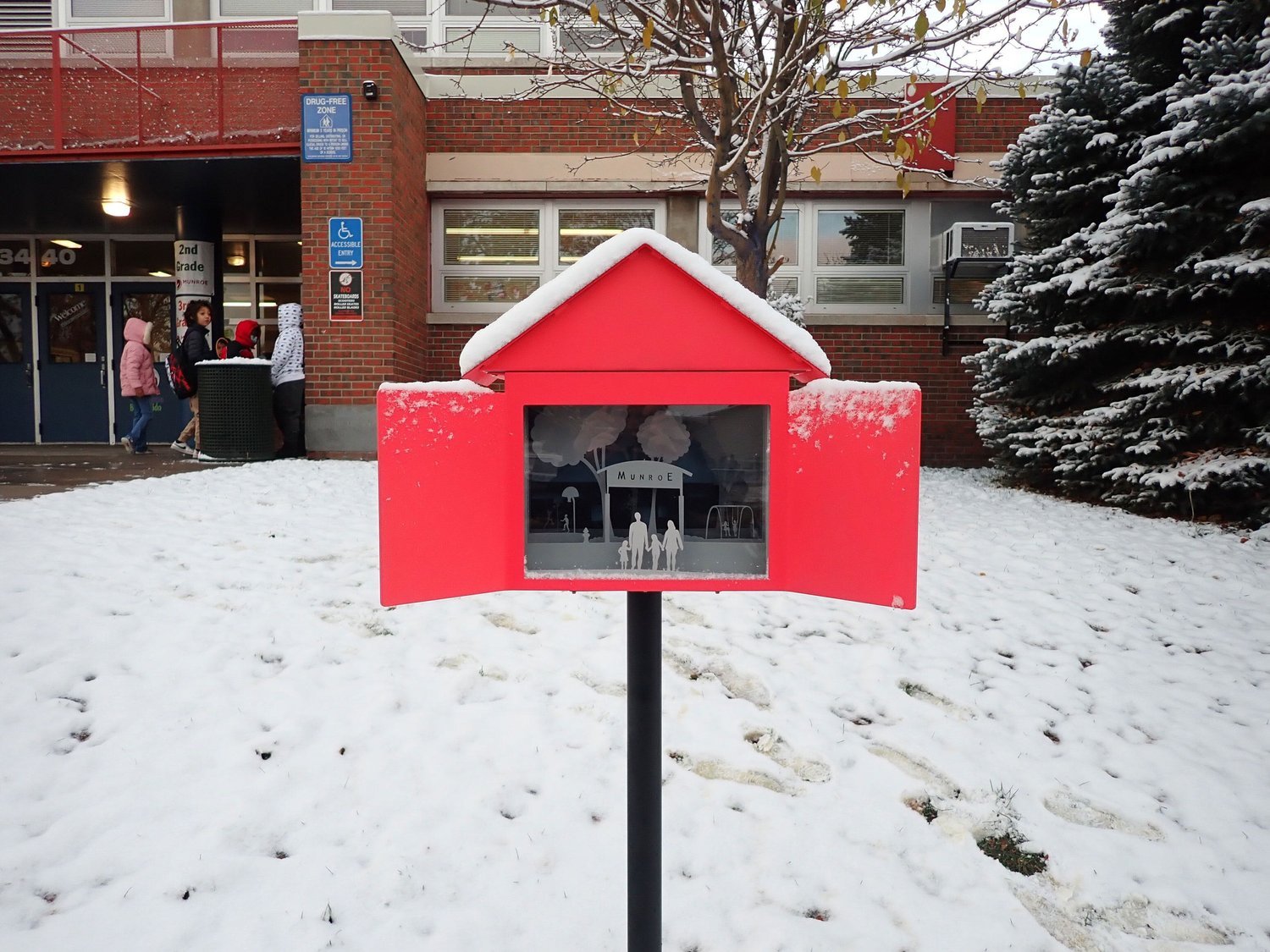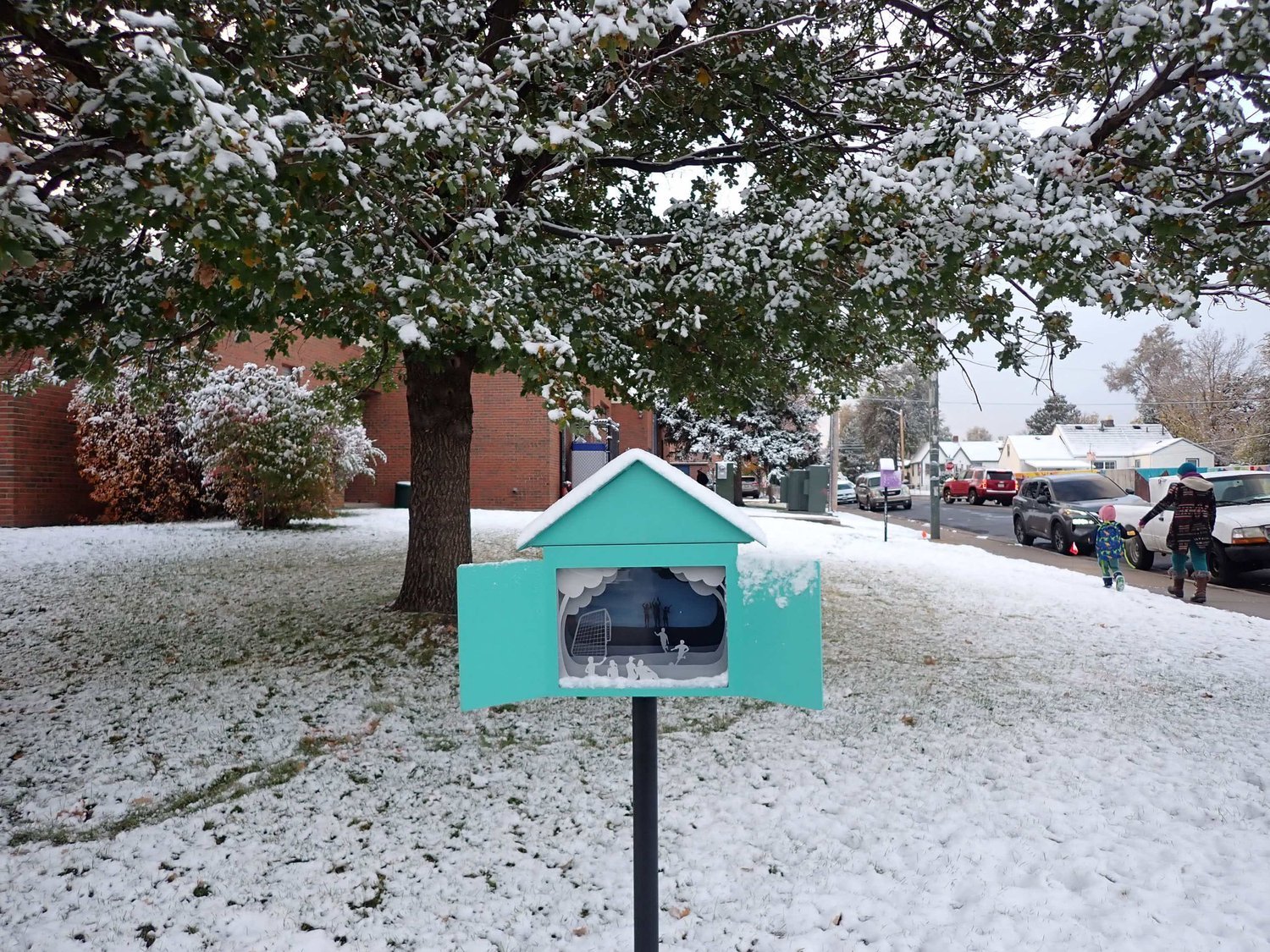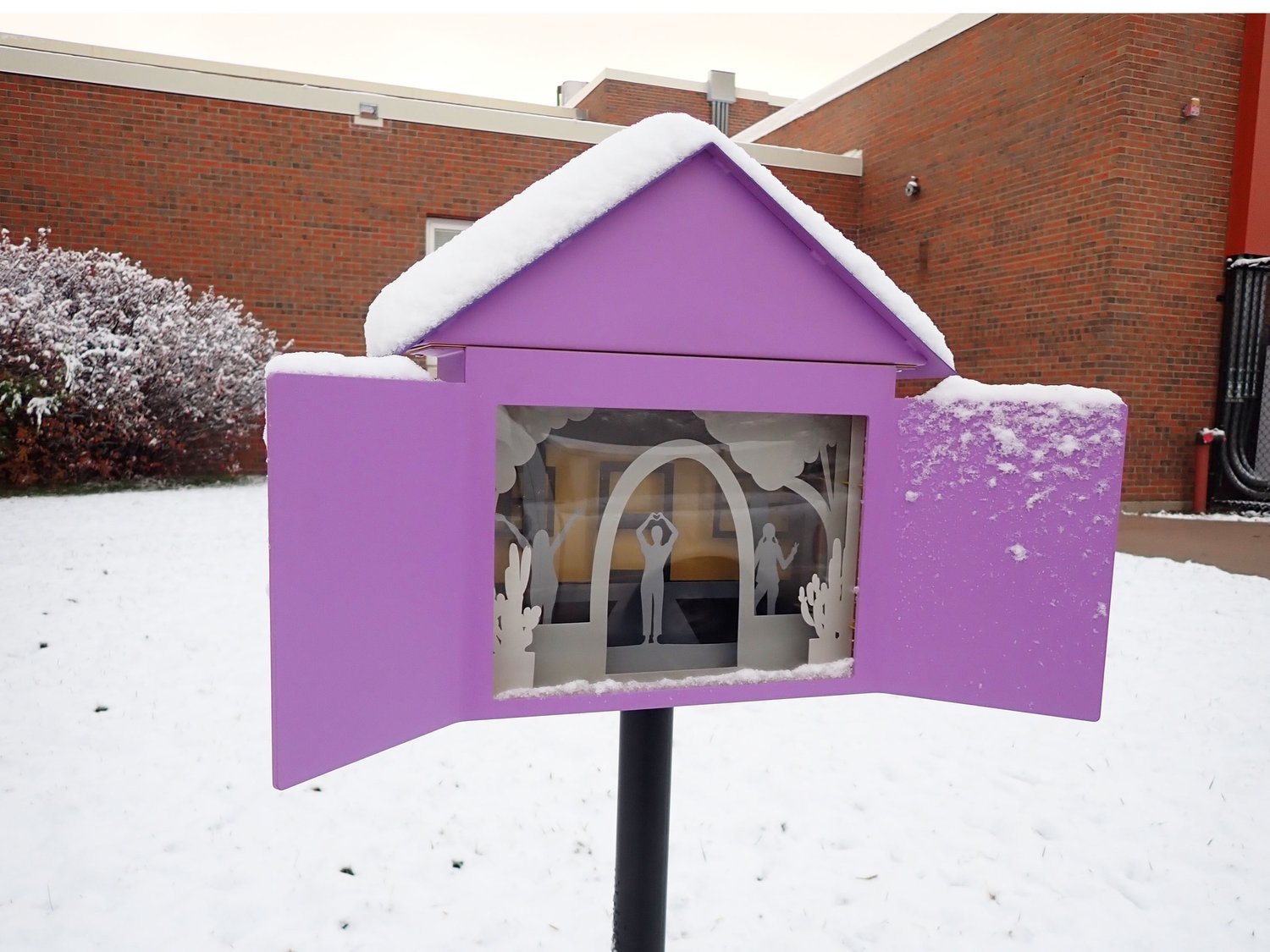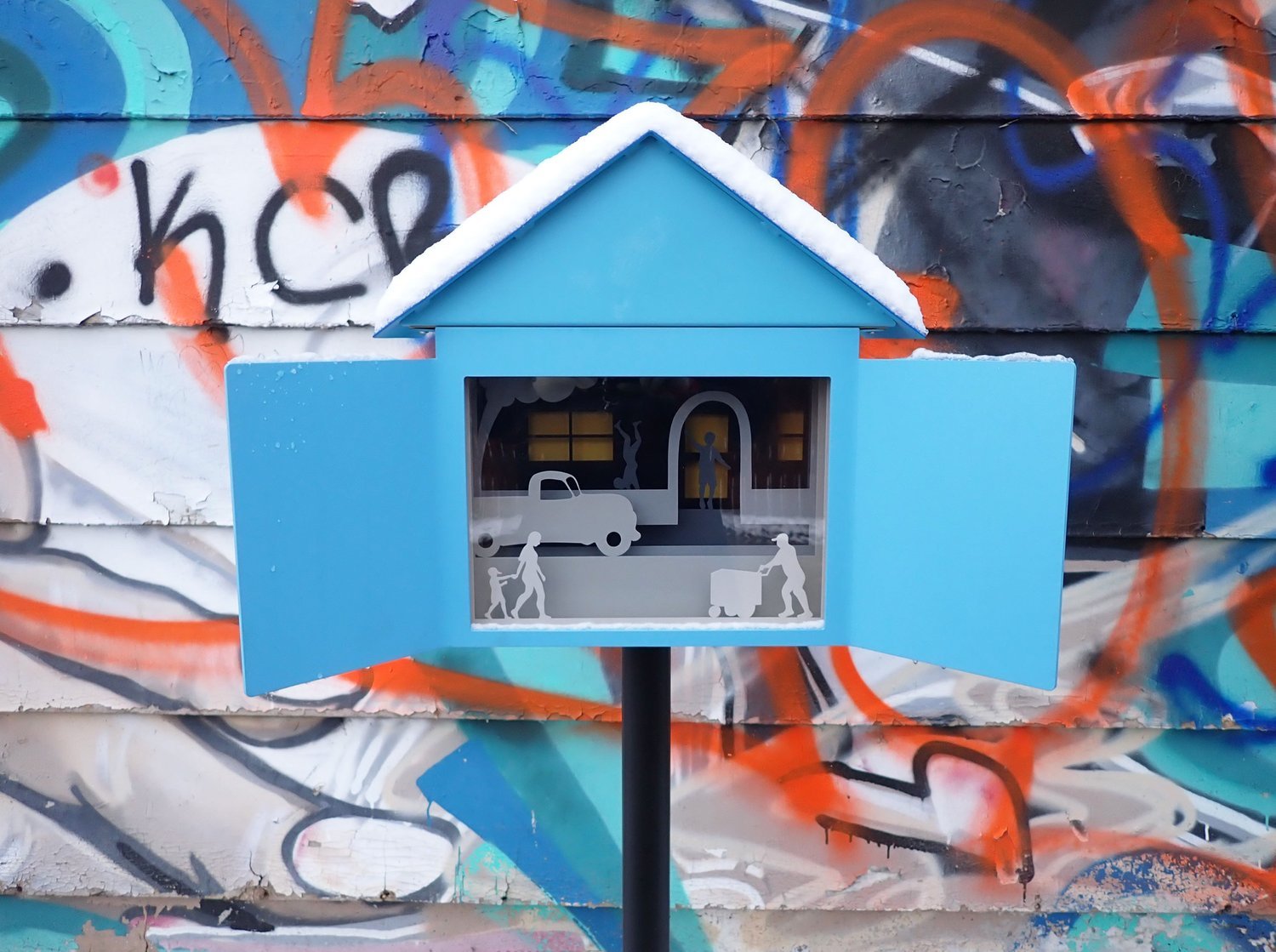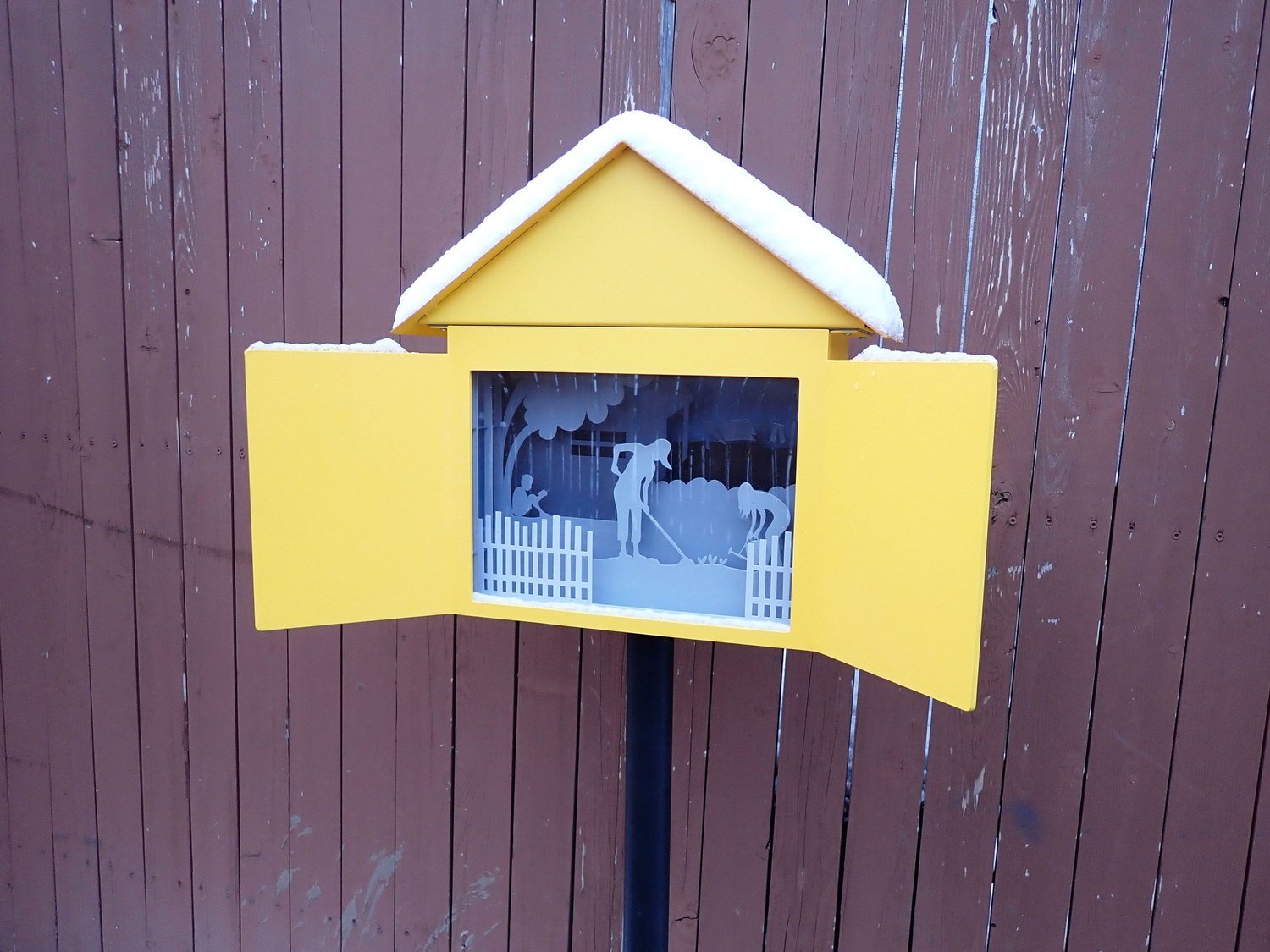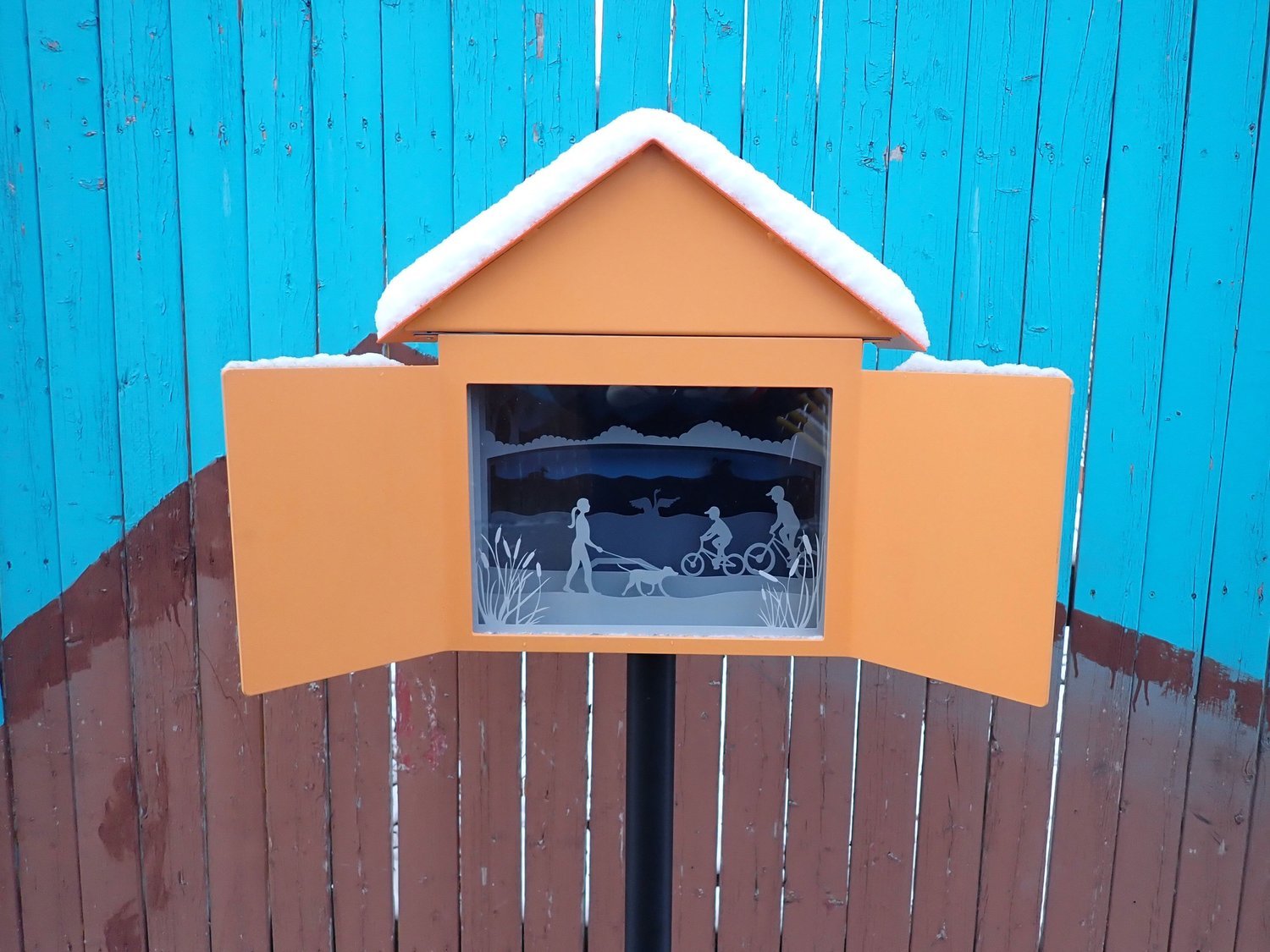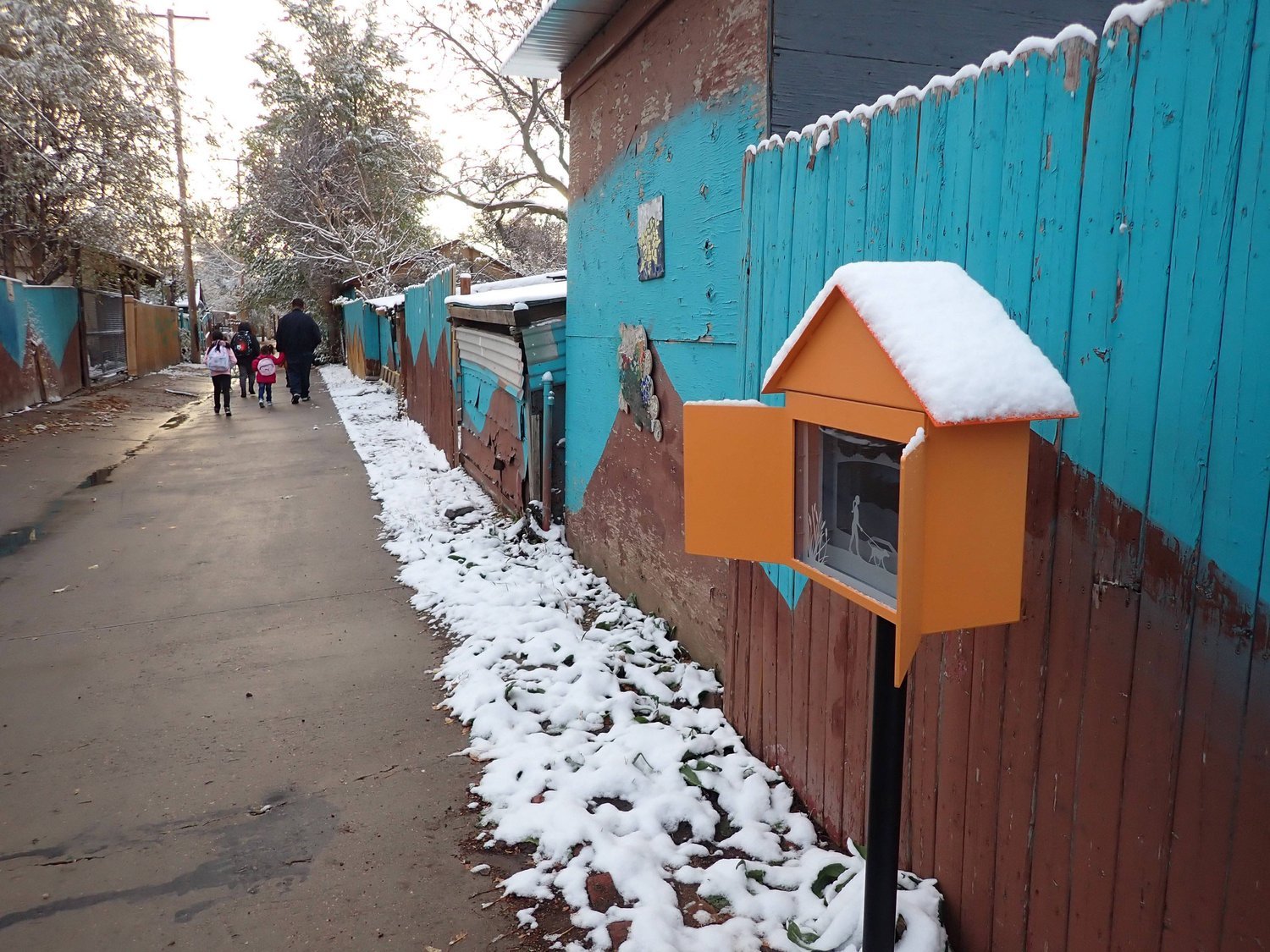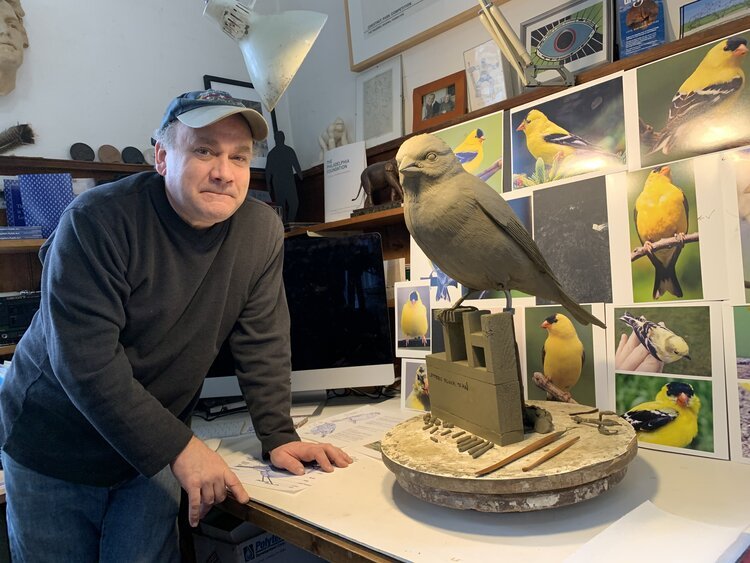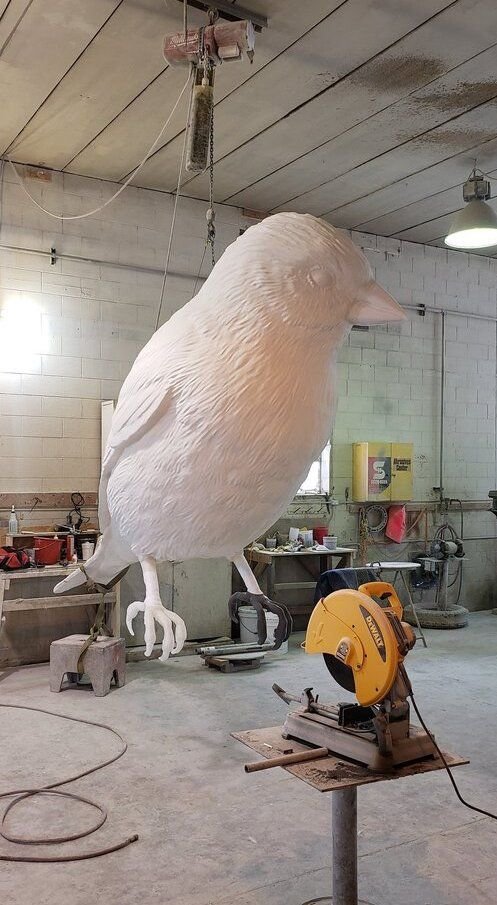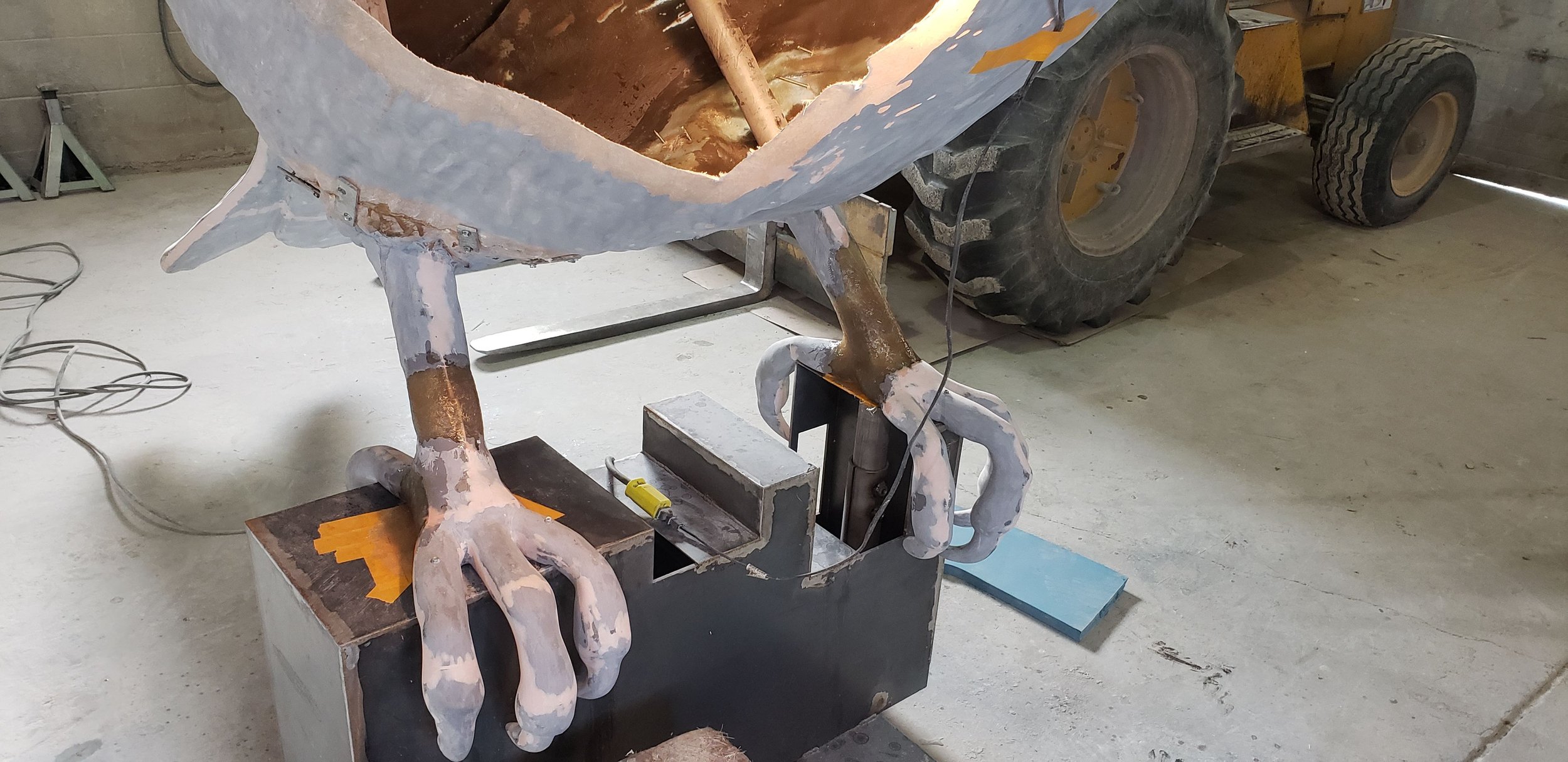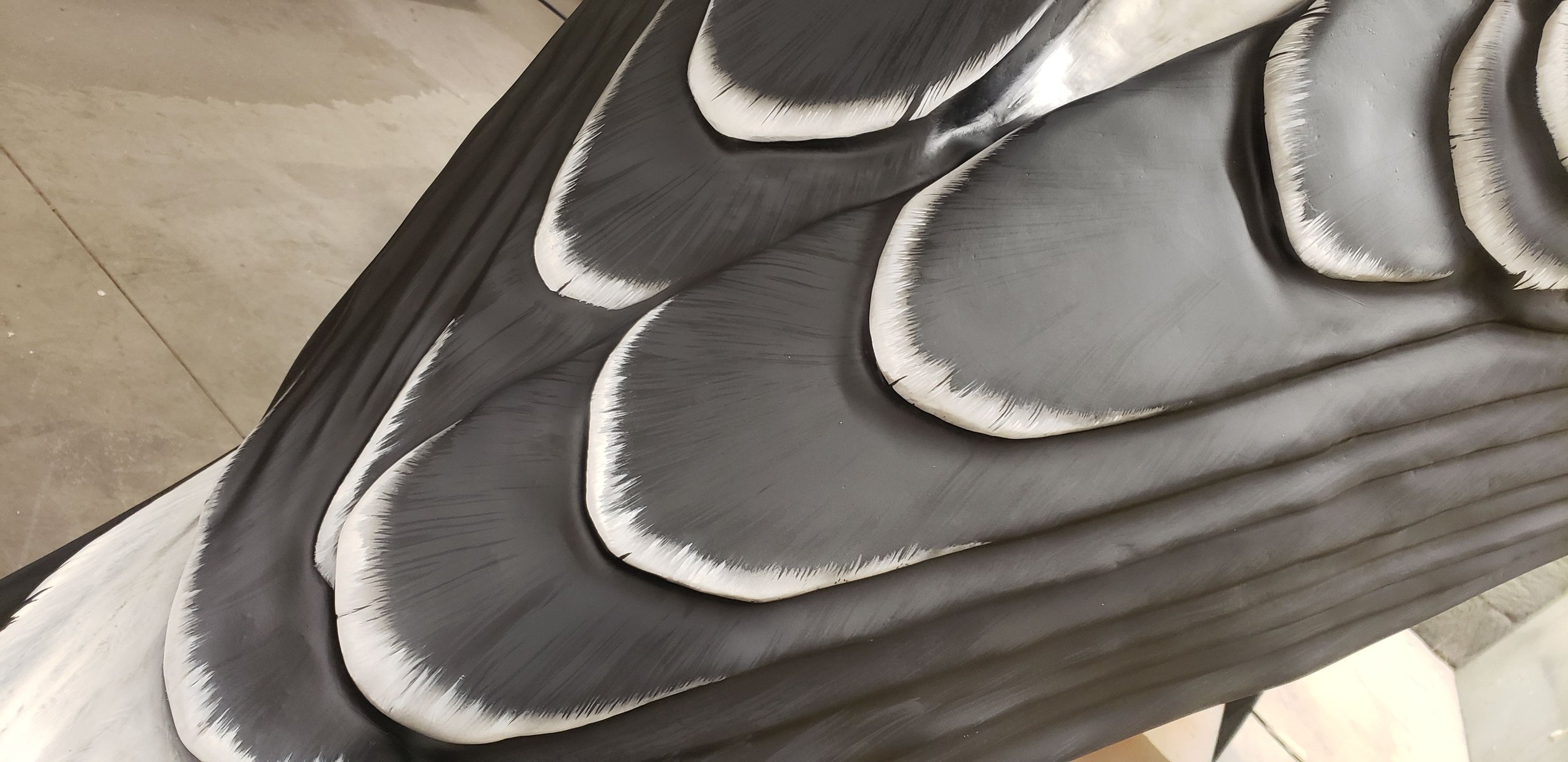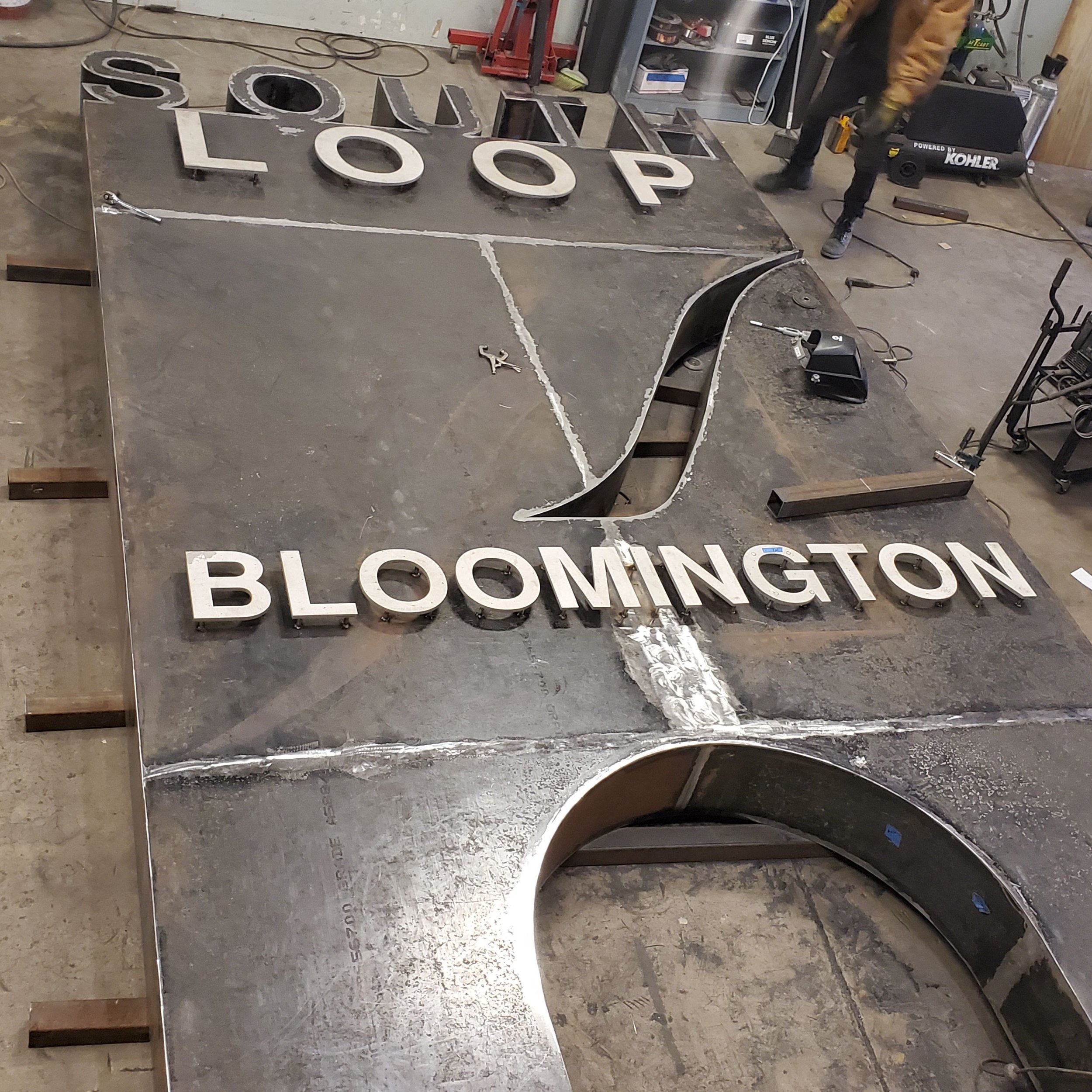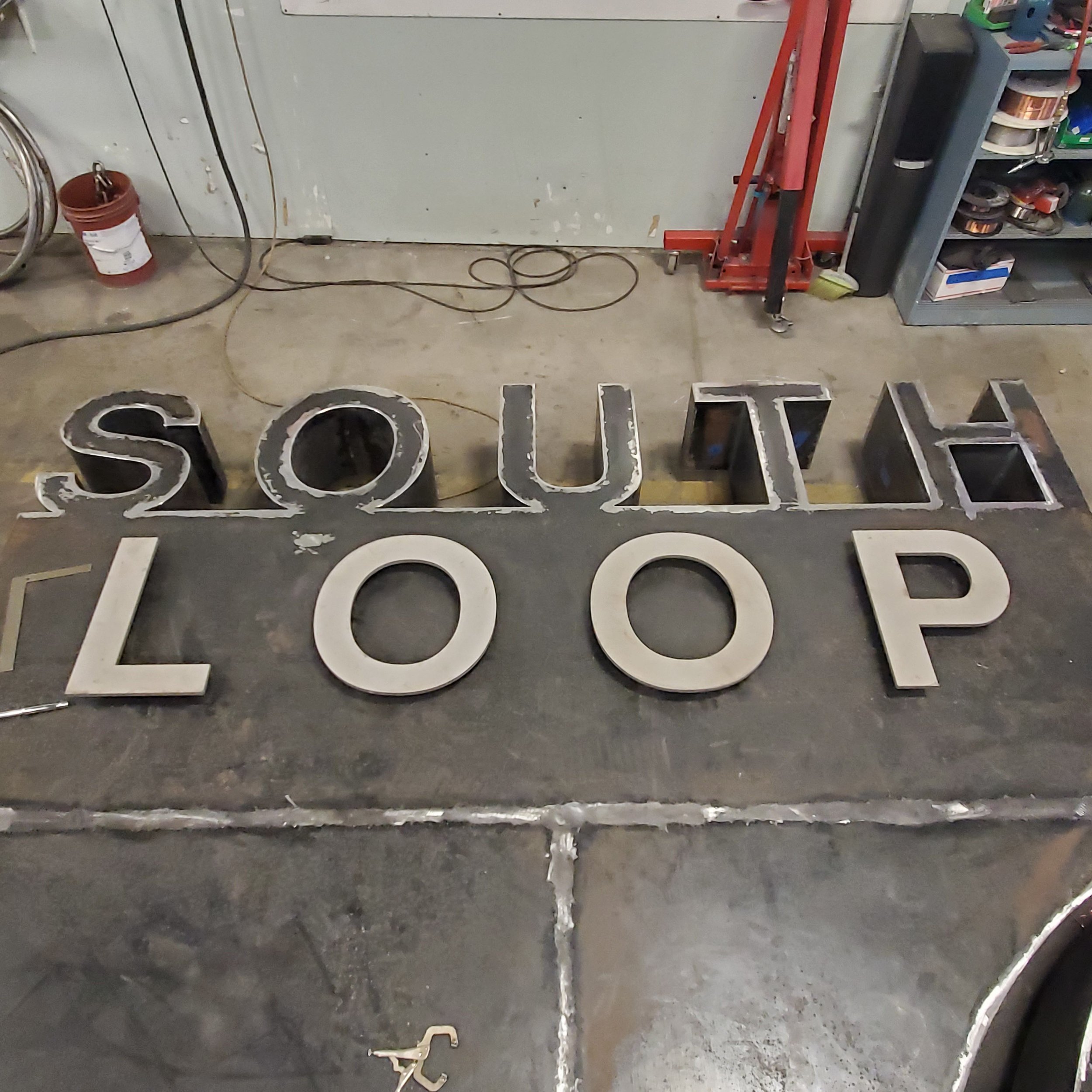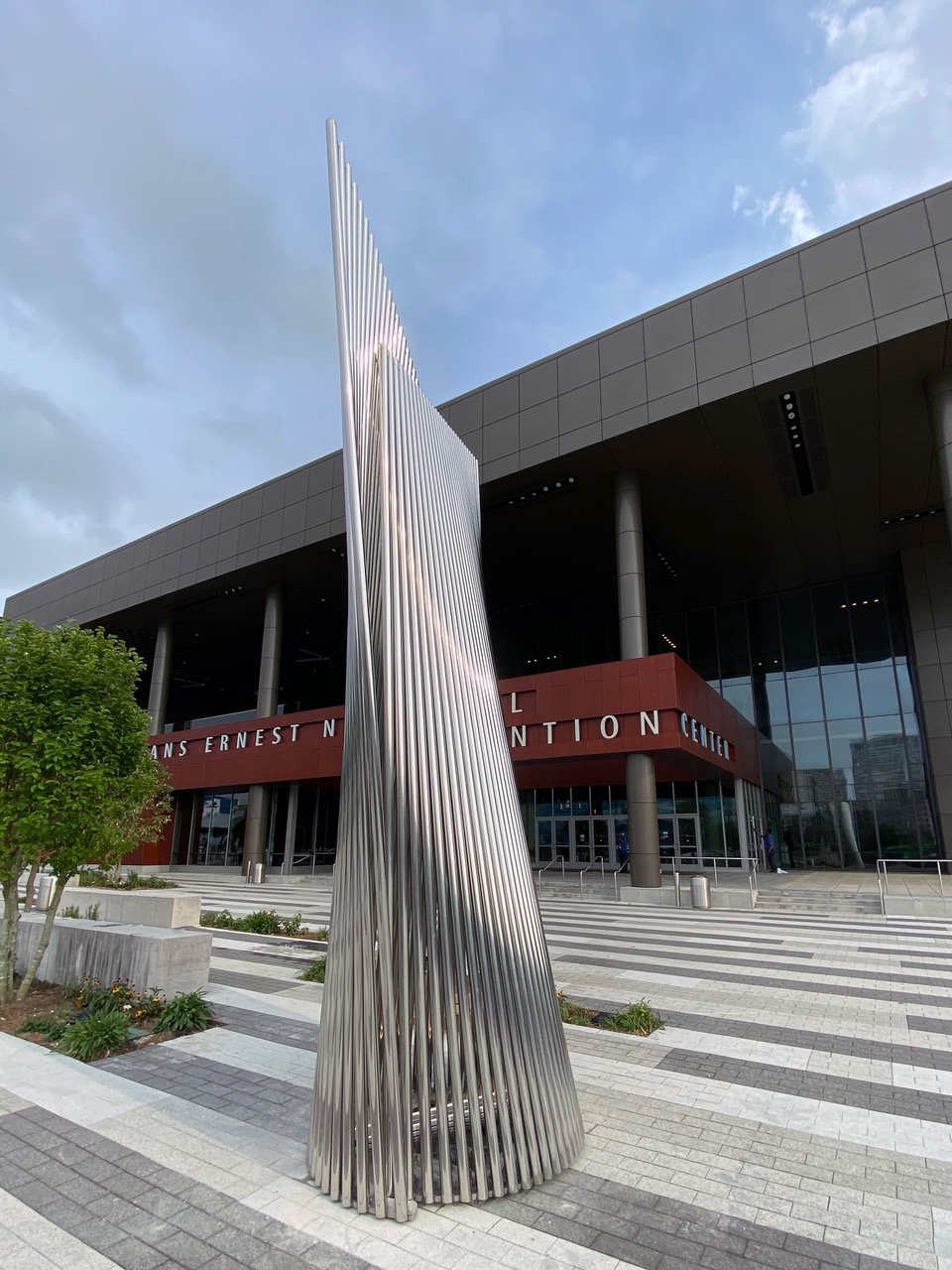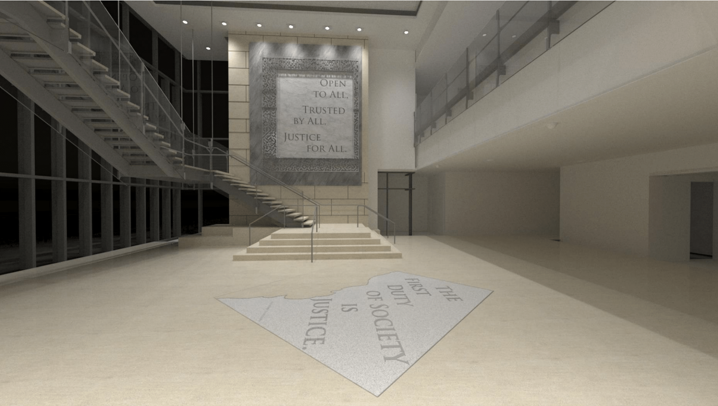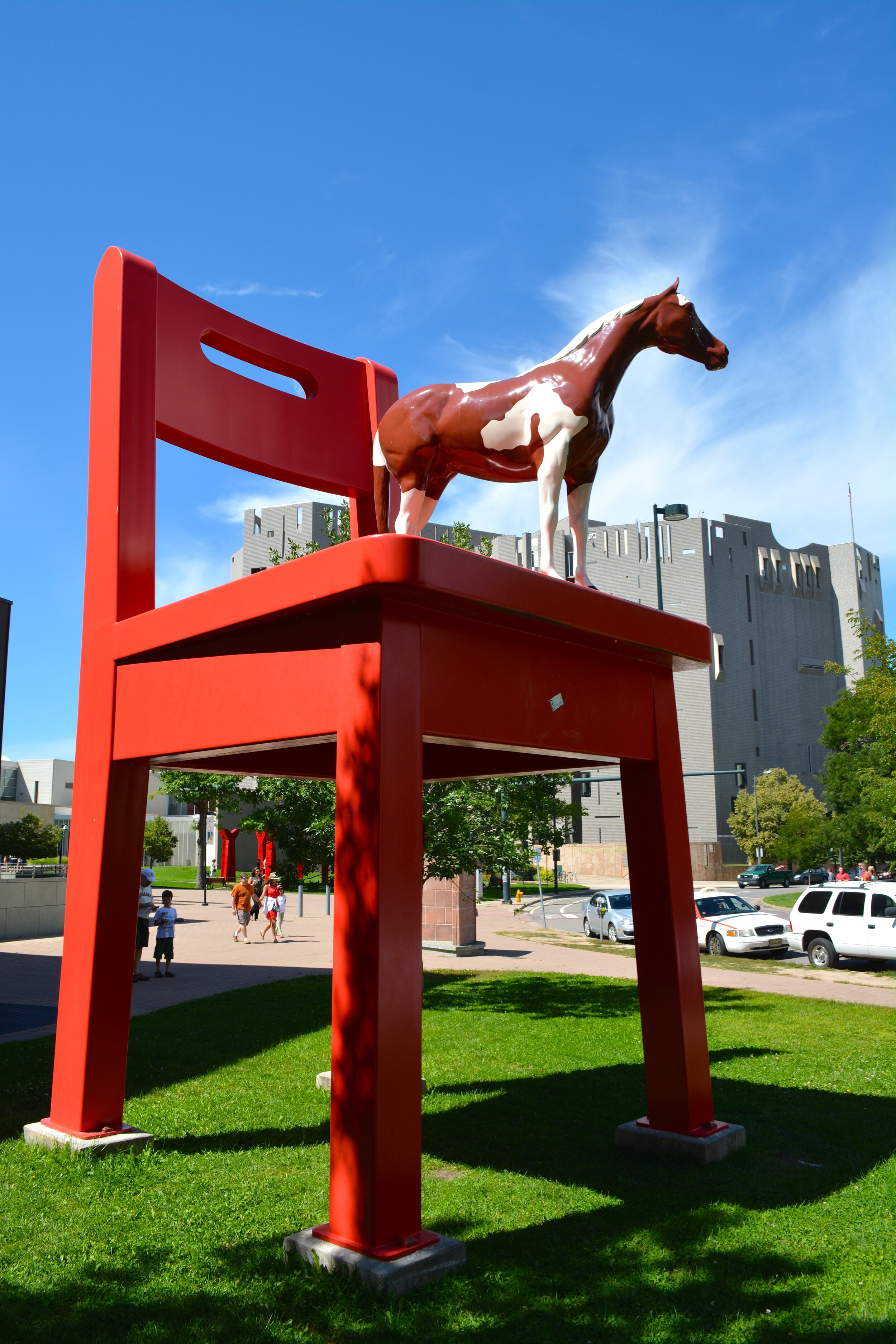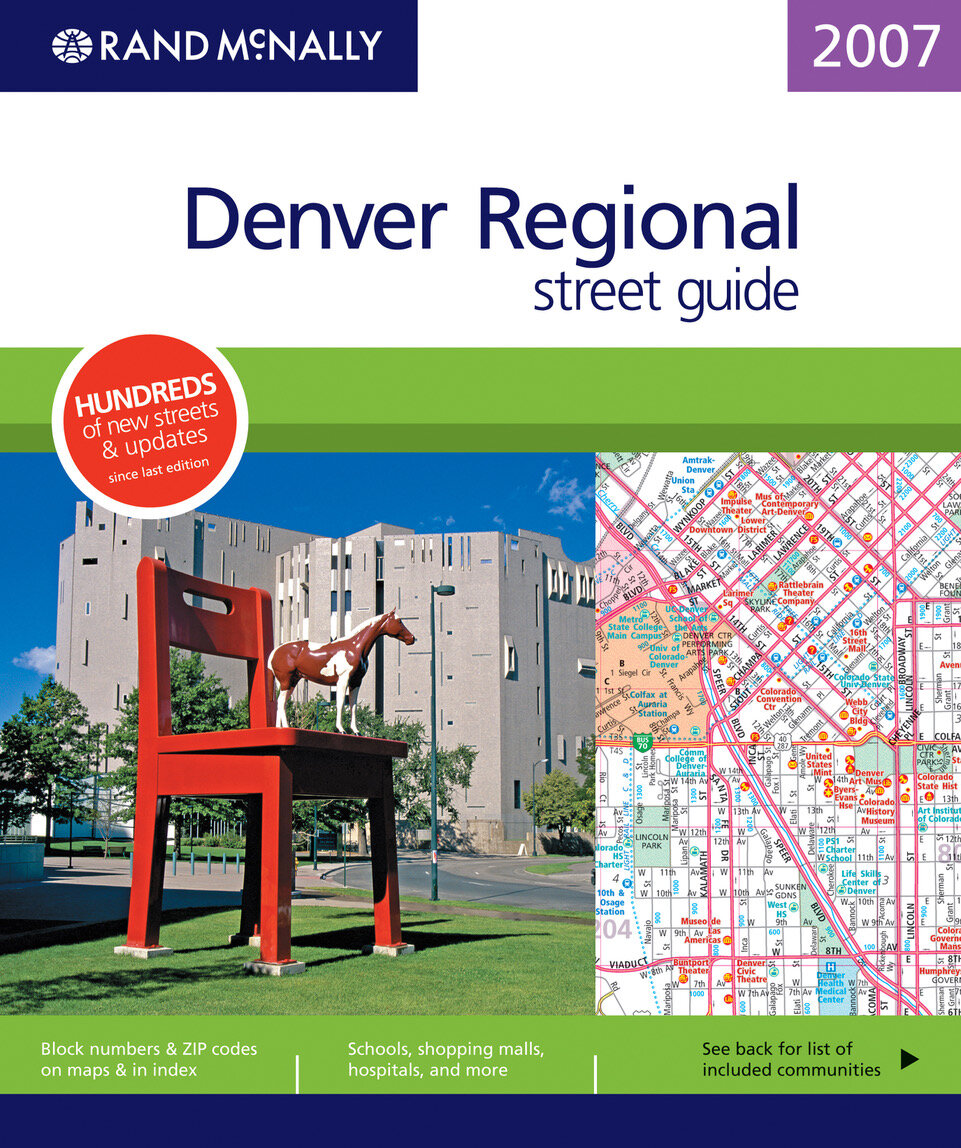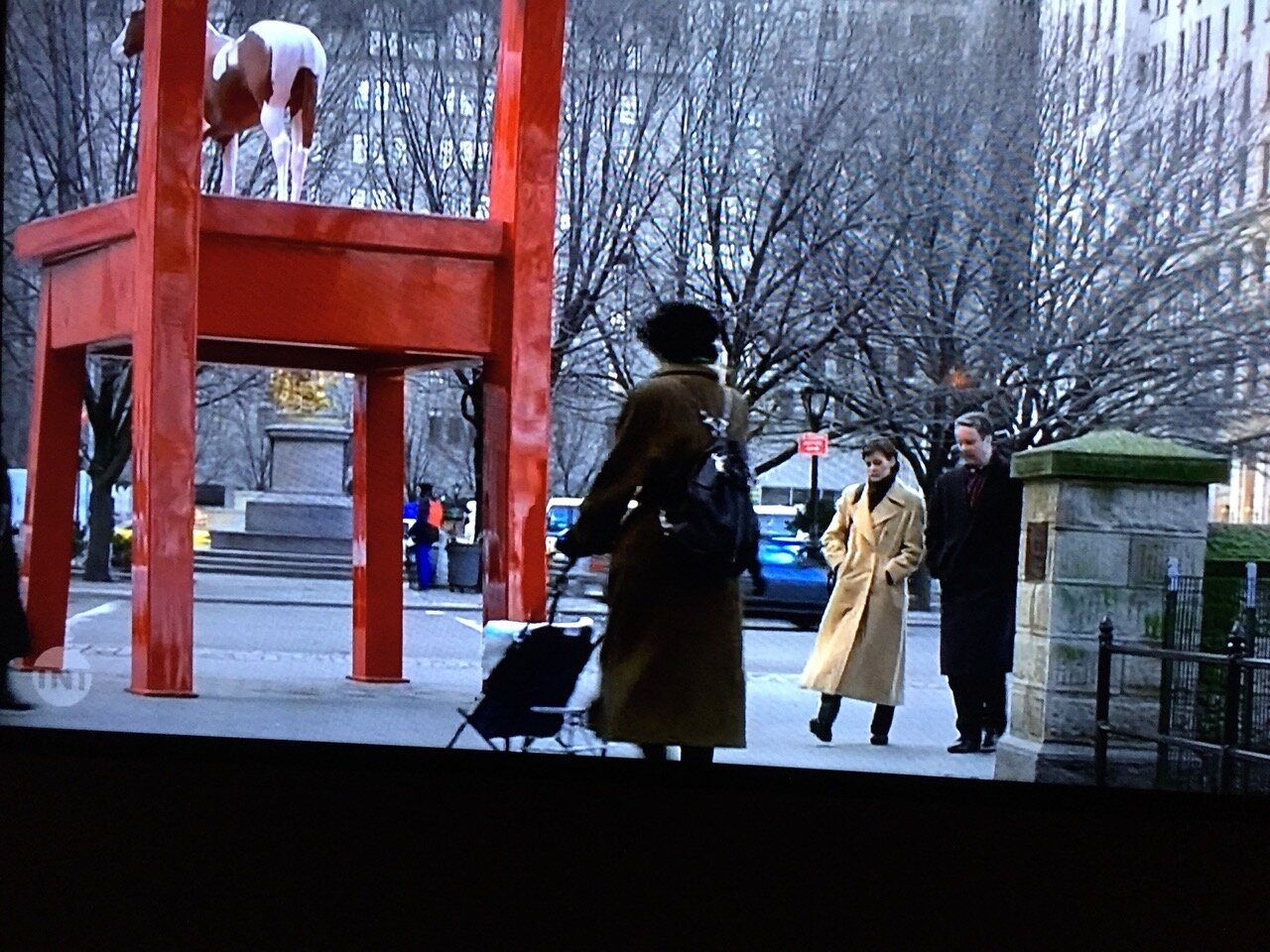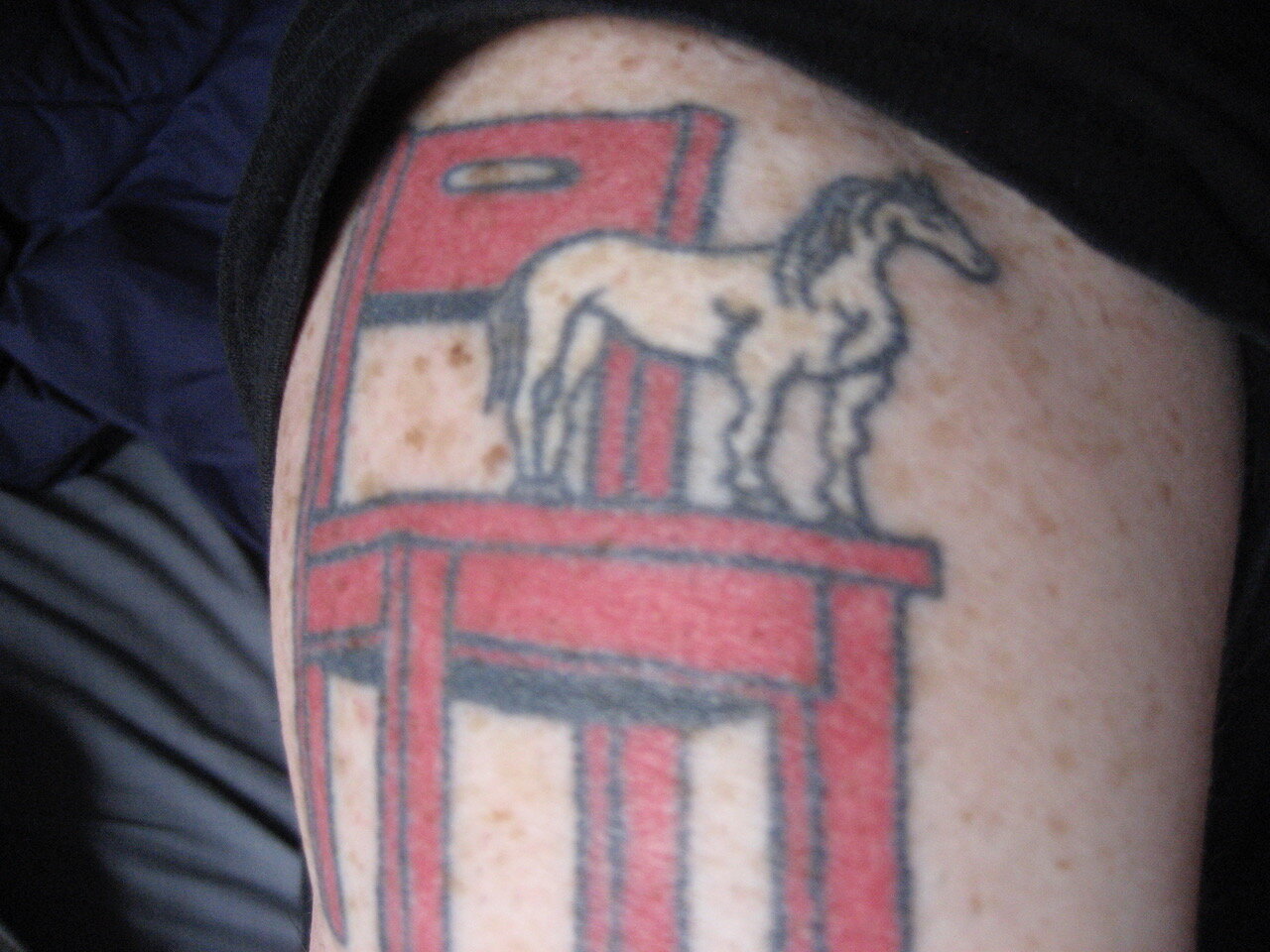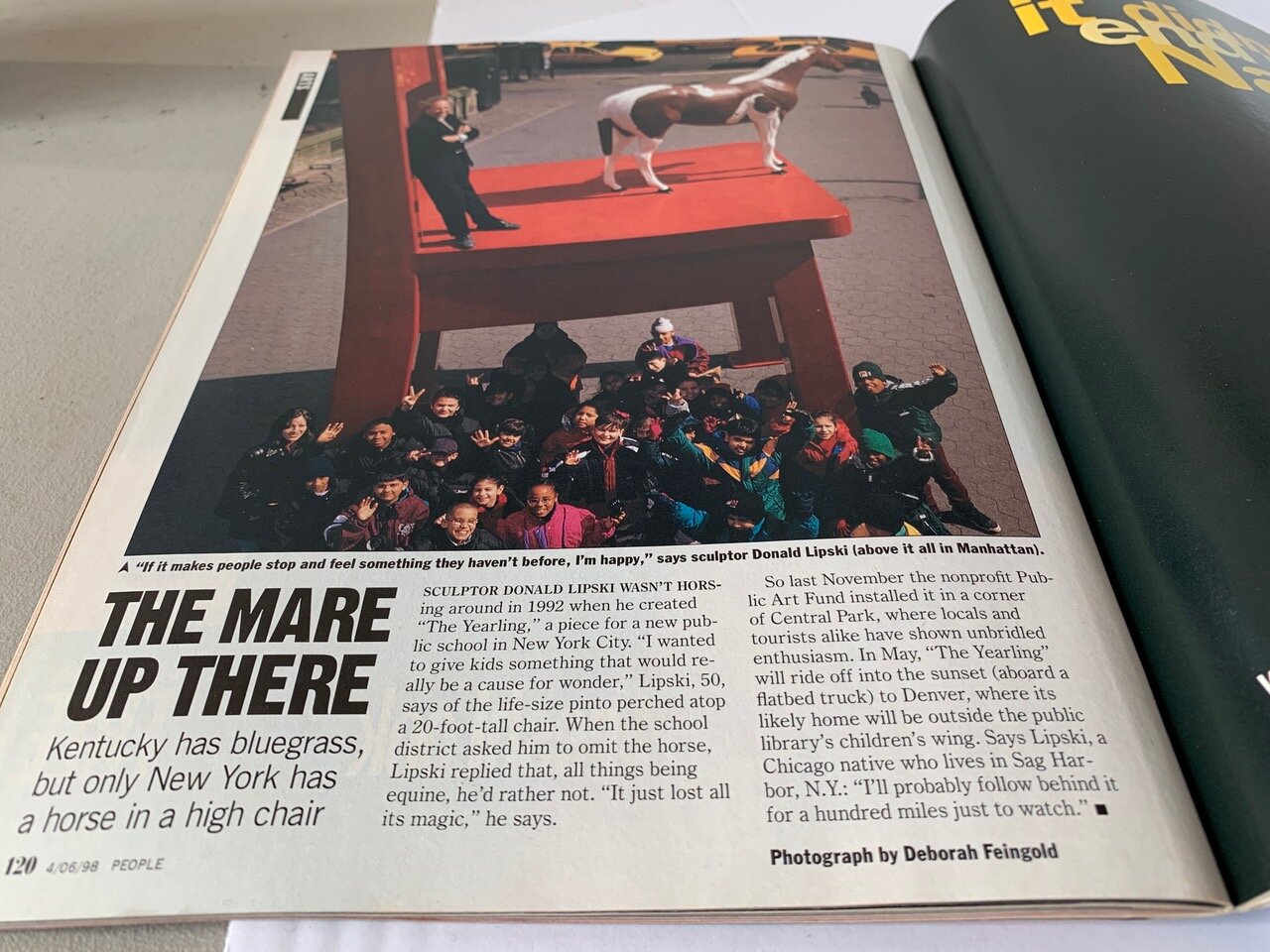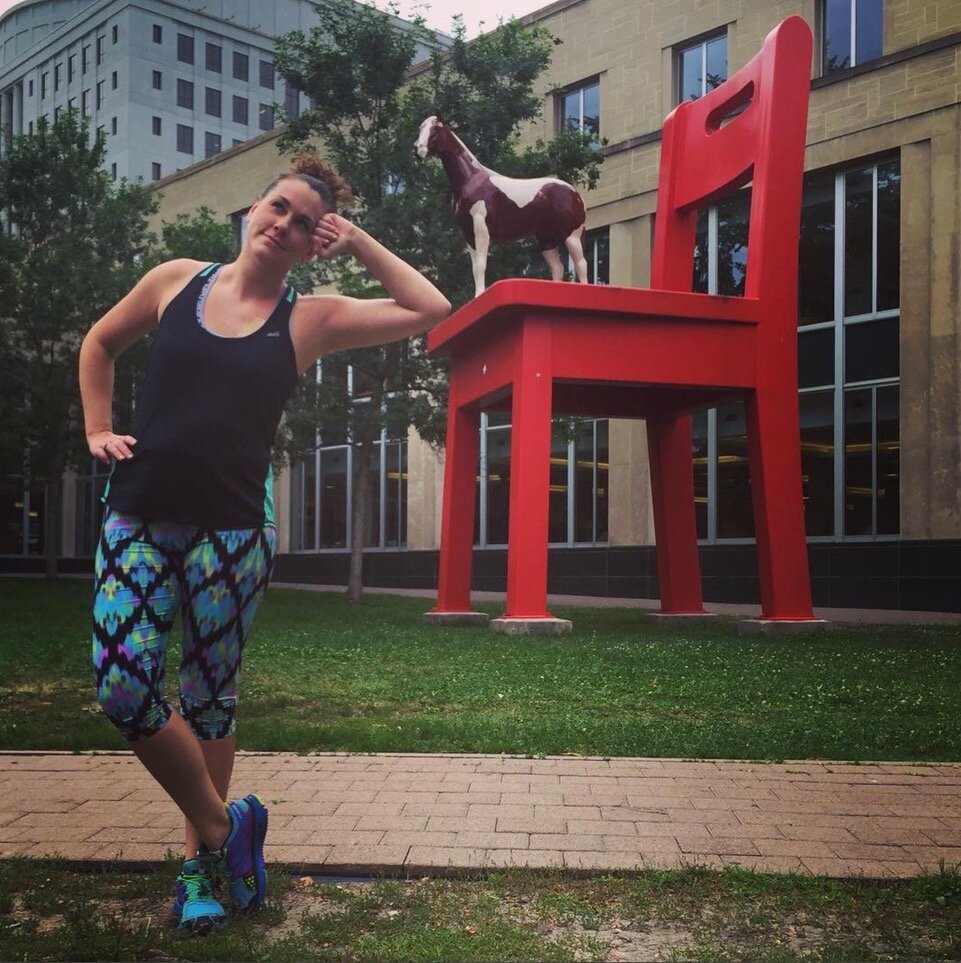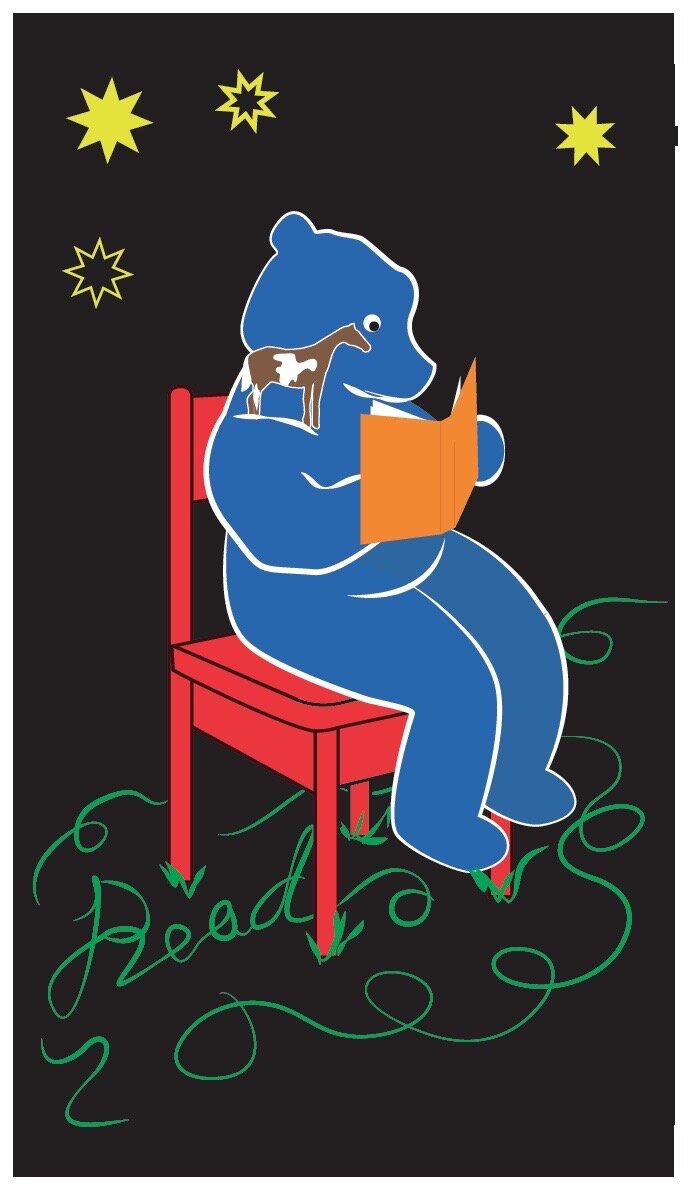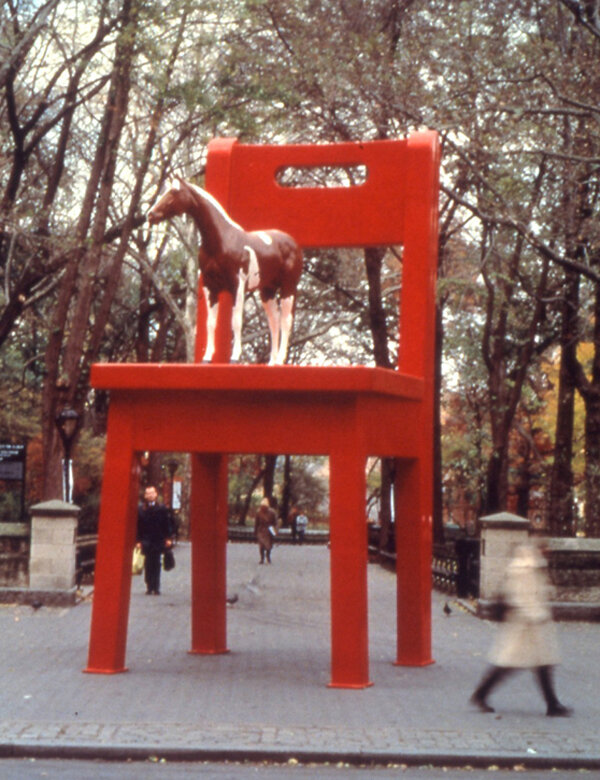In 2024 we worked on projects locally and nationally, engaging new artists, and enhancing spaces with artwork. The year started off with many trips back and forth to Milwaukee for the culmination of the two year process of overseeing the commissioning, curation, and fabrication of a new collection for the Baird Center expansion project. In total 30 artworks were commissioned through this process, a vast majority by local and regional artists as well as a few national artists.
Floe, Laura Haddad and Tom Drugan, 2024
The culminating collection expresses themes of community, nature, industry, local history, activism, athletics, and the diverse populations who have called this place home. These projects range from suspended installations, large-scale wall-mounted installations, paintings, light boxes, photography, mosaics, fiber-based works, wood-cut prints, digital prints, and mixed media works. To follow are a selection of these works.
Acknowledgment, Kevin J. Miyazaki, 2024, Photo courtesy of Kevin Miyazaki
Mister Paper Doll Lightbox, Reginald Baylor Studio, 2024, Photo courtesy of Frank Juárez/Artdose Magazine
Lady Paper Doll Lightbox, Reginald Baylor Studio, 2024, Photo courtesy of Frank Juárez/Artdose Magazine
eekuawlim, Jay Yan, 2024, Photo courtesy of Jay Yan
eekuawlim (detail), Jay Yan, 2024, Photo courtesy of Jay Yan
A Pattern of Families Divided by the Greater > Than, A Pattern of Families Divided by the Less < Than, David Najib Kasir, 2024, Photo courtesy of Frank Juárez/Artdose Magazine
Great Water, Ben Butler, 2024, Photo courtesy of Frank Juárez/Artdose Magazine
Bradford Beach, Mark Brautigam, 2023, Photo courtesy of Frank Juárez/Artdose Magazine
Honeyed, Nova Czarnecki, 2024, Photo courtesy of Frank Juárez/Artdose Magazine
The Great Unthawing, Nova Czarnecki, 2024, Photo courtesy of Frank Juárez/Artdose Magazine
In May, New Mexico based artist Paula Castillo’s sculpture Equis was installed. This is the first of three iconic sculptures she’s designed for the shared Denver Art Museum and Denver Central Library Campus. Equis, a significant beacon made from stainless steel and dichroic glass, not only succinctly communicates the Indigenous American intersection with the 16th-century Columbian exchange but also serves as a symbol of the library's active commitment to community equity as evidenced by the library's notable community-oriented renovations.
Equis, Paula Castillo, 2024, Photo couresy of Paula Castillo
In September, Paula’s sculpture Glyph, the second in the series of three sculptures, was installed outside the entrance to the Denver Art Museum’s Ponti building at the corner of West 14th Avenue and Bannock Street. This work elevates a metamorphosis of a Meso-American motif in conversation with the reinvigorated Ponti building and the Beaux-arts narrative at Civic Center Park.
Glyph, Paula Castillo, 2024, Photo couresy of Paula Castillo
Matthew Mazzotta’s VOTE! was unveiled at the newly constructed Palm Beach County Supervisor of Elections Building in West Palm Beach, Florida in advance of the election.
In the artist’s words, “At the heart of our voting process, we are a collection of unique individuals with a diverse range of experiences, but together we make the world we live in. Voting shapes day-to-day life in the US, however, the actions and policies of America extend to all reaches of the globe. As we become more and more aware of how interconnected we all are, we see the direct implications of our decisions on a global level, impacting all living creatures around the world. VOTE! urges us to consider the weight of voting on behalf of the people and beings who cannot vote but are affected by what we decide, for example, what would be on Nature's mind if it had a chance to vote?”
VOTE!, Matthew Mazzotta, 2024, Photo courtesy of Robin Hill
Parterre, Kim Dickey, 2024, Photo courtesy of Shana McCaw & Brent Budsberg
In October we found overselves back in Milwaukee to install the final artwork for the Baird Center’s We Energies Art Collection by Colorado based artist Kim Dickey. Parterre, created in 2012 is a 15’ x 15’ wall-mounted terra cotta sculpture that features a circular (compass-like) formal garden maze embedded with airfield iconography (runways, signage, airplanes) and aims to re-envision the airfield as ‘field’ or formal garden. This impressive work can be found on the 3rd level mezzanine of the new north building expansion.
Visit the Projects In Progress section of our website for a glimpse at what’s to come in the year ahead.
Happy New Year!



